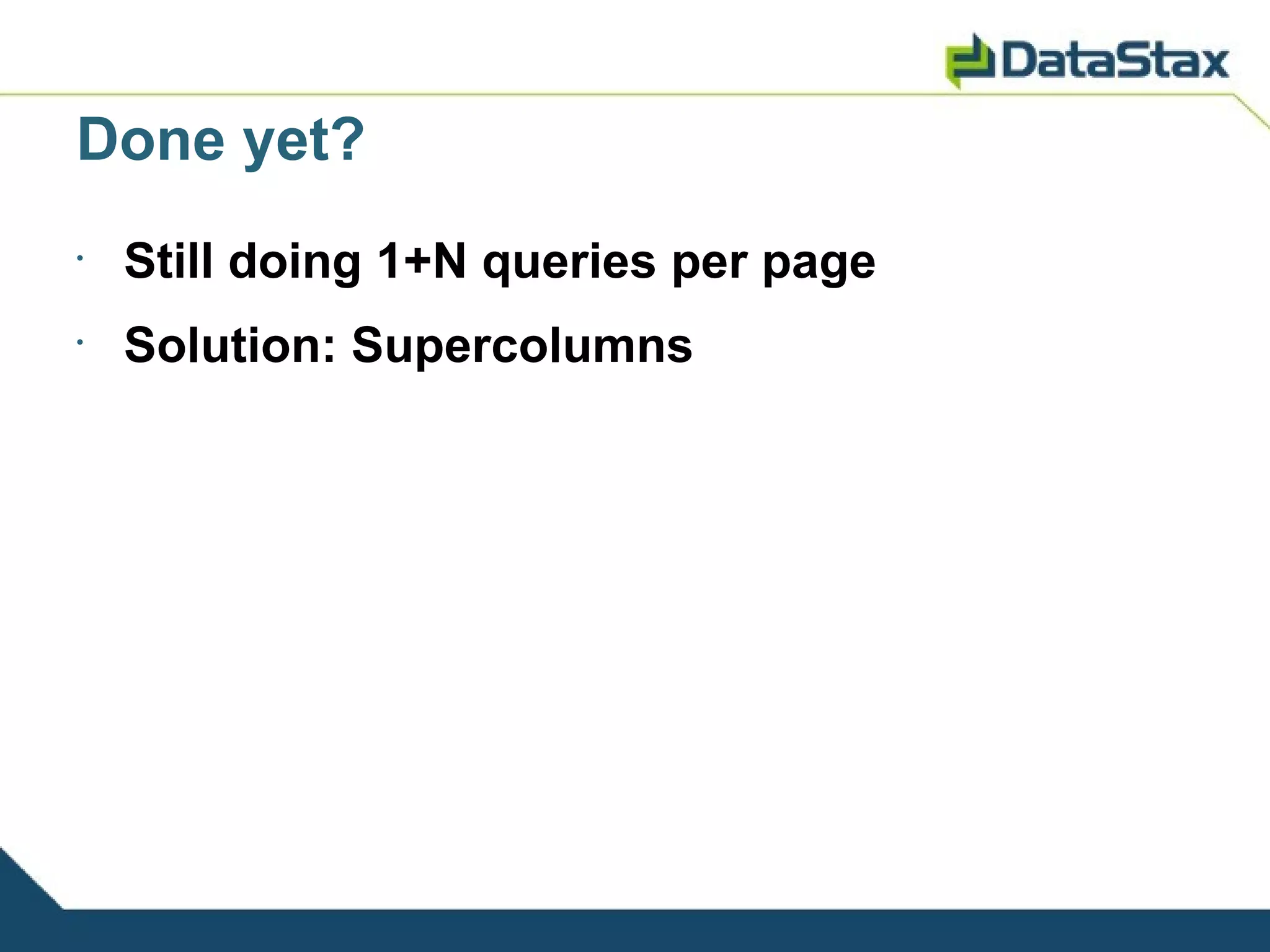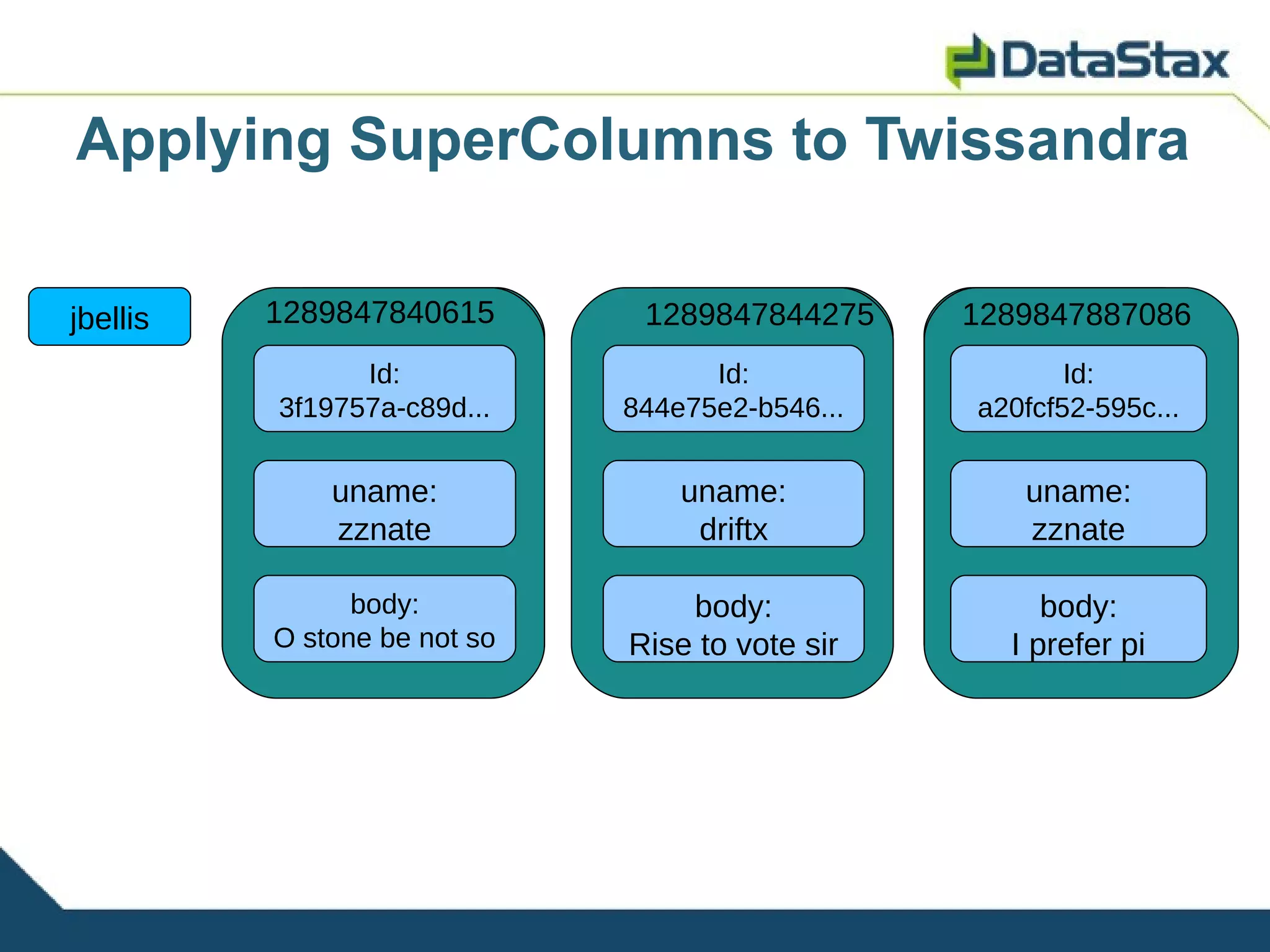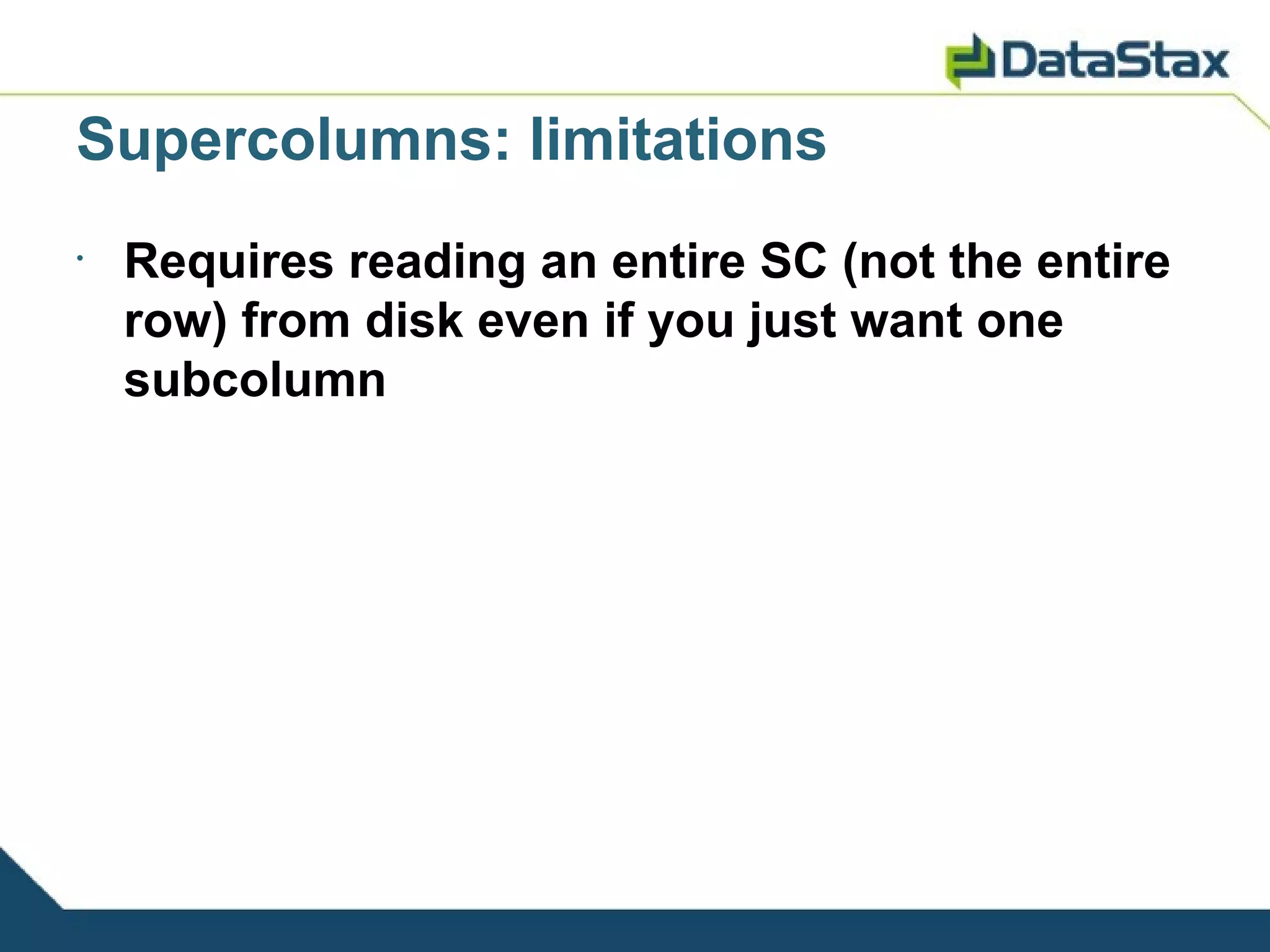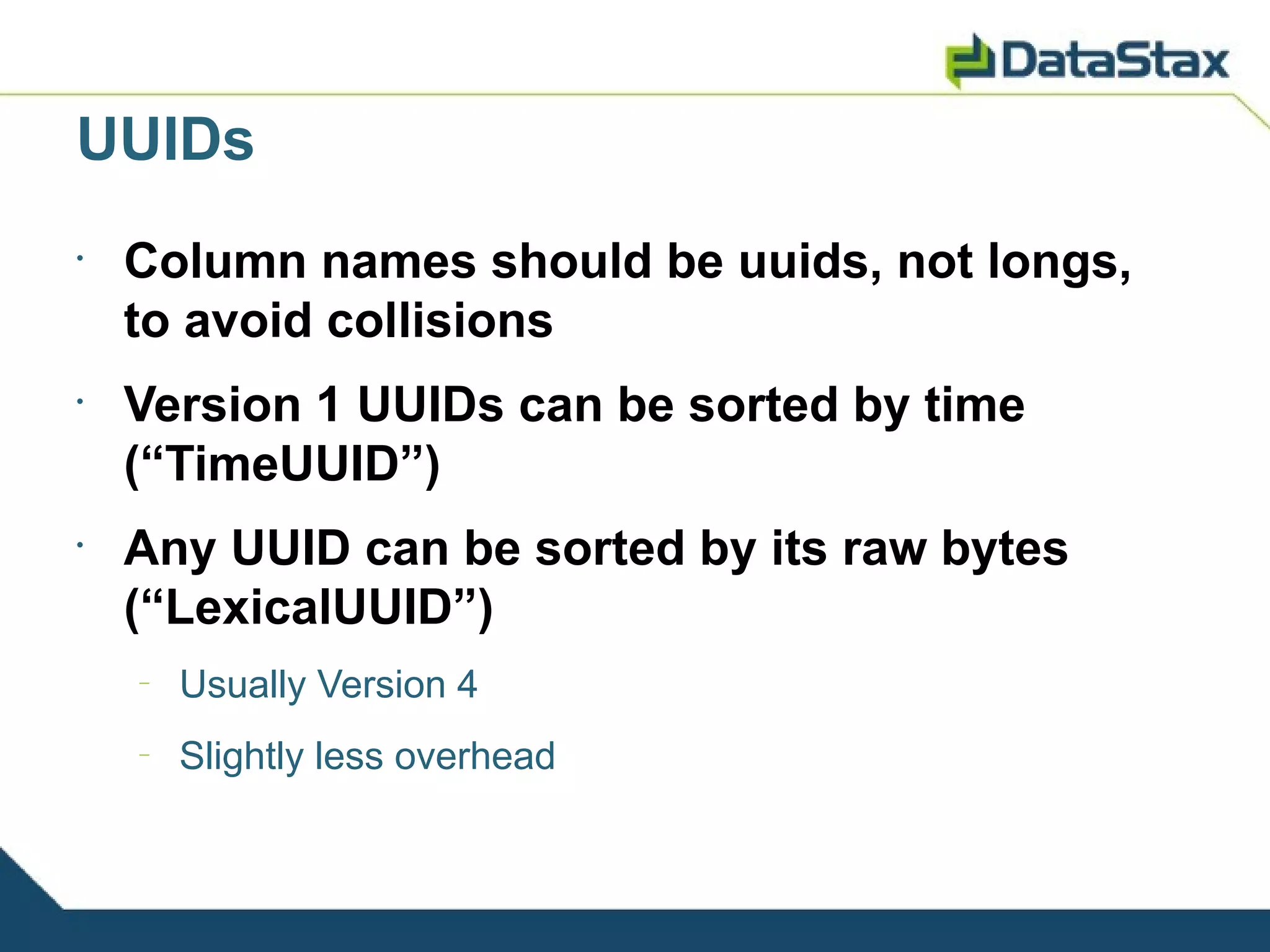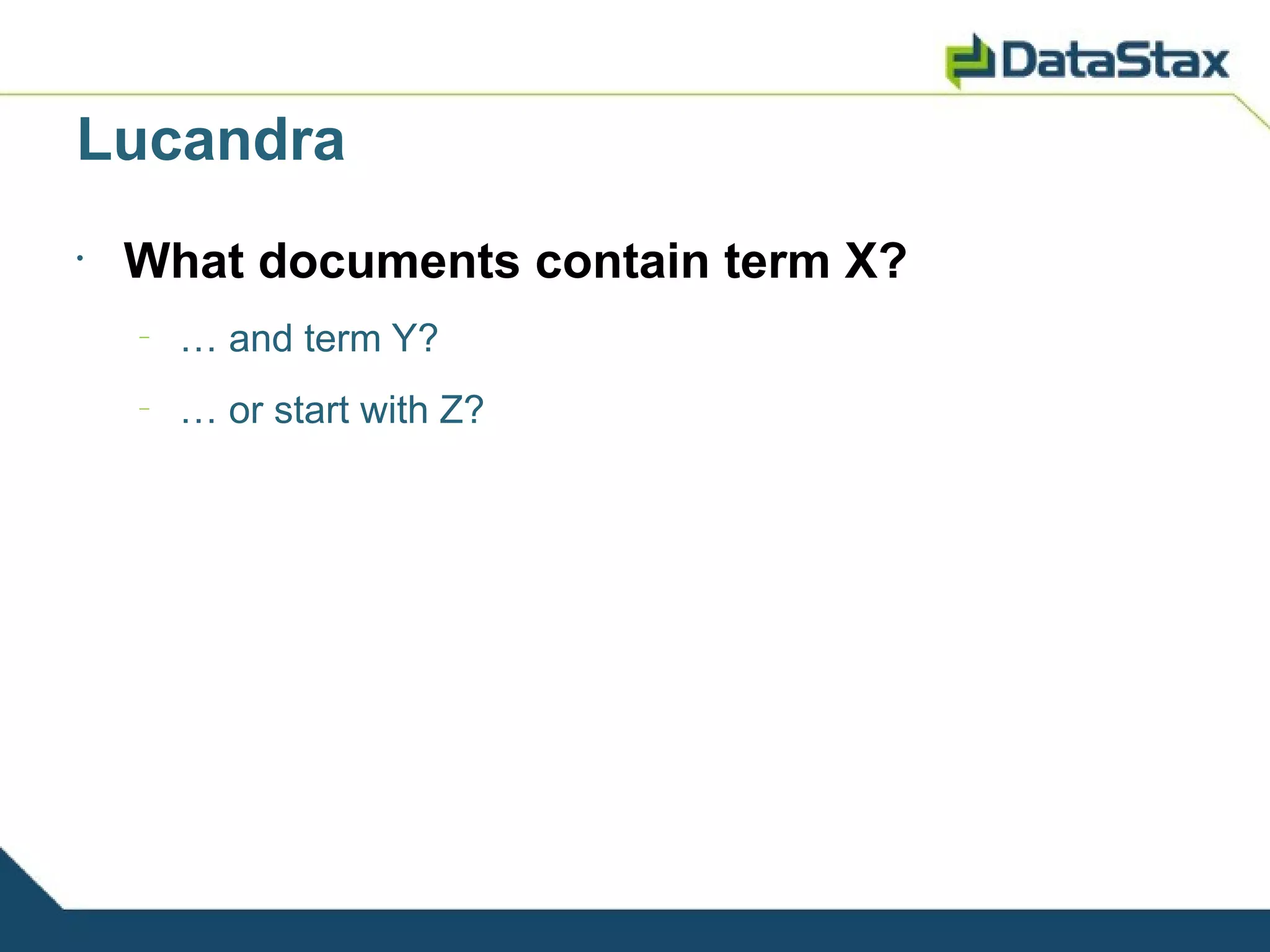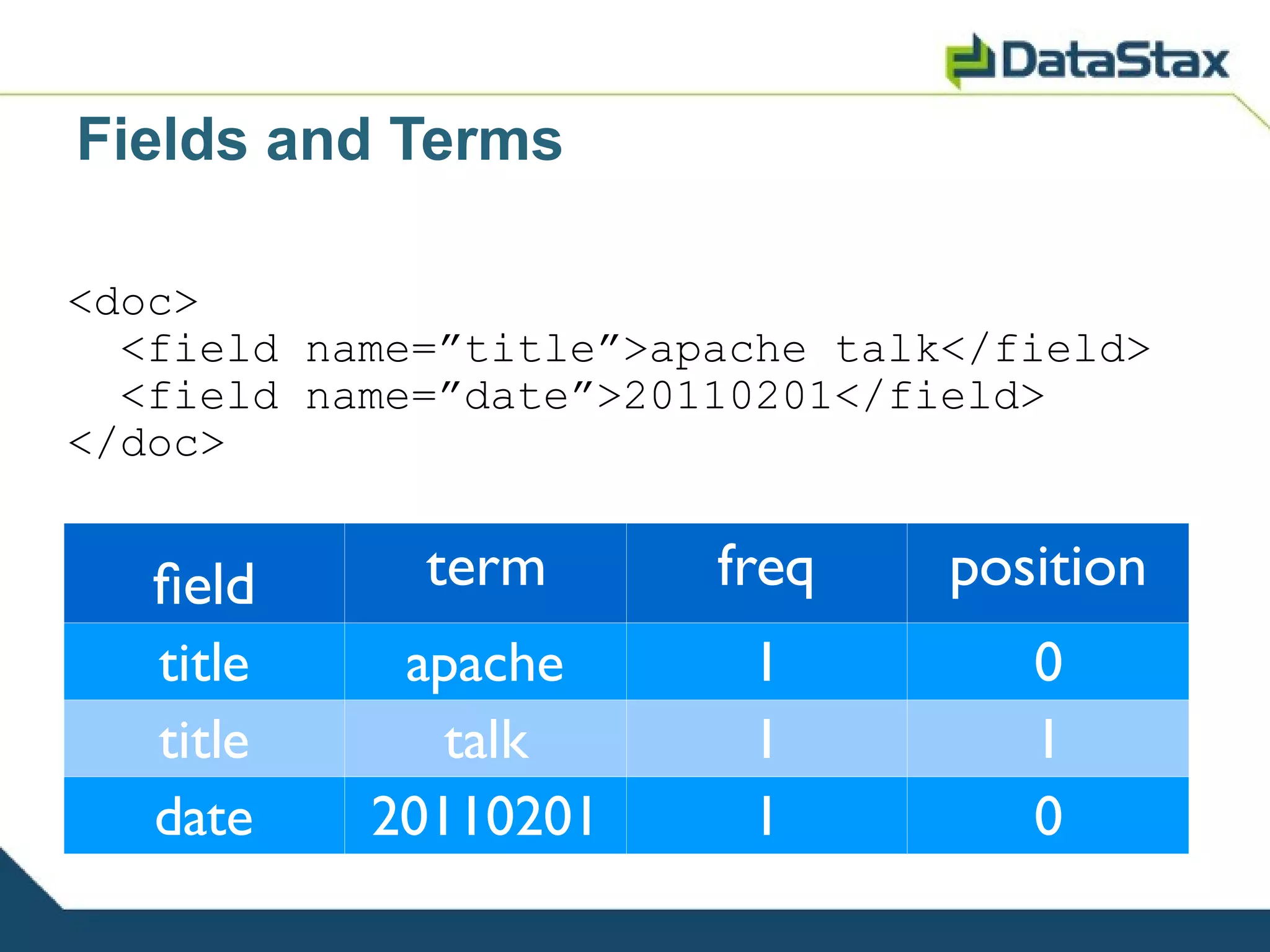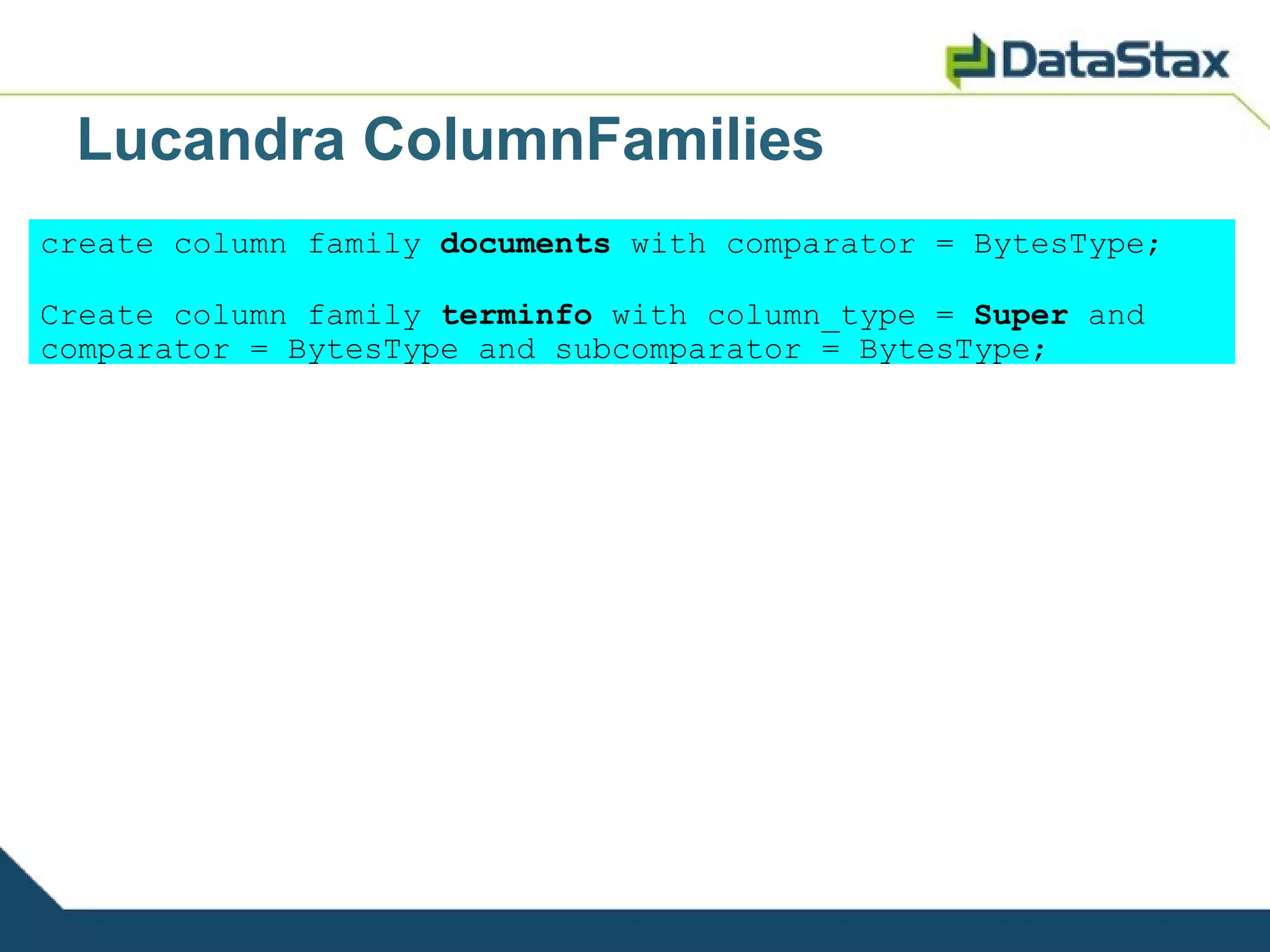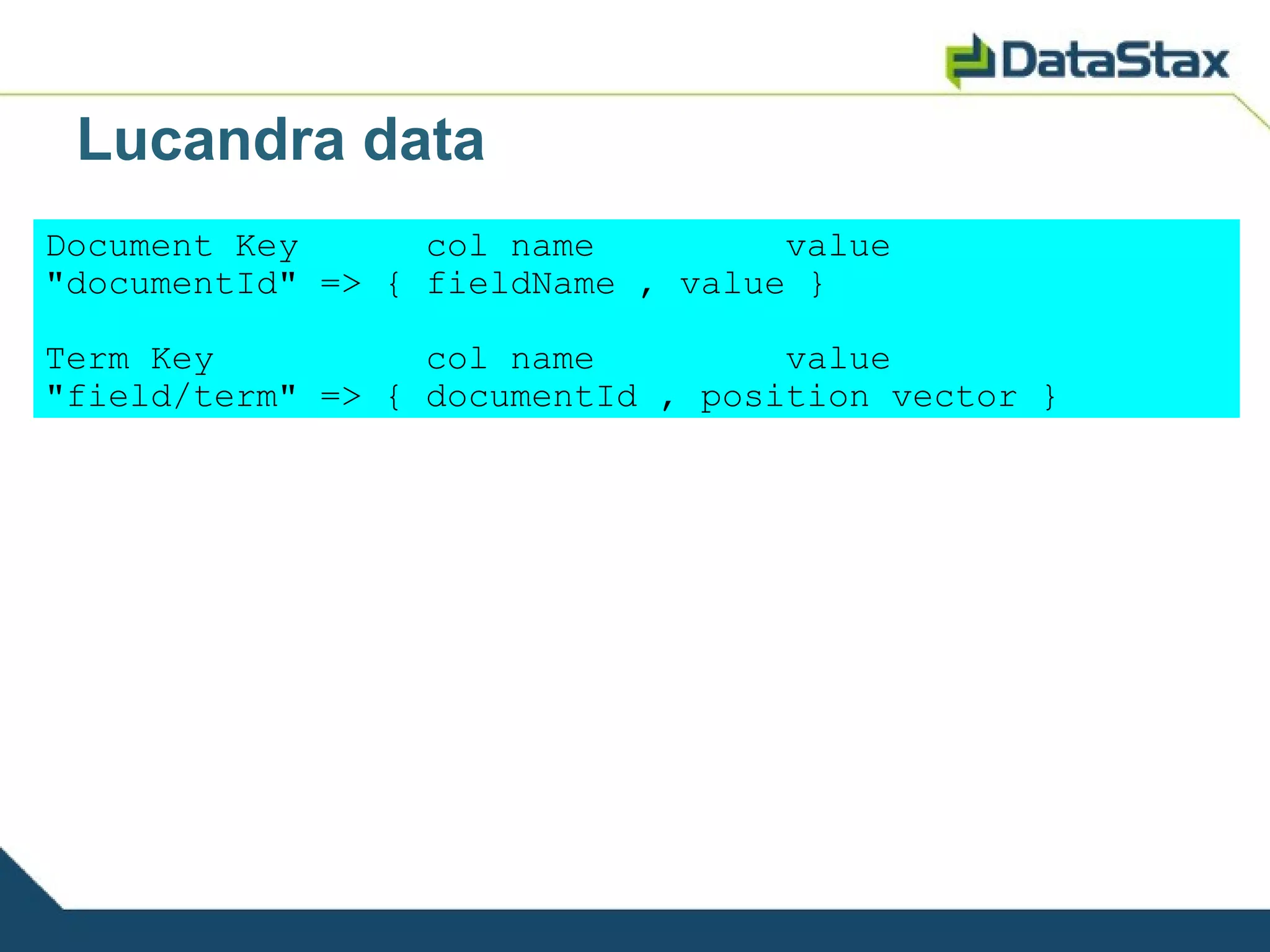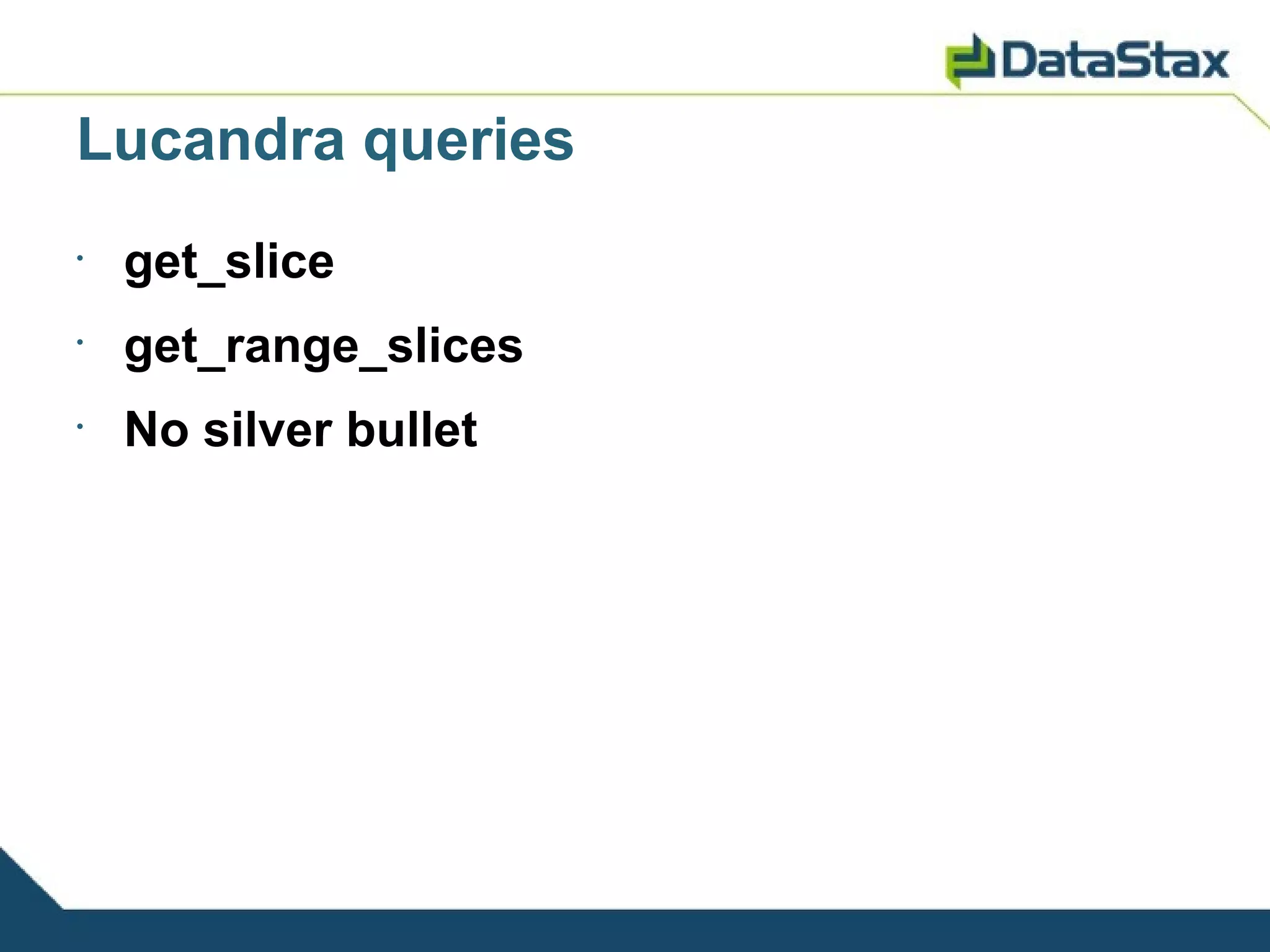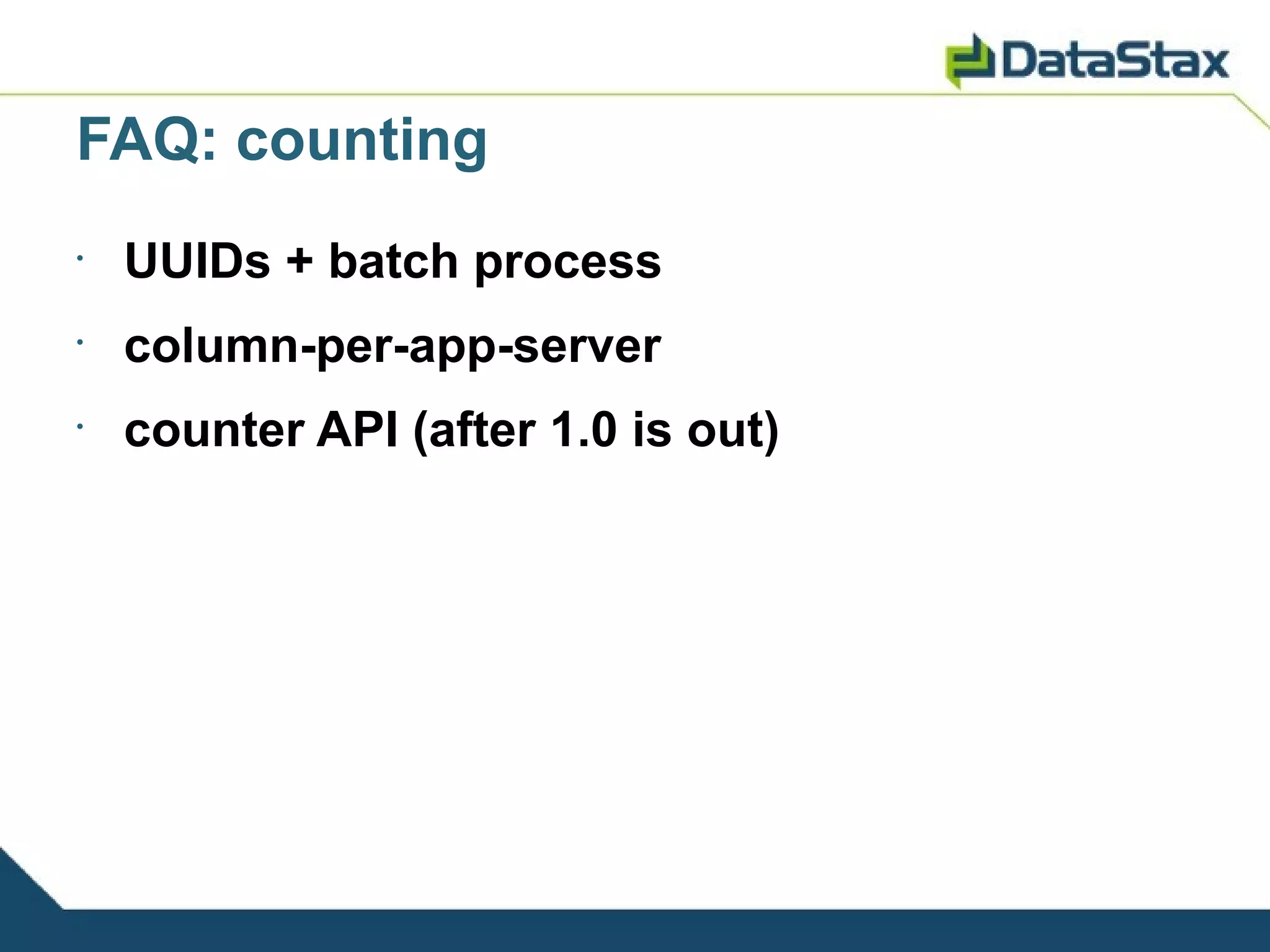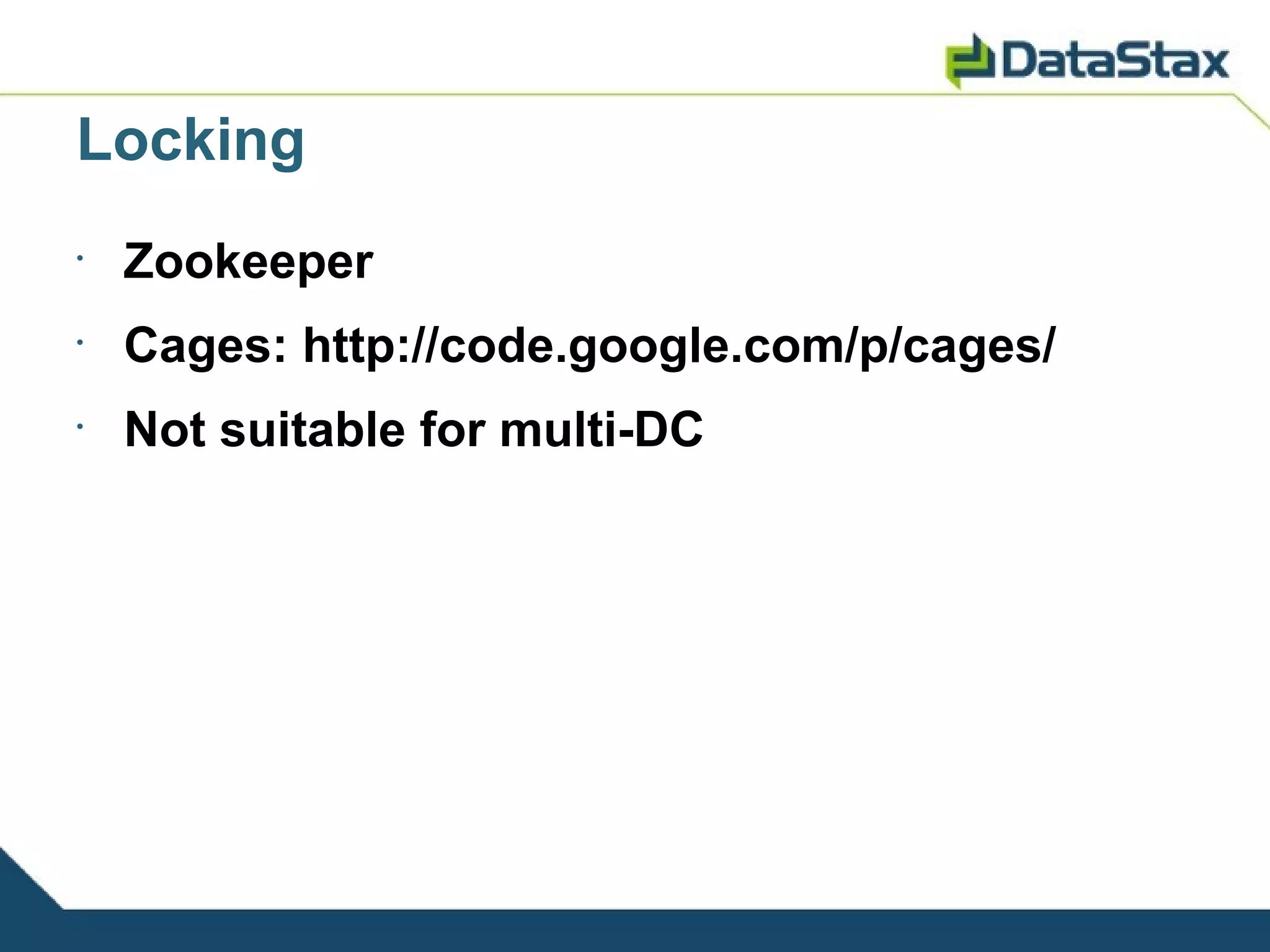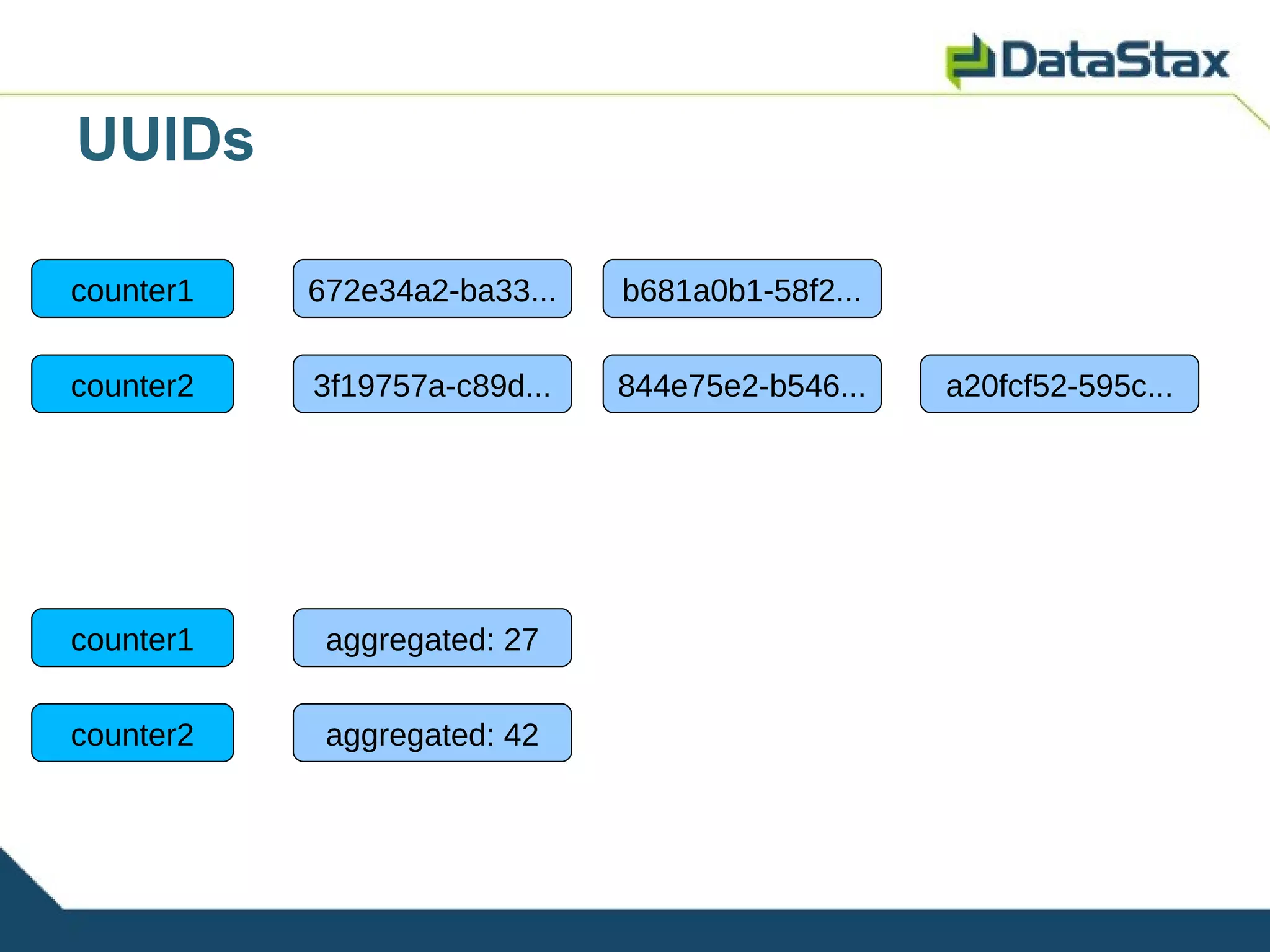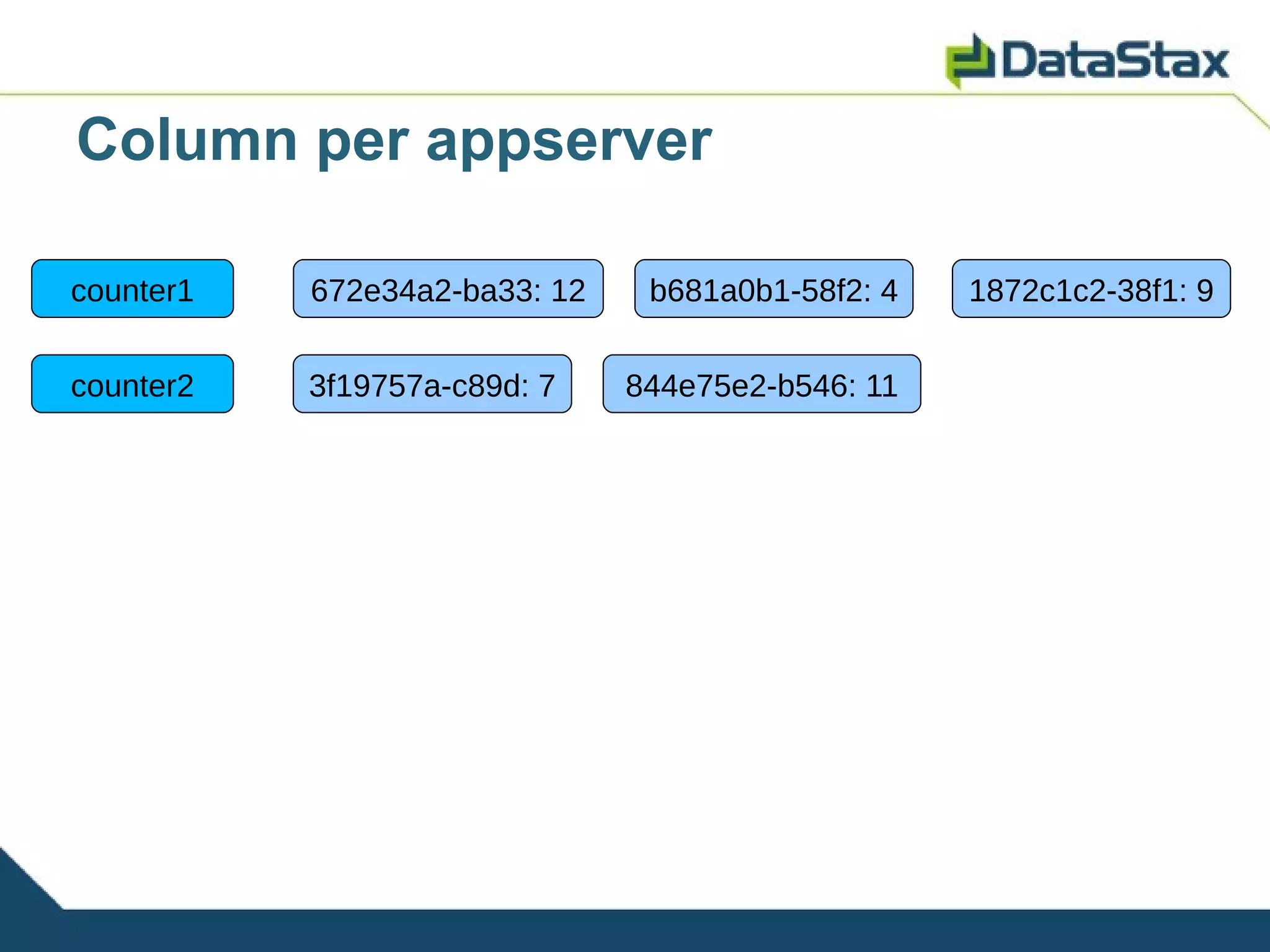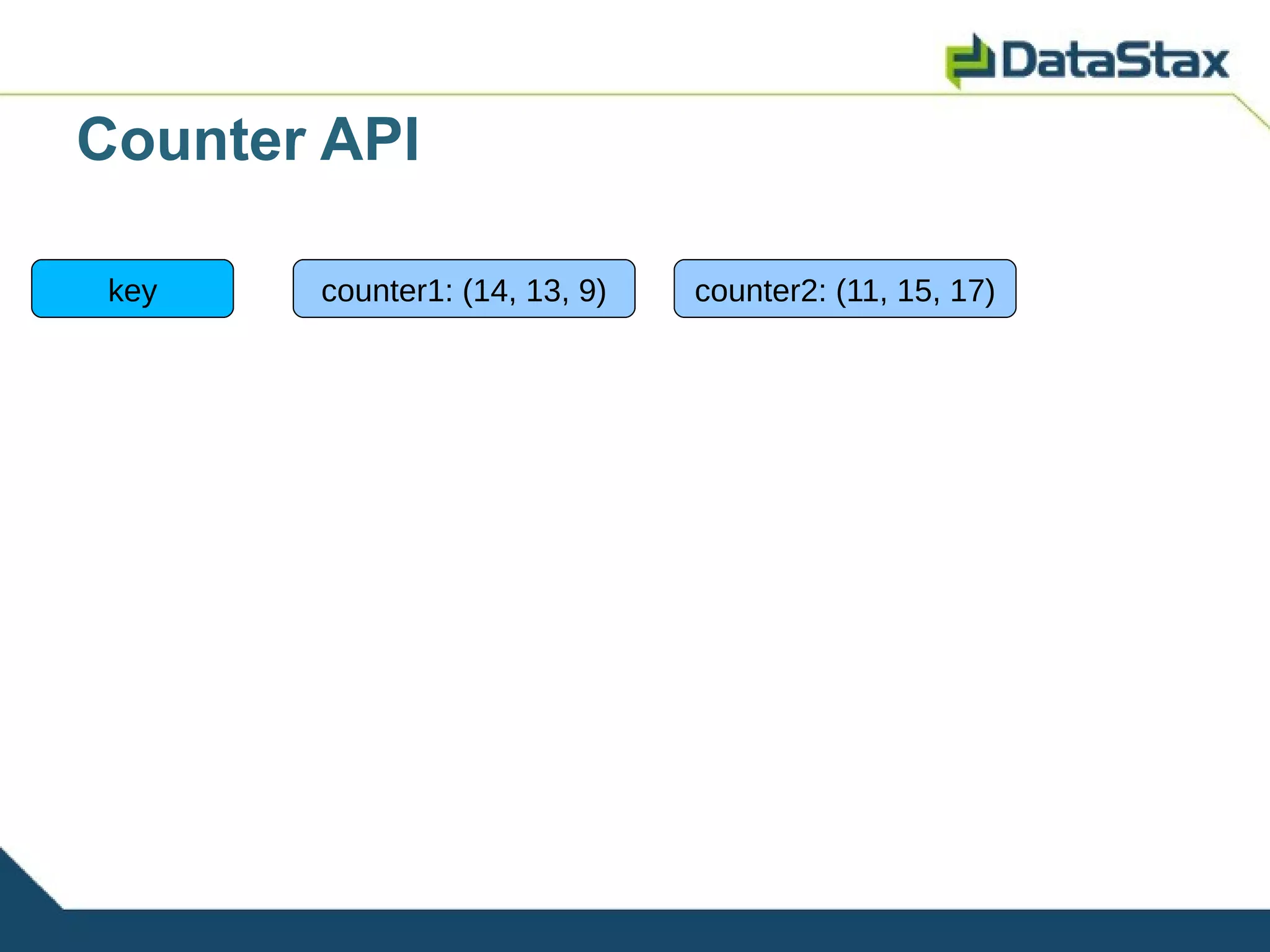This document provides an overview of Apache Cassandra and how it can be used to build a Twitter-like application called Twissandra. It describes Cassandra's data model using keyspaces and column families, and how they can be mapped to represent users, tweets, followers, and more. It also shows examples of common operations like inserting and querying data. The goal is to illustrate how Cassandra addresses issues like scalability and availability in a way relational databases cannot, and how it can be used to build distributed, highly available applications.

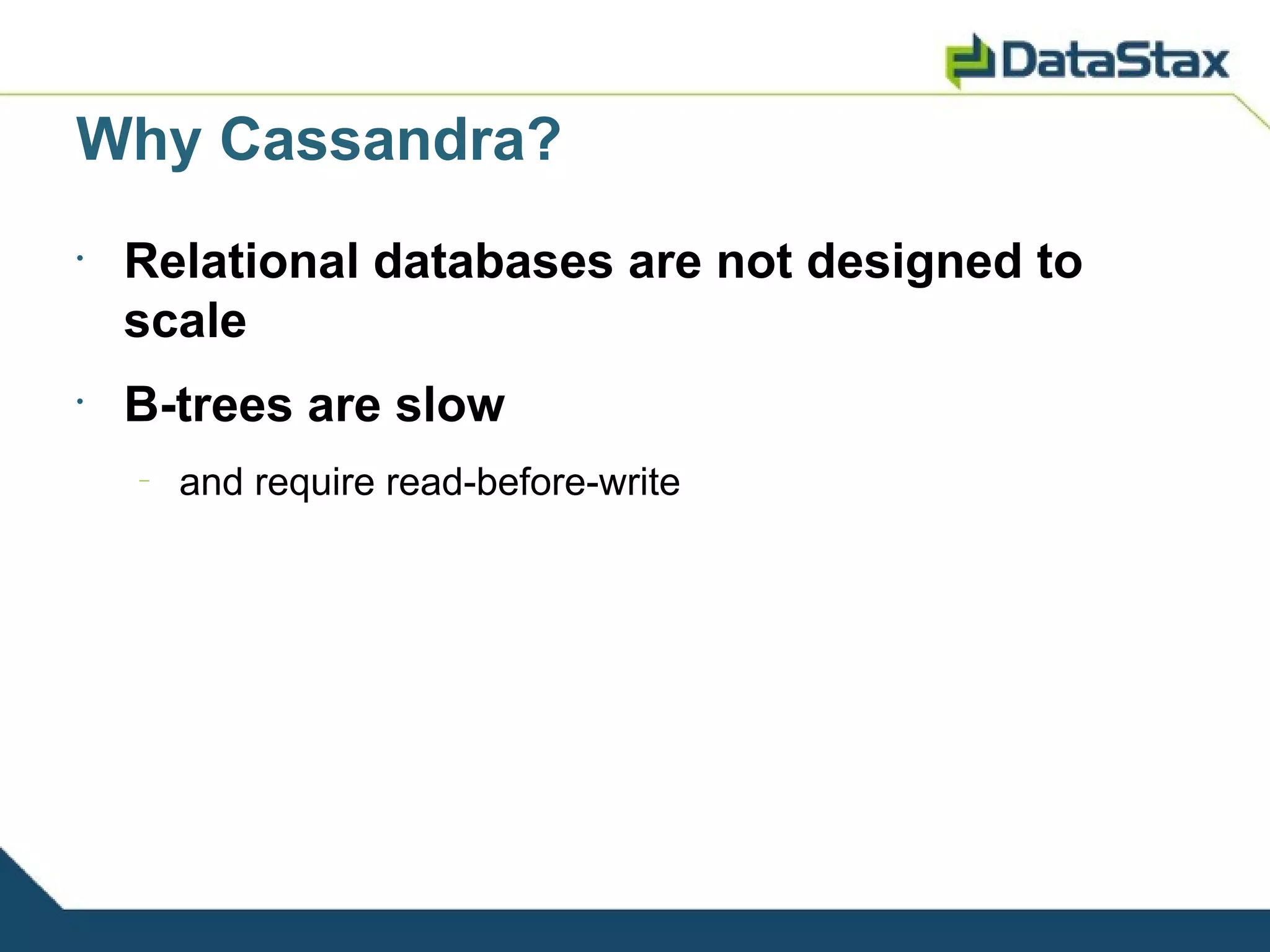
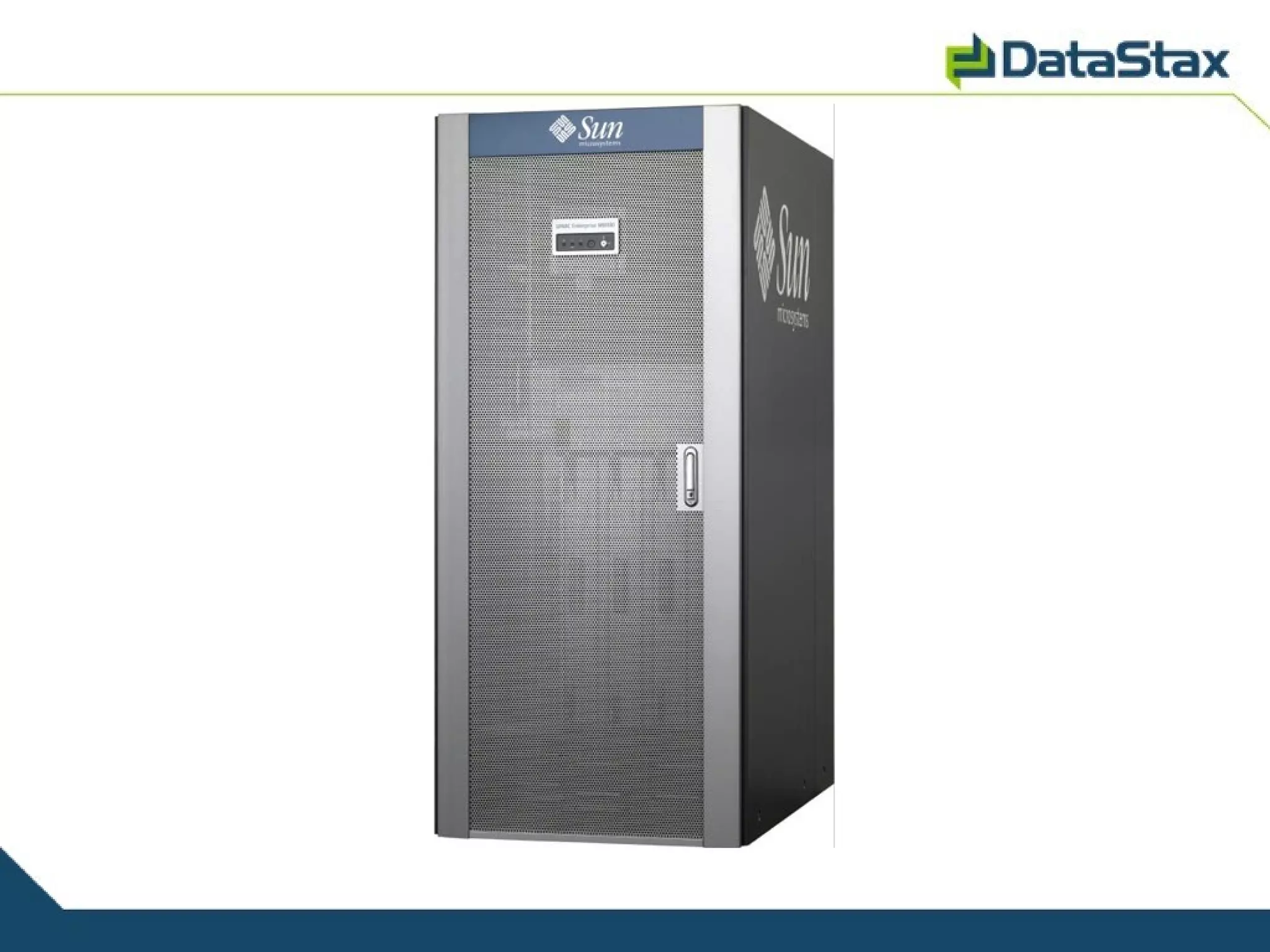
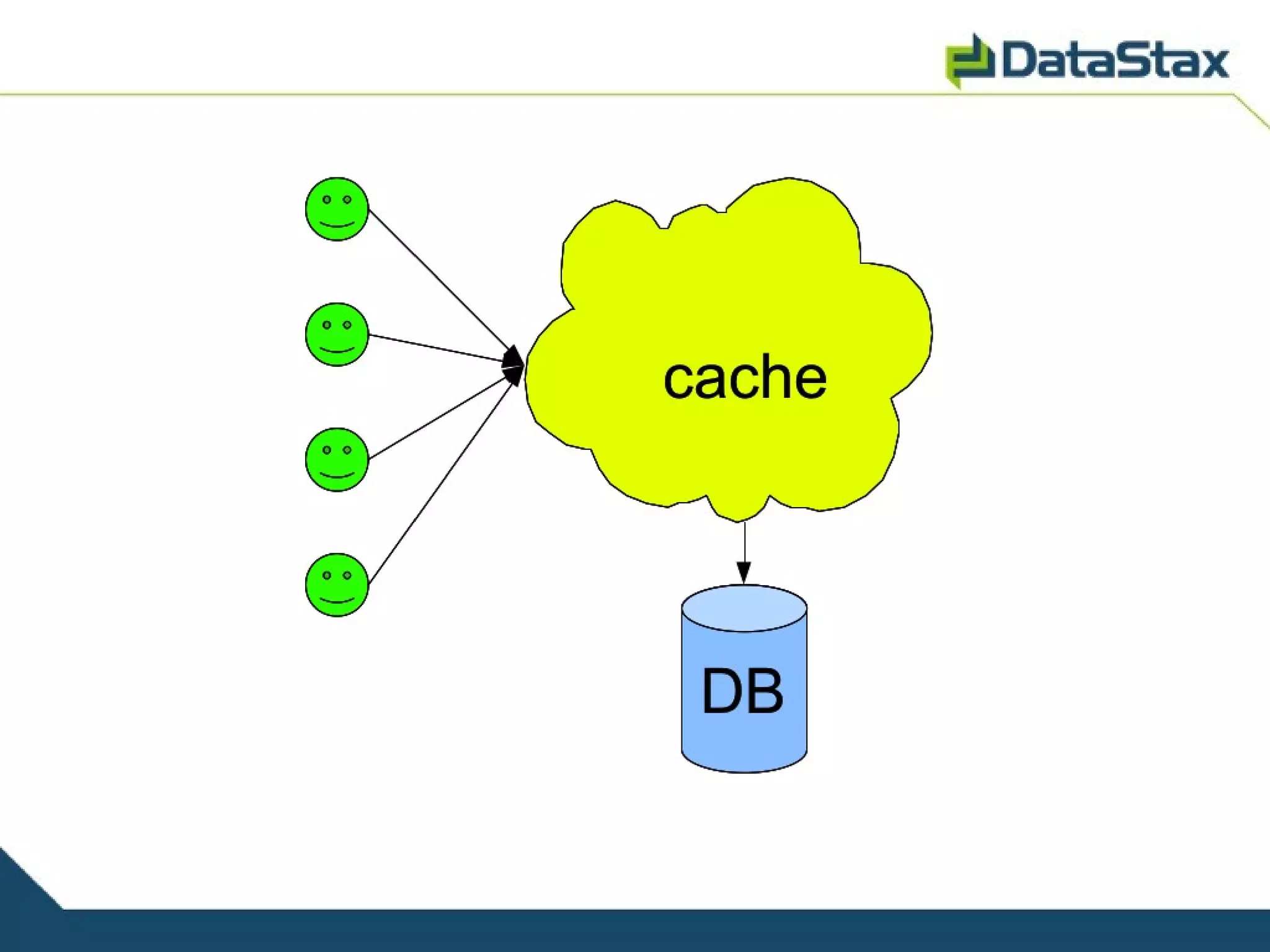
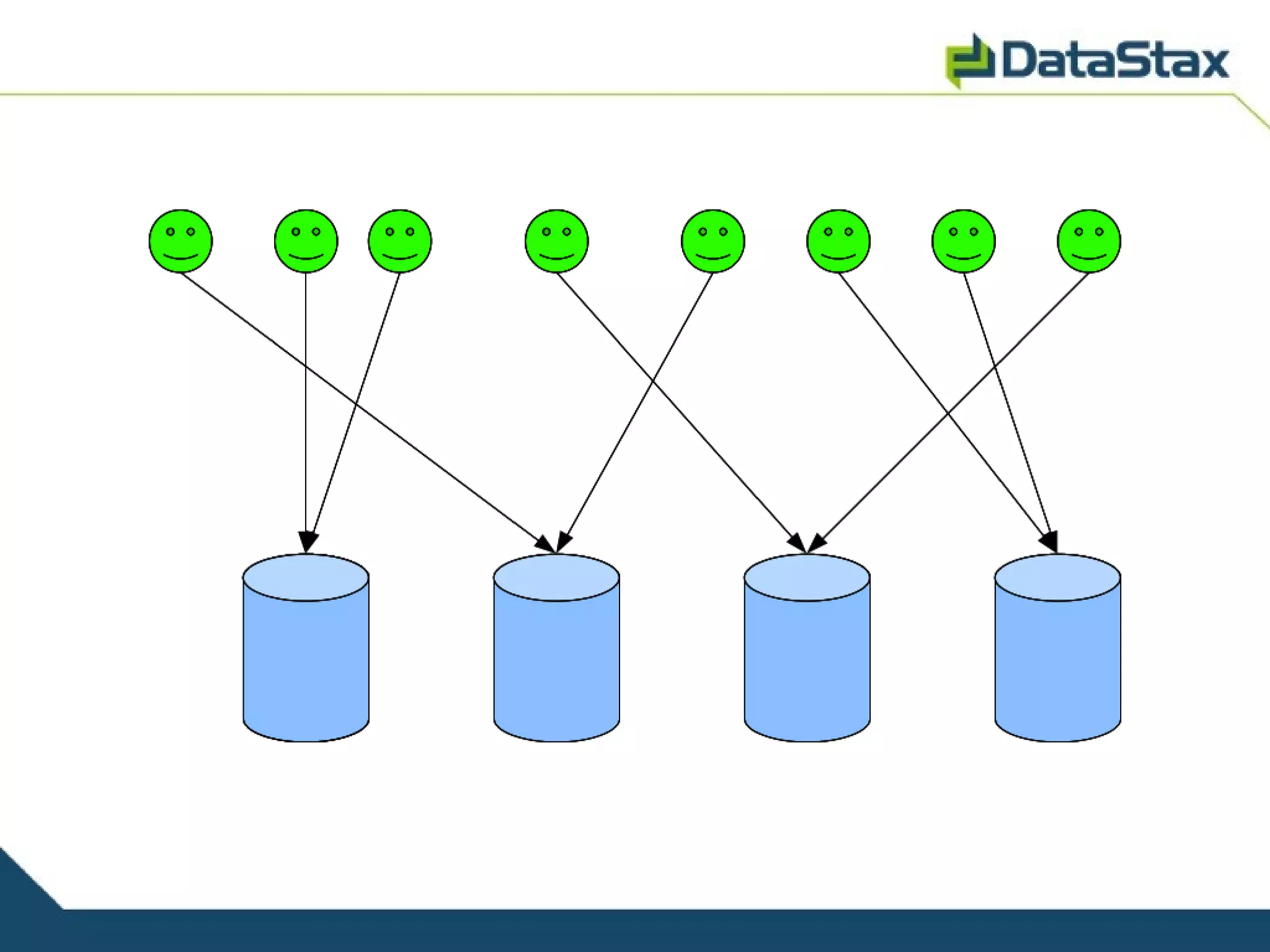
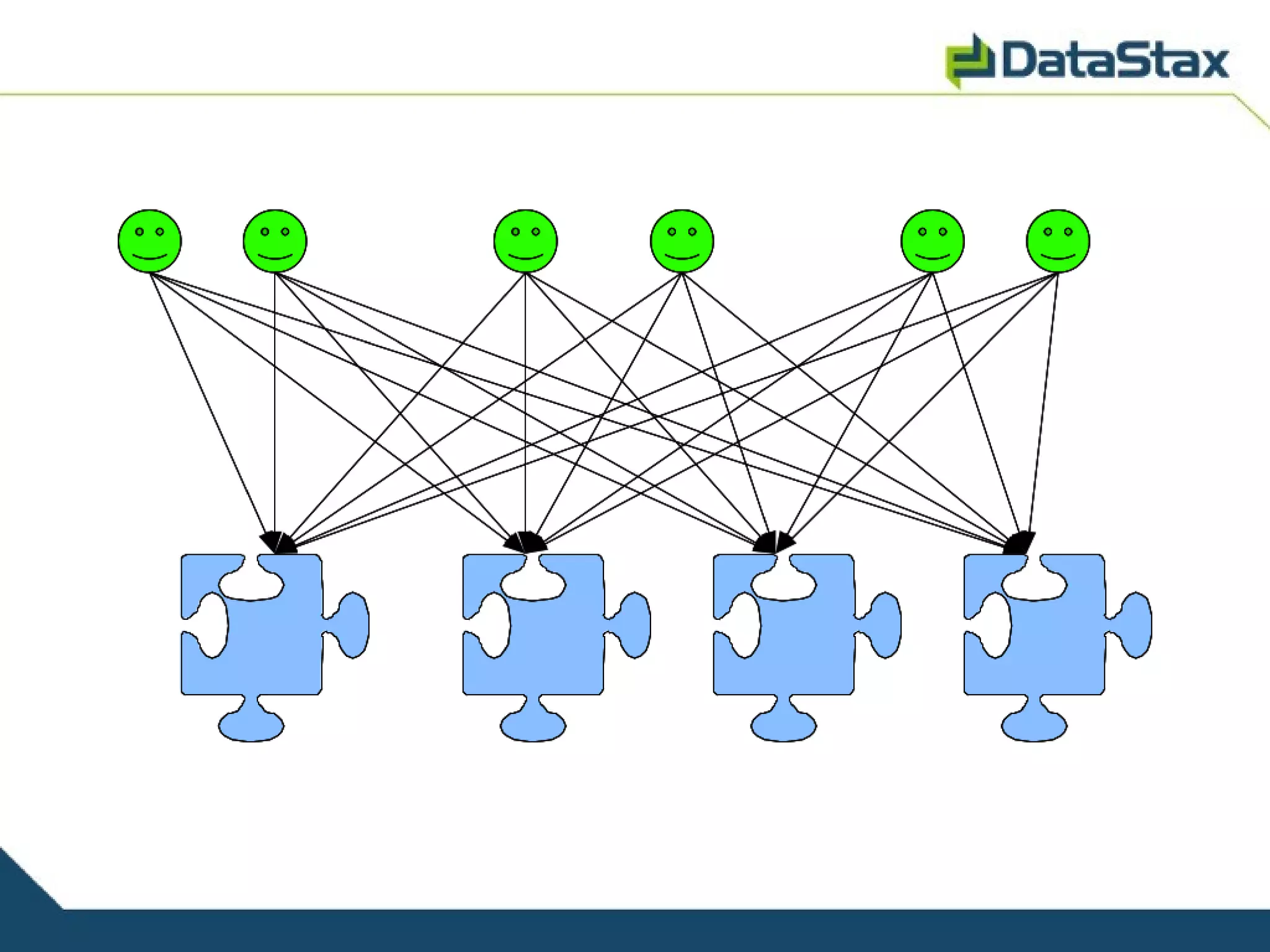
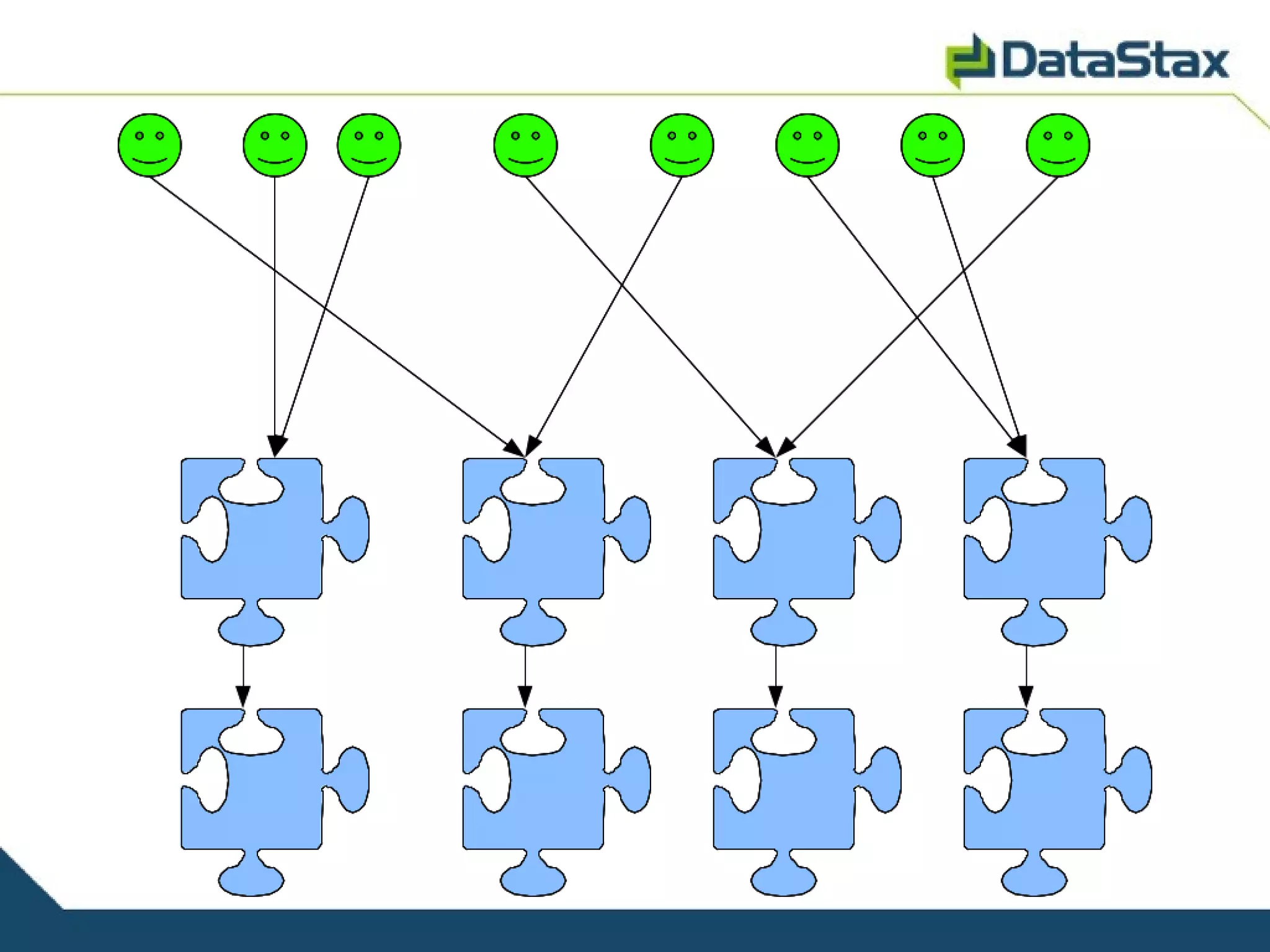
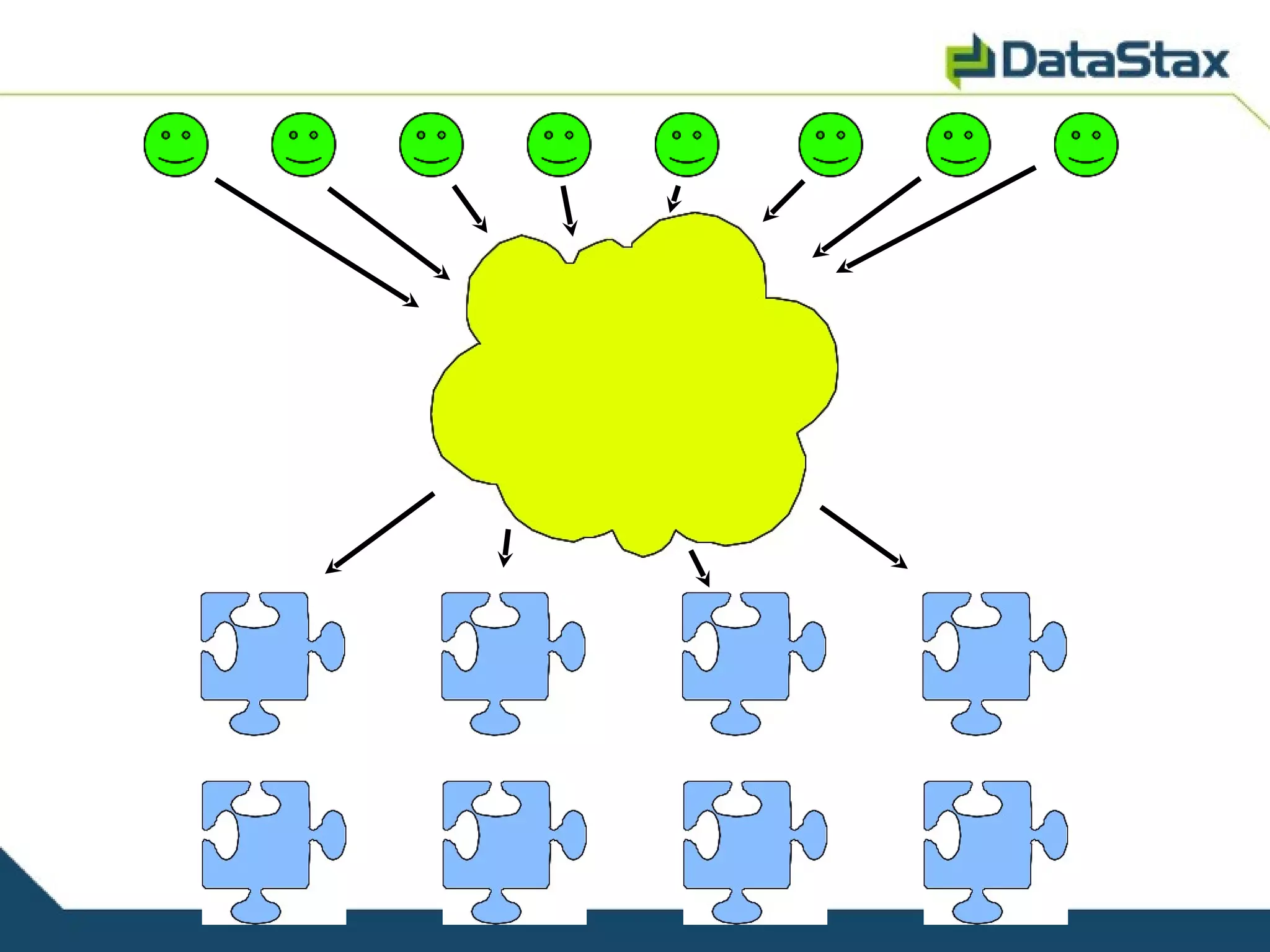
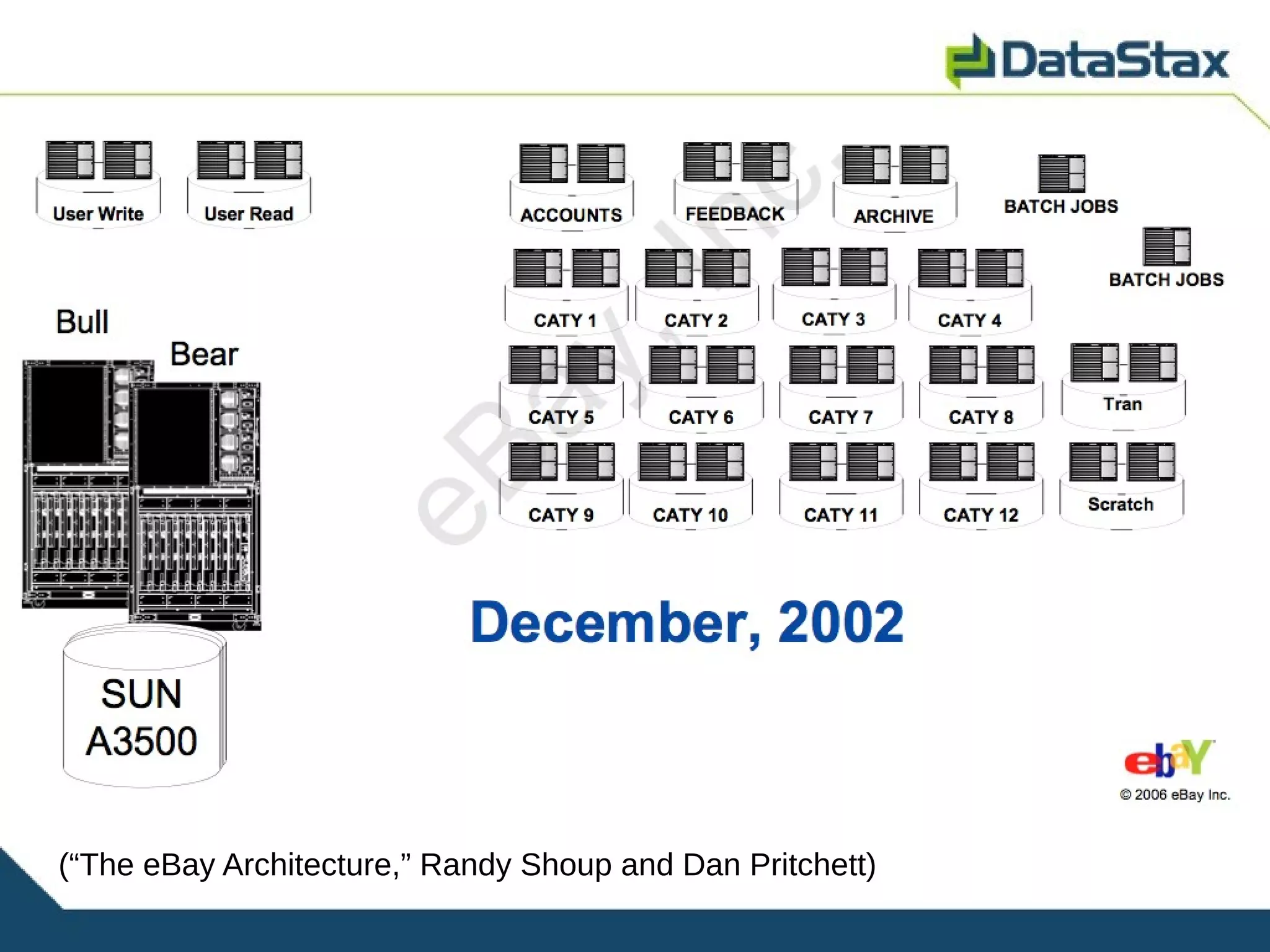



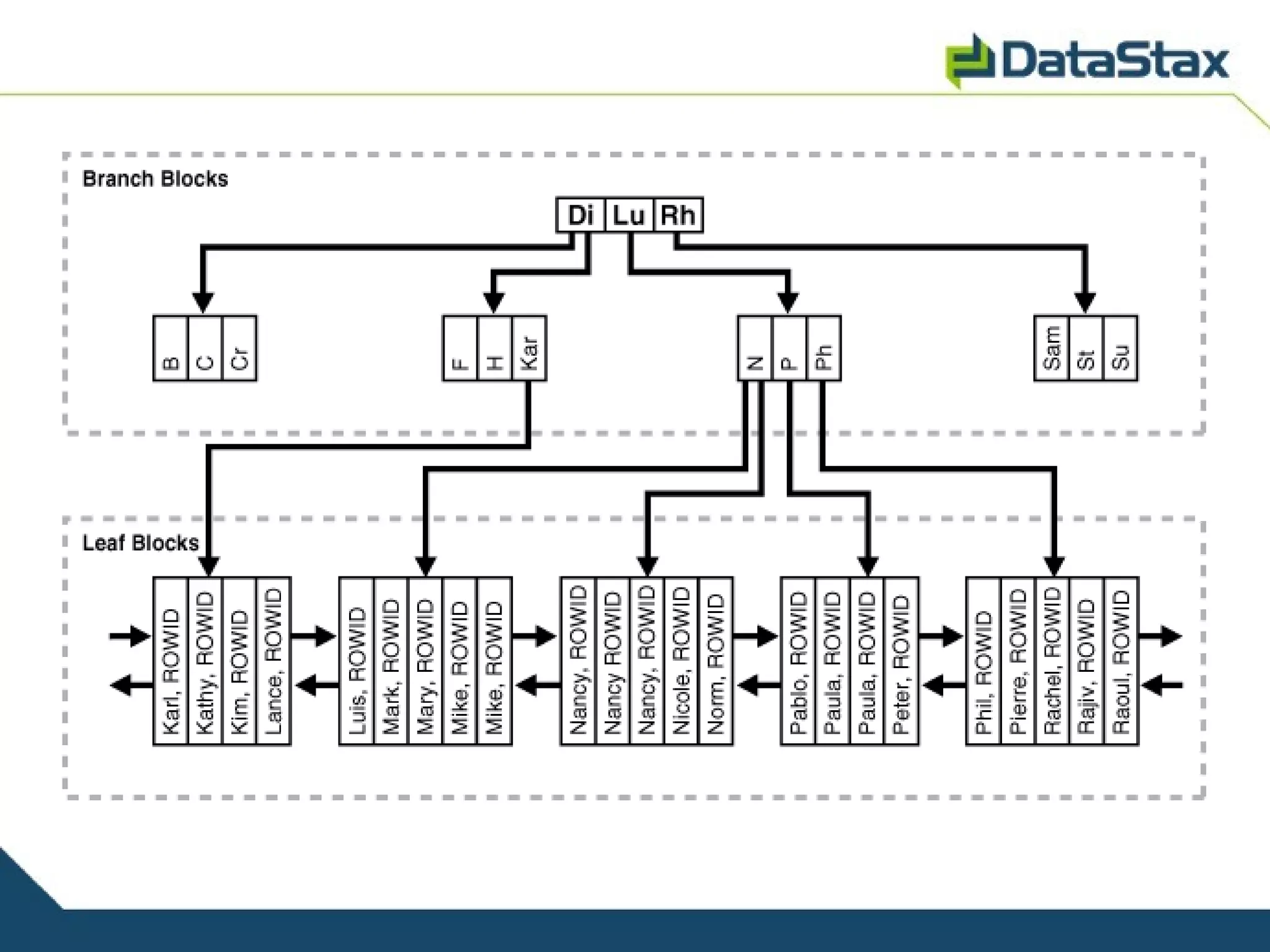
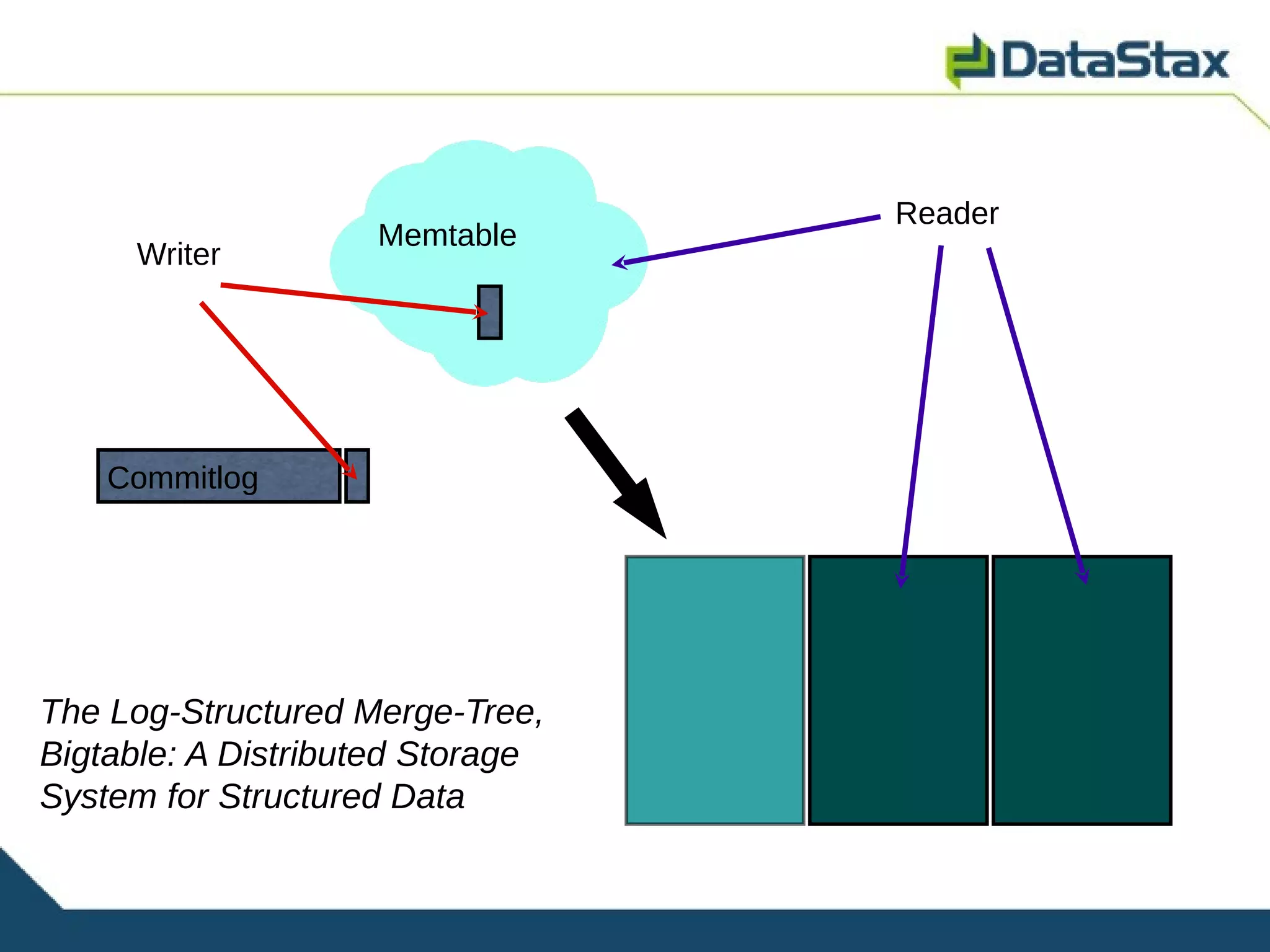


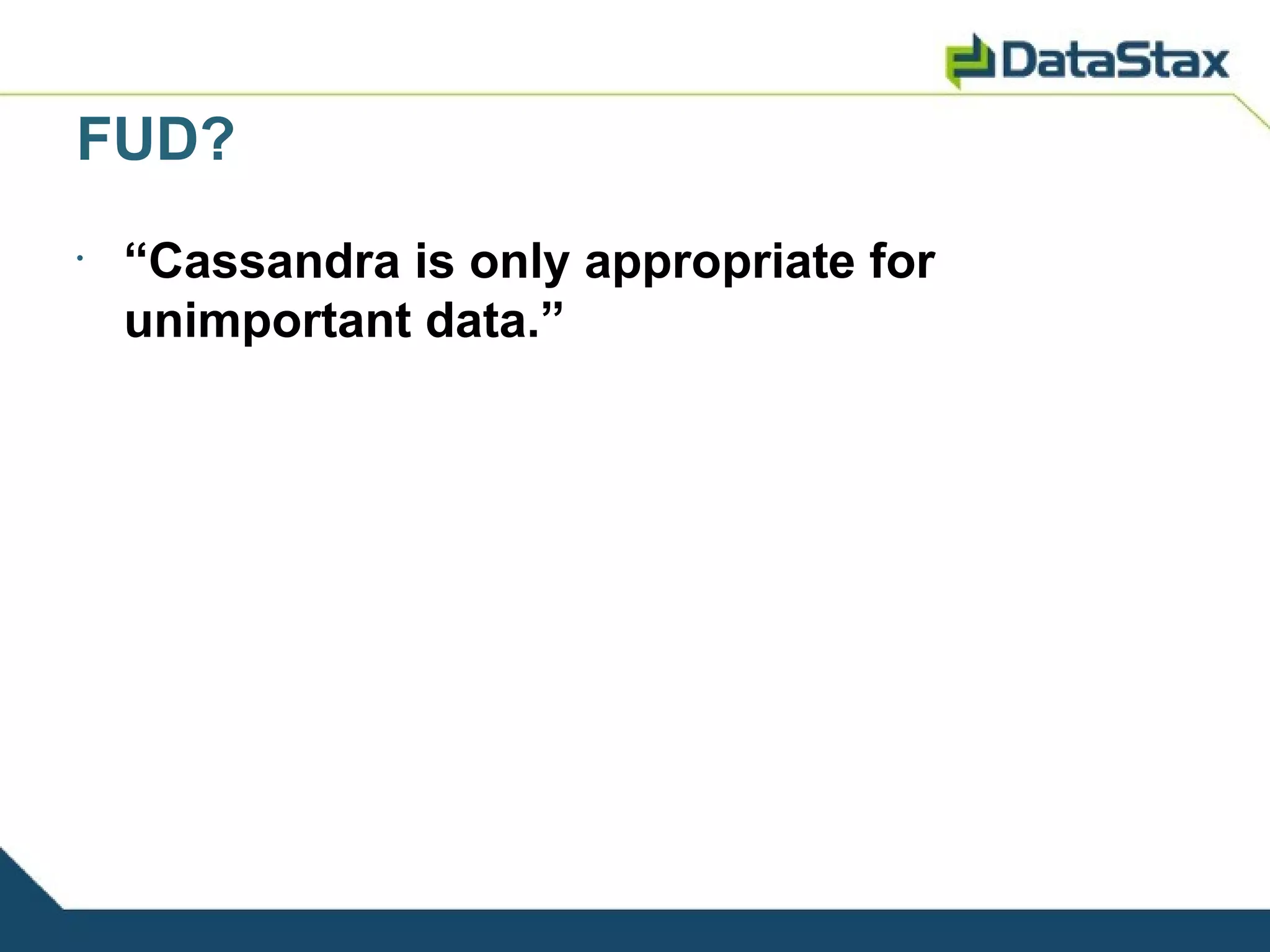
![Durabilty
•
Write to commitlog
–
fsync is cheap since it’s append-only
•
Write to memtable
•
[amortized] flush memtable to sstable](https://image.slidesharecdn.com/slides-110202161707-phpapp01/75/Cassandra-Tutorial-18-2048.jpg)
![SSTable format, briefly
<key 127>
<key 255> <row data 0>
... <row data 1>
...
<row data 127>
...
<row data 255>
...
Sorted [clustered] by row key](https://image.slidesharecdn.com/slides-110202161707-phpapp01/75/Cassandra-Tutorial-19-2048.jpg)

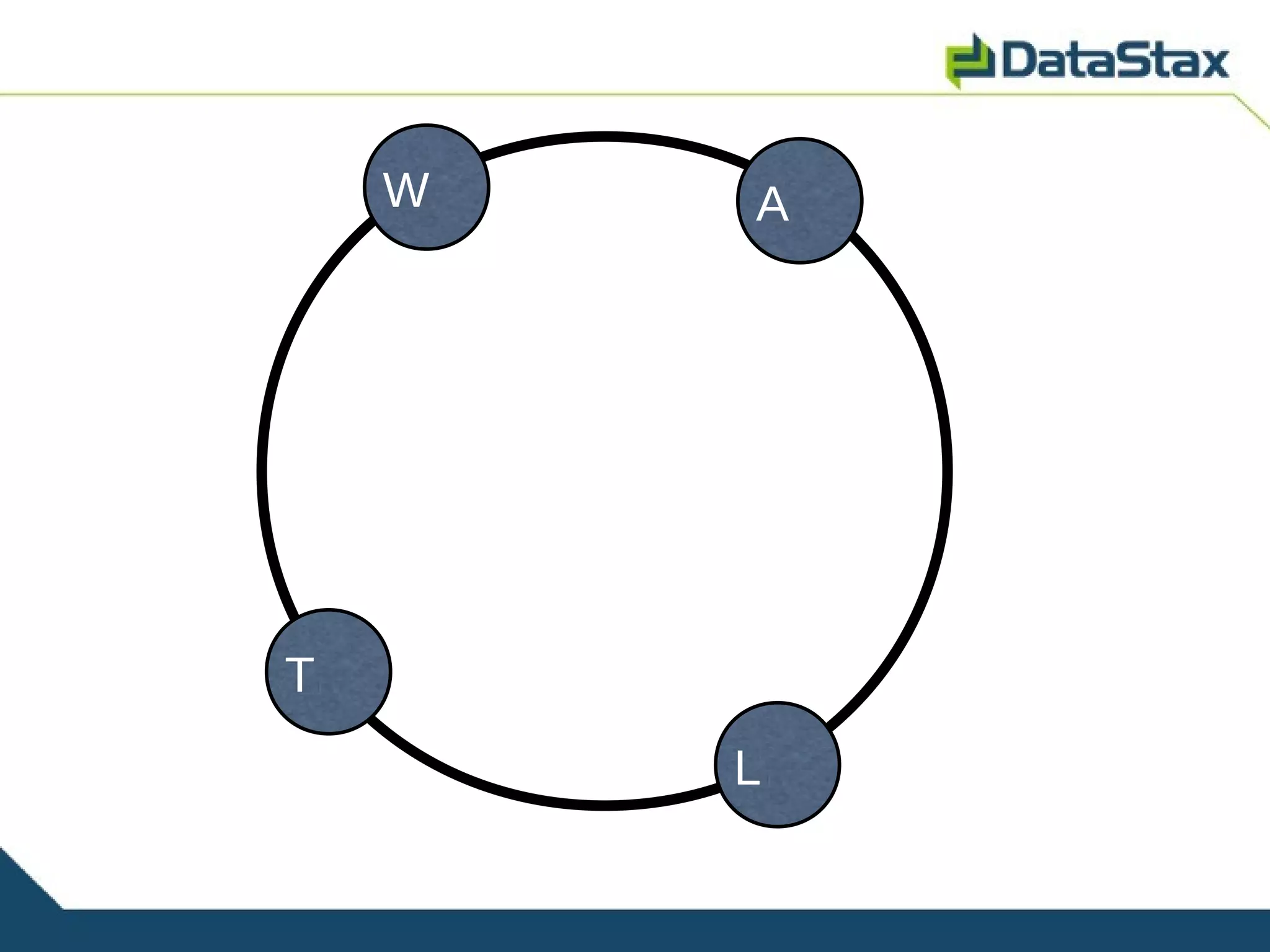
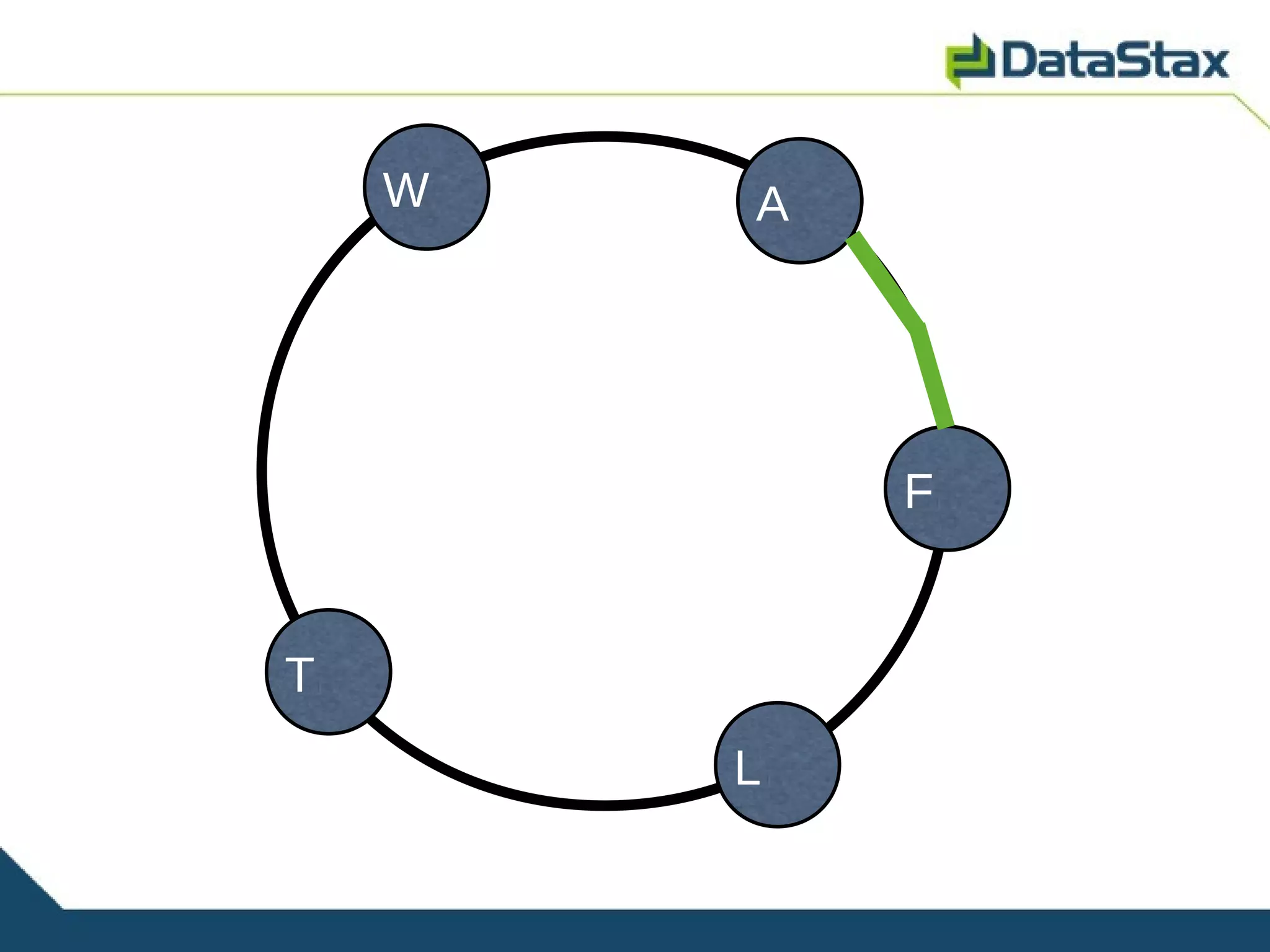
![W A
F
(A-L]
T
L](https://image.slidesharecdn.com/slides-110202161707-phpapp01/75/Cassandra-Tutorial-23-2048.jpg)
![W A
(A-F] F
T
(F-L] L](https://image.slidesharecdn.com/slides-110202161707-phpapp01/75/Cassandra-Tutorial-24-2048.jpg)
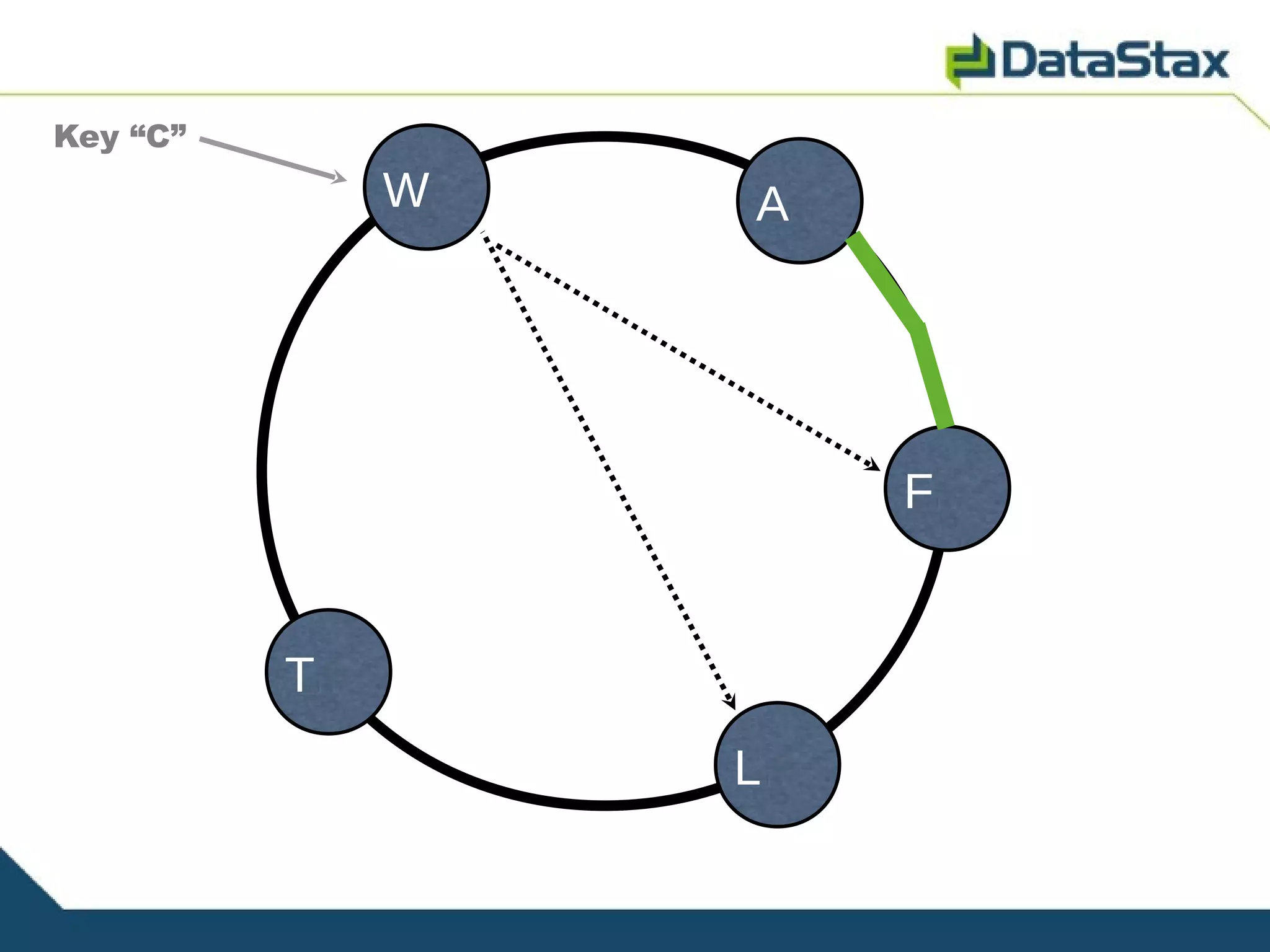
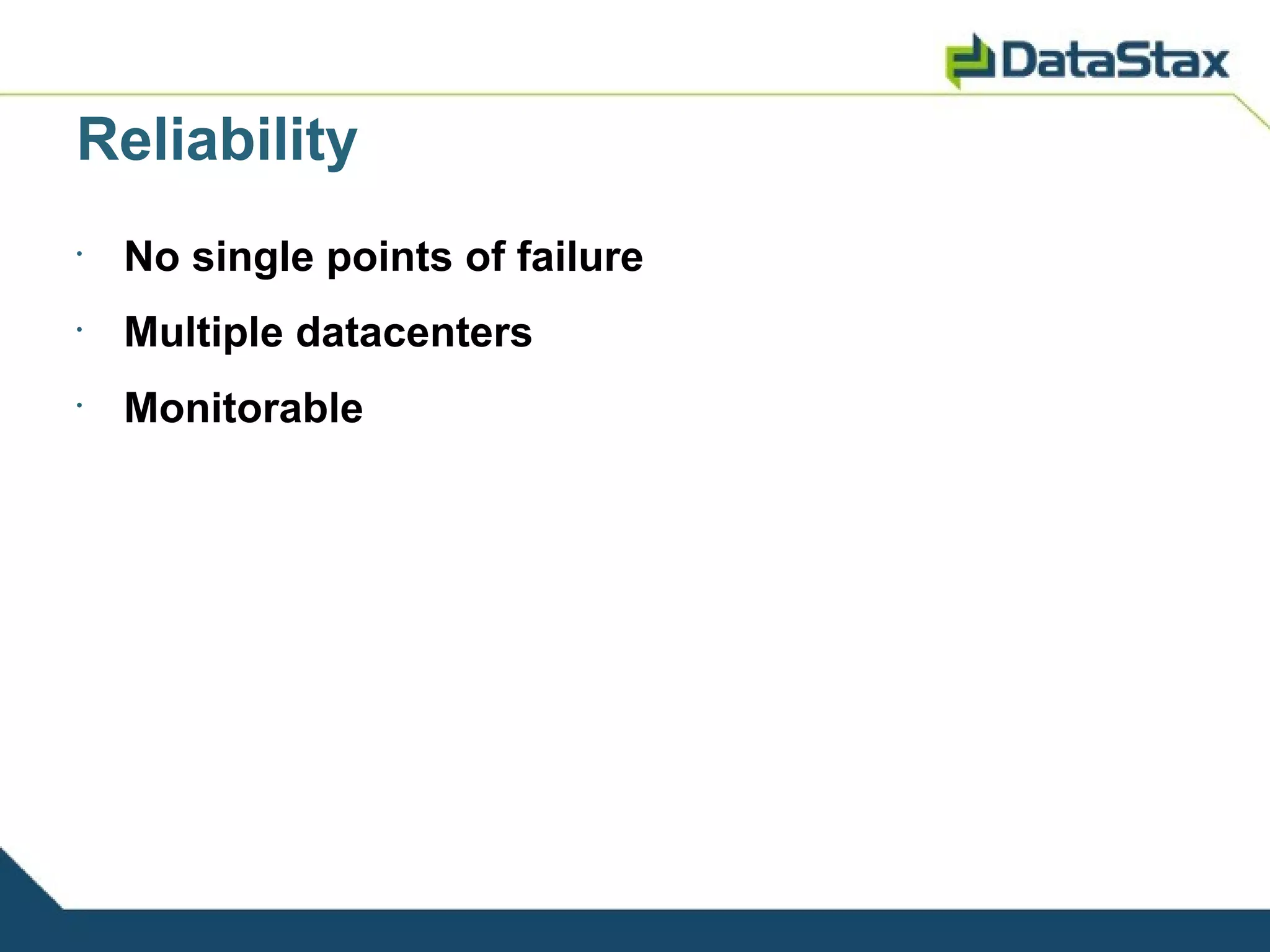
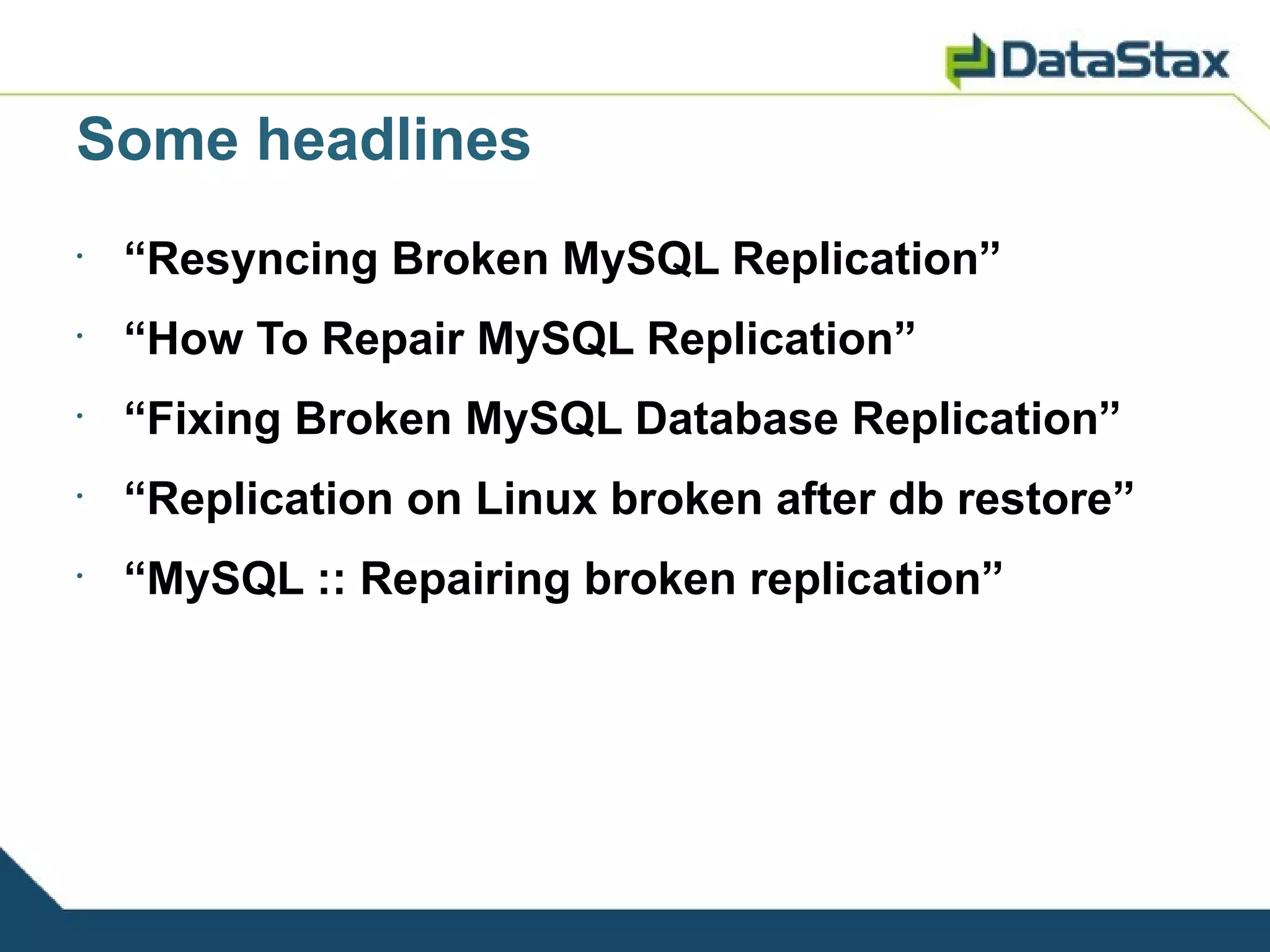
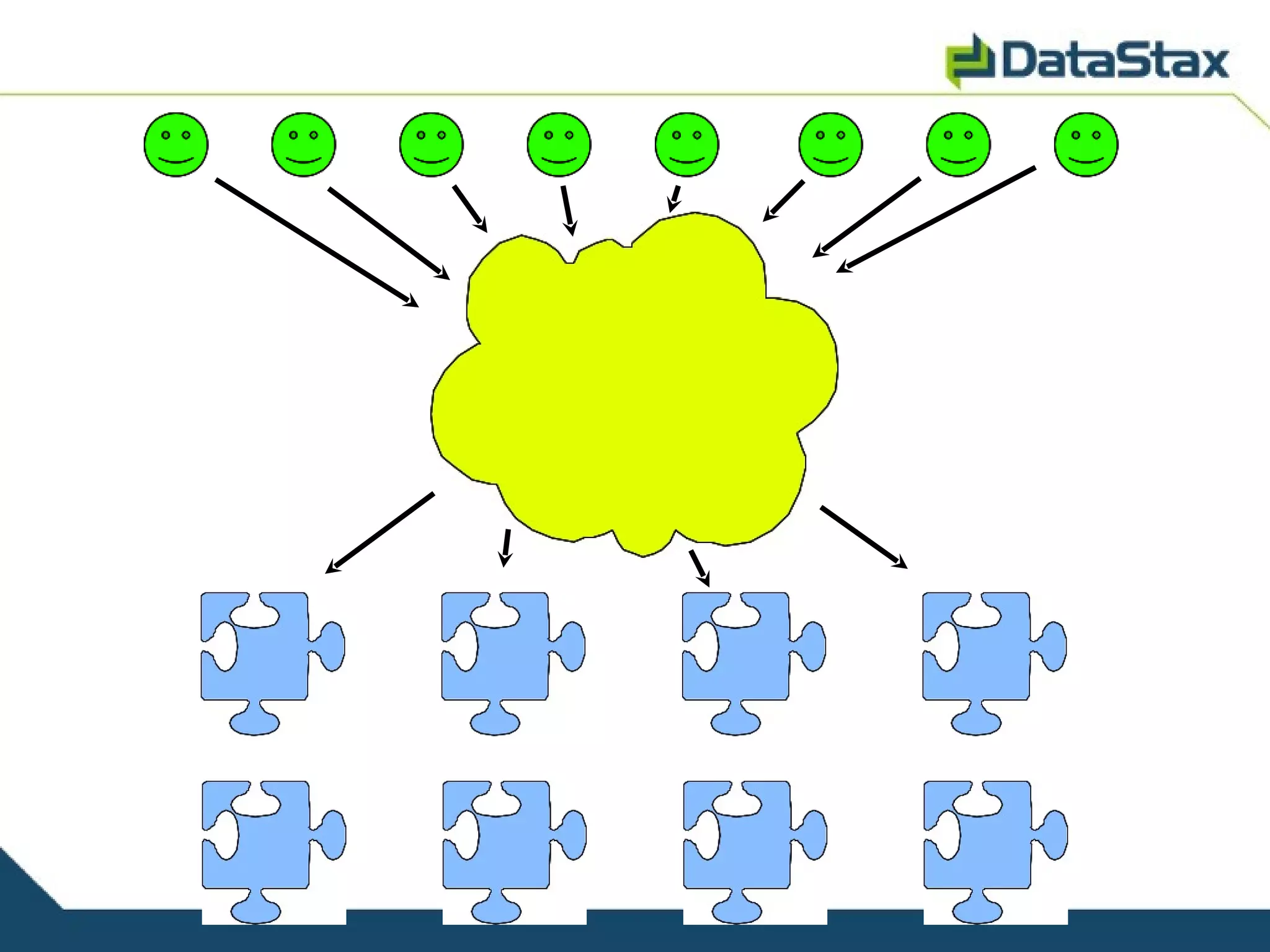
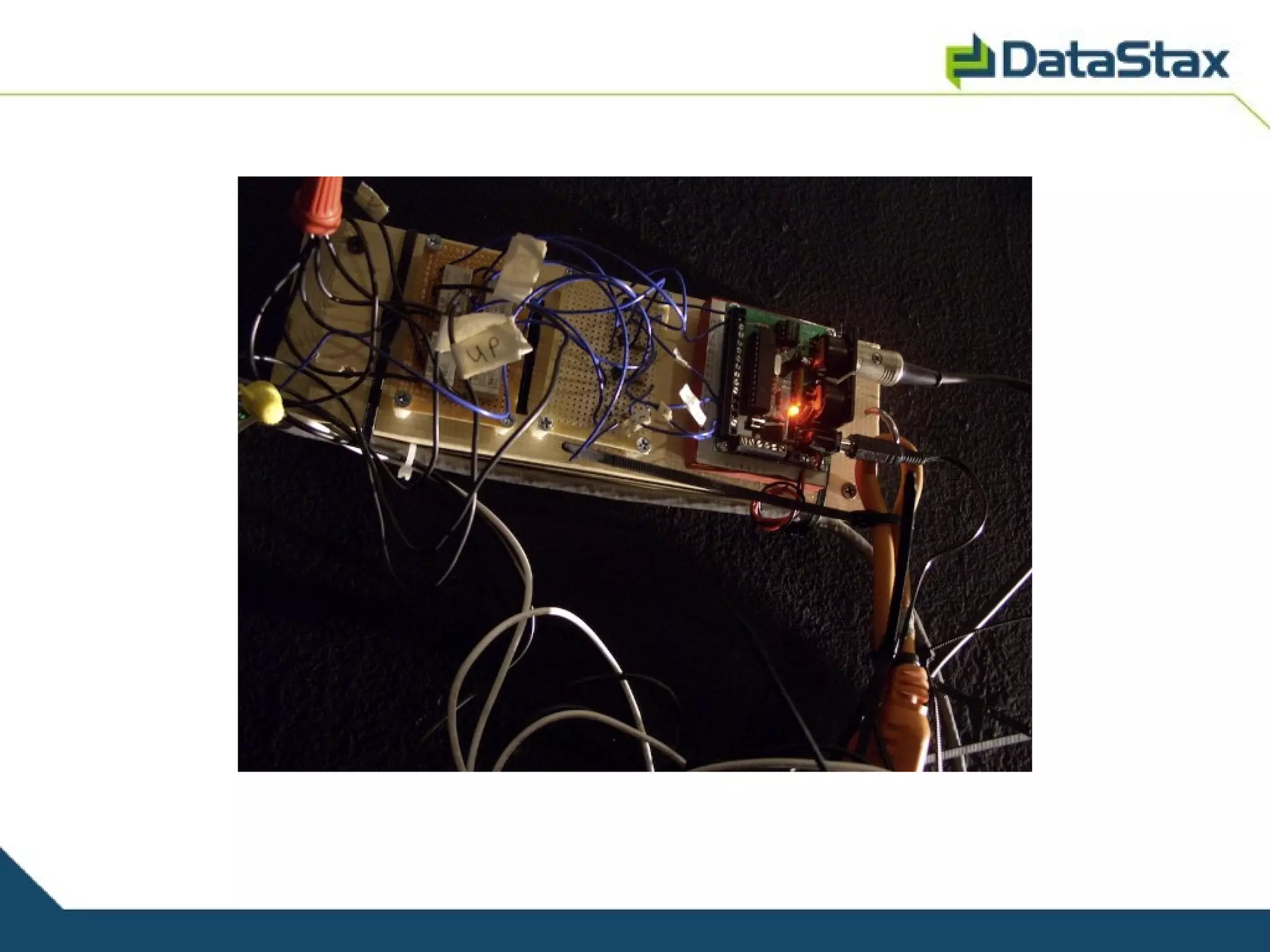
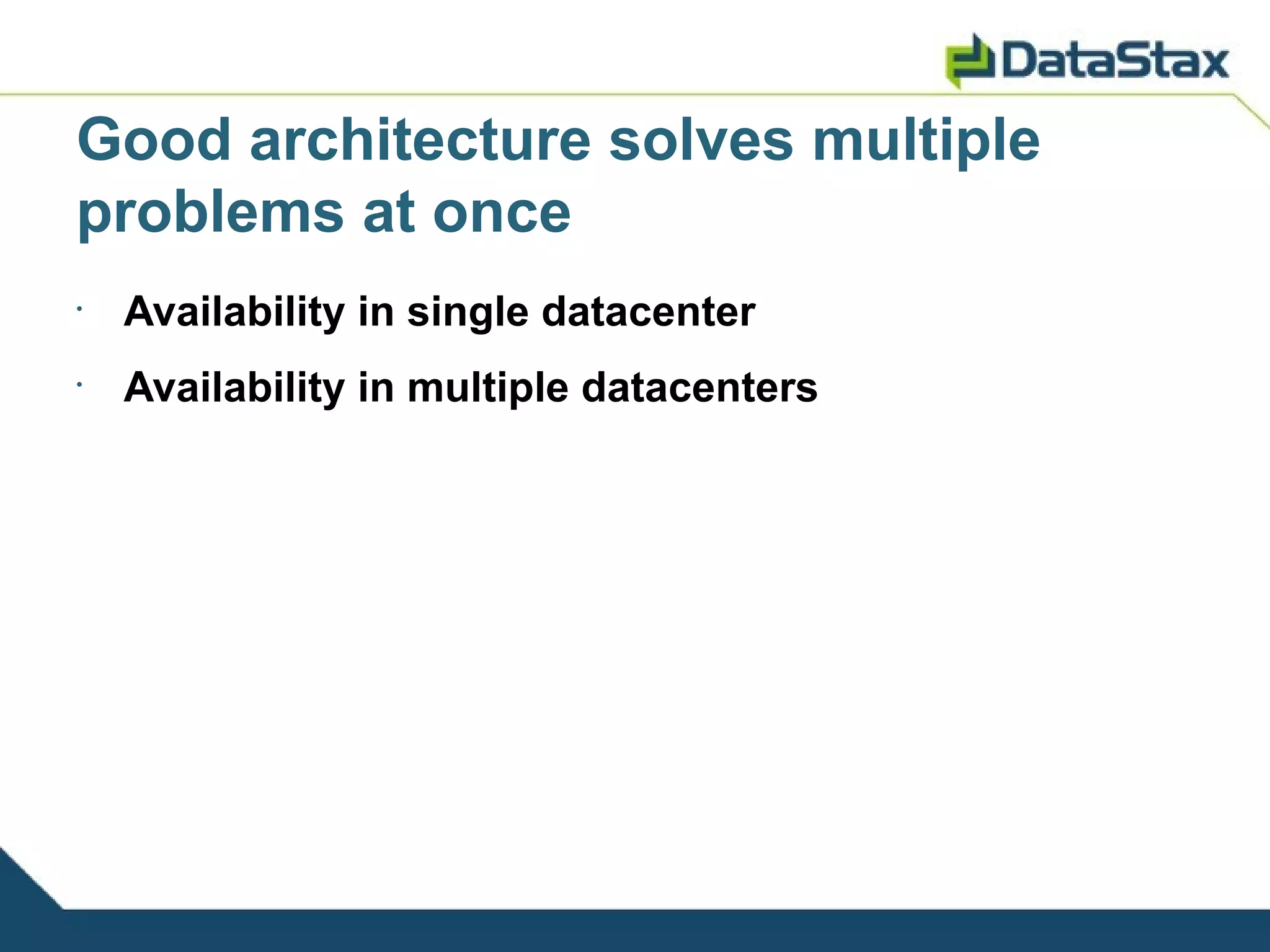
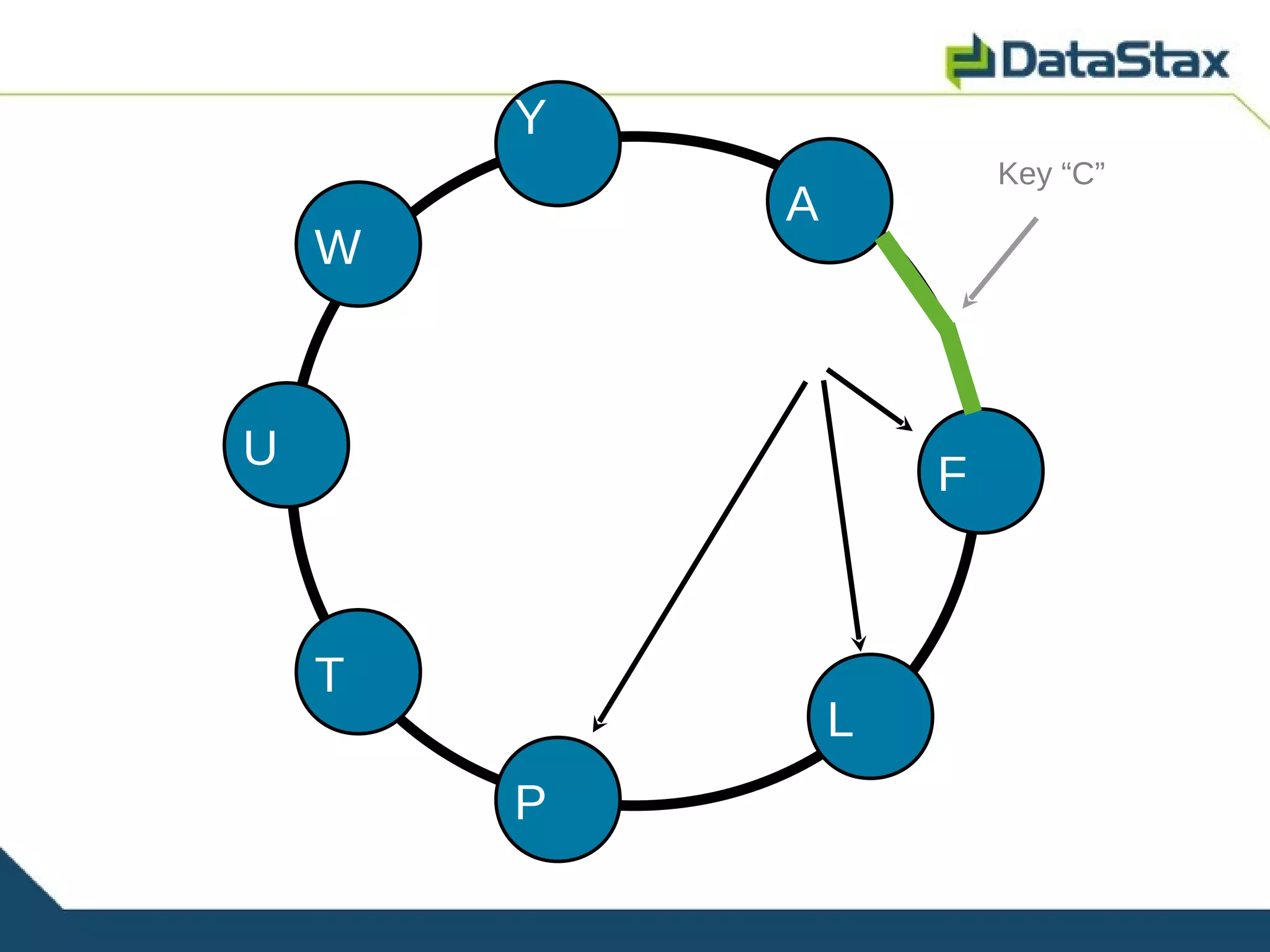
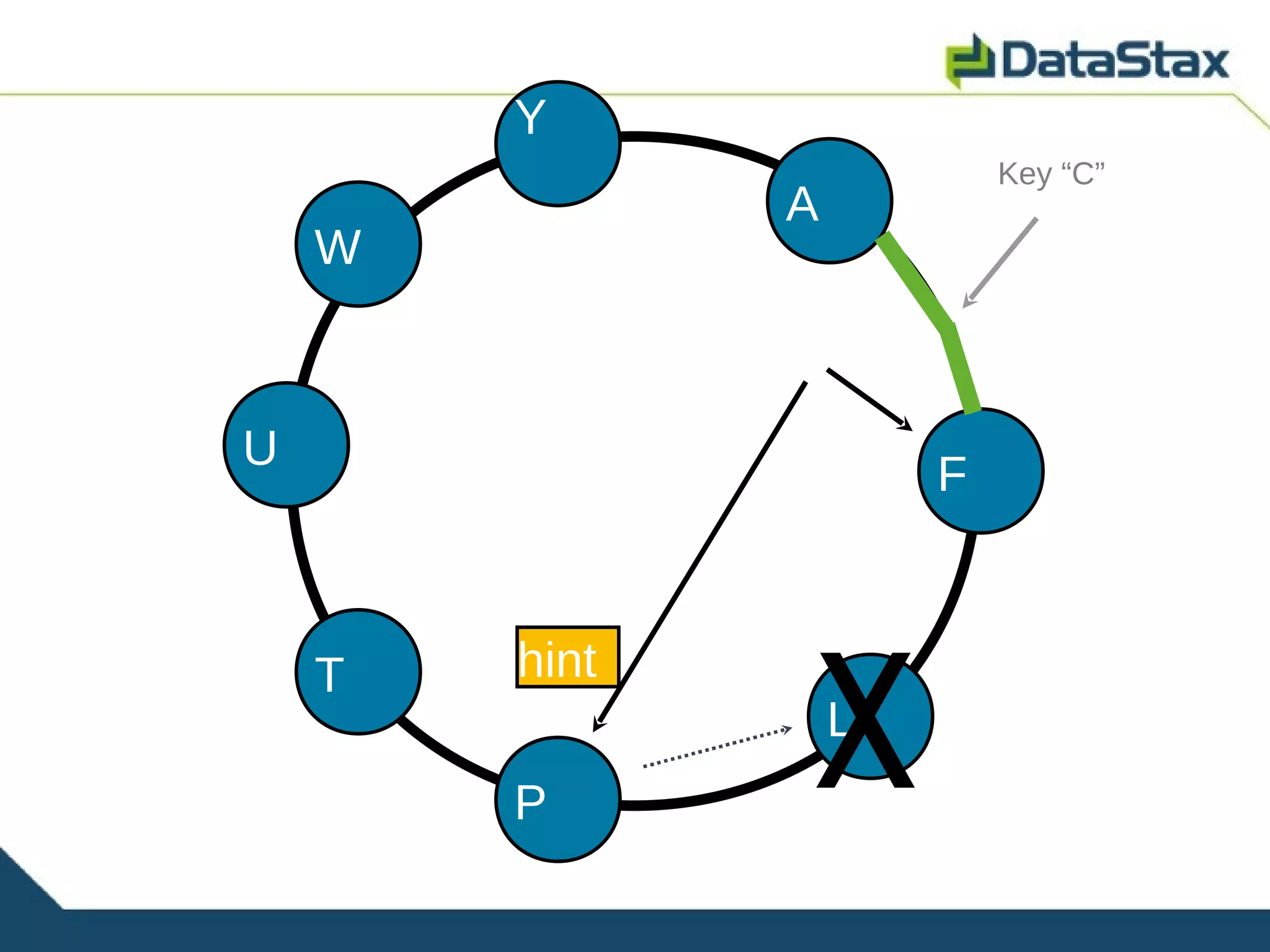
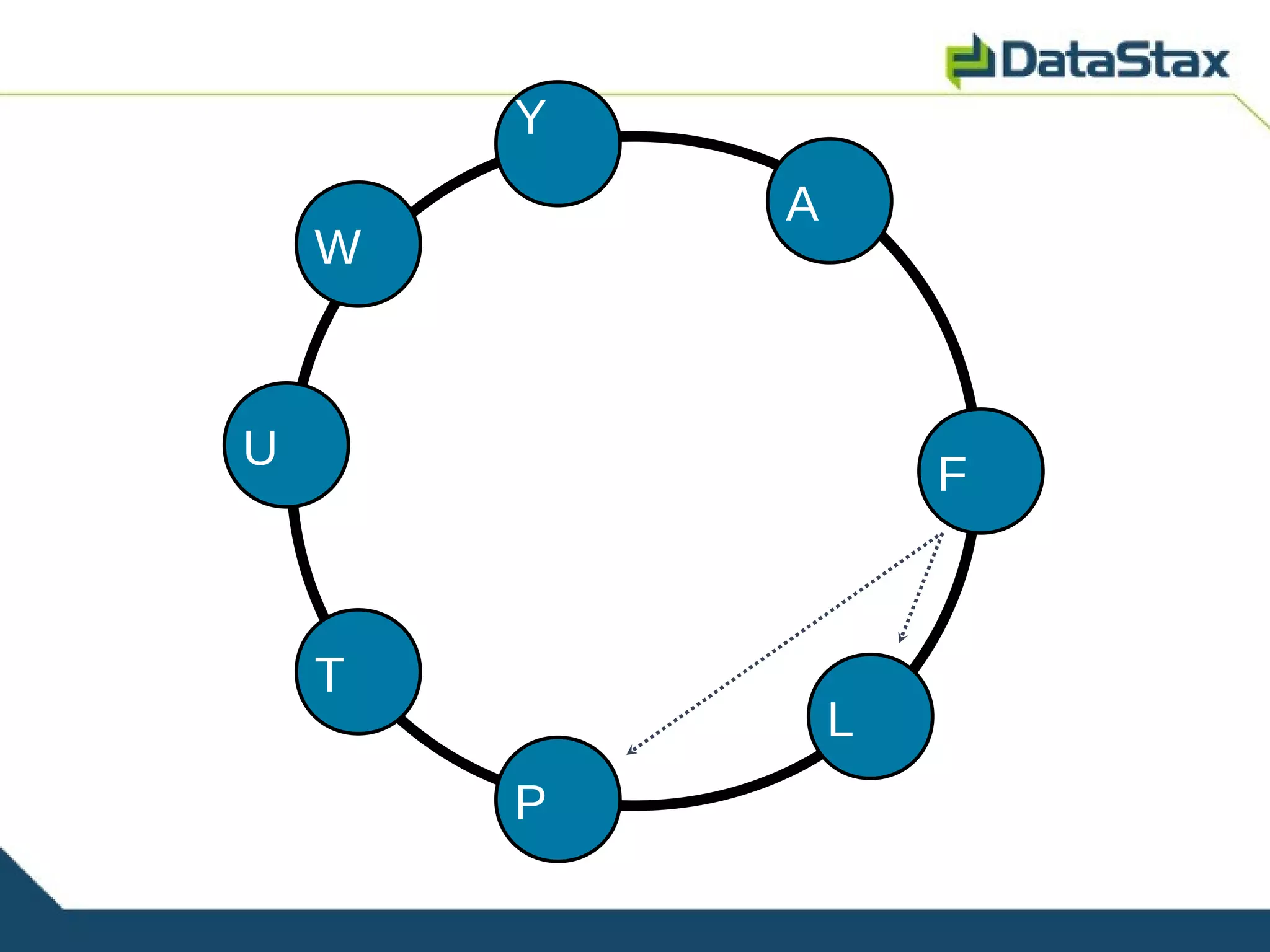
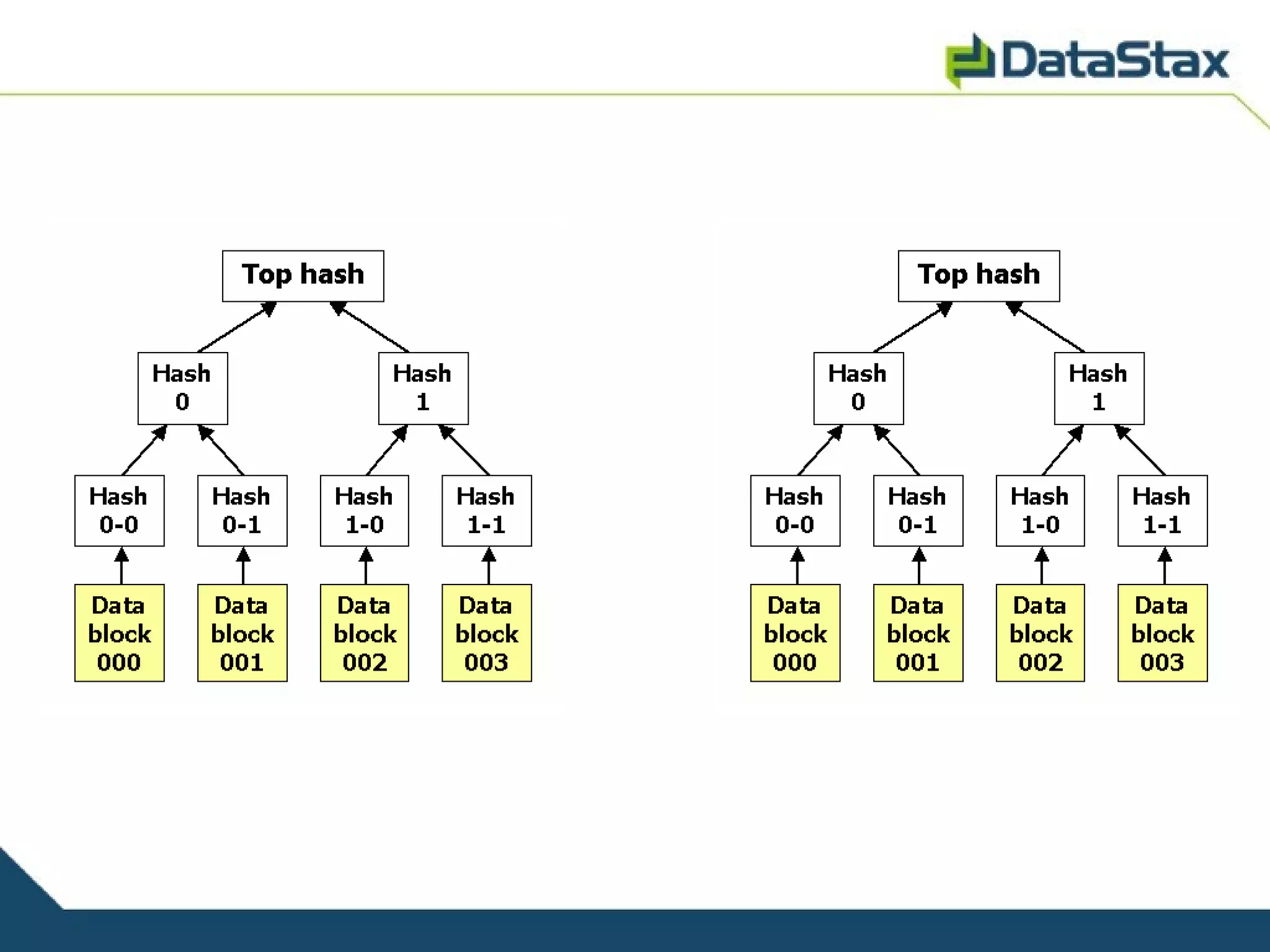
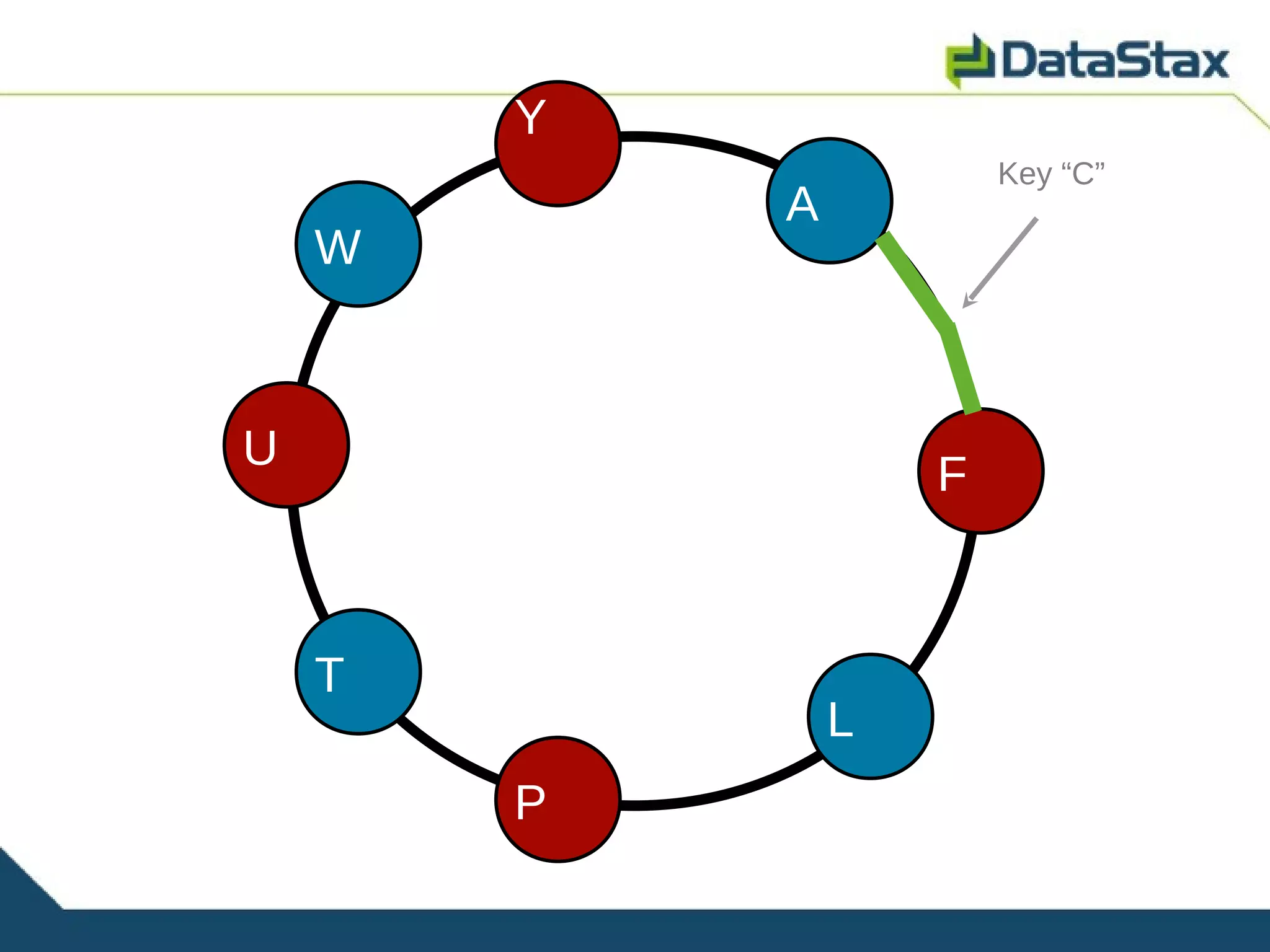
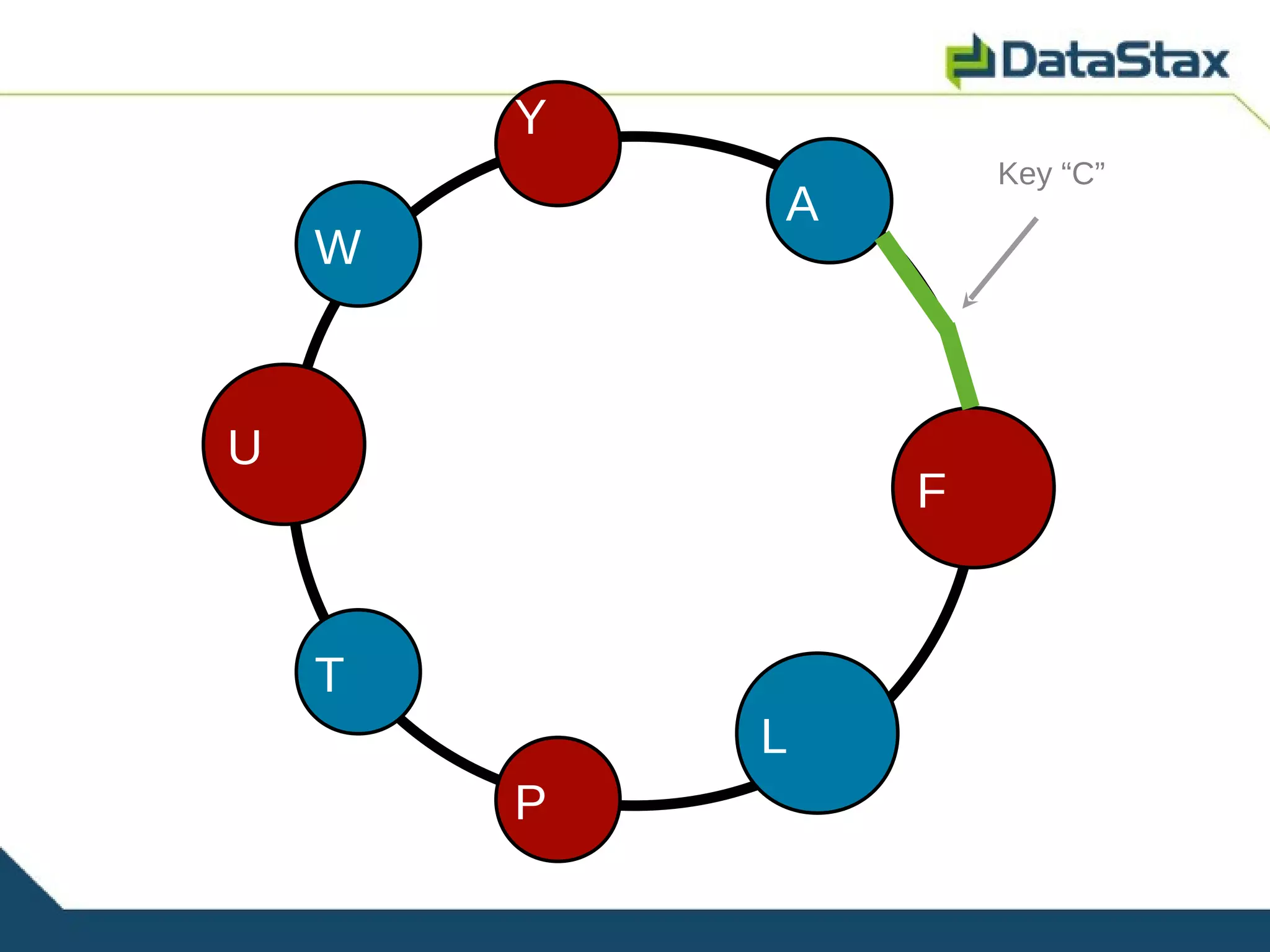
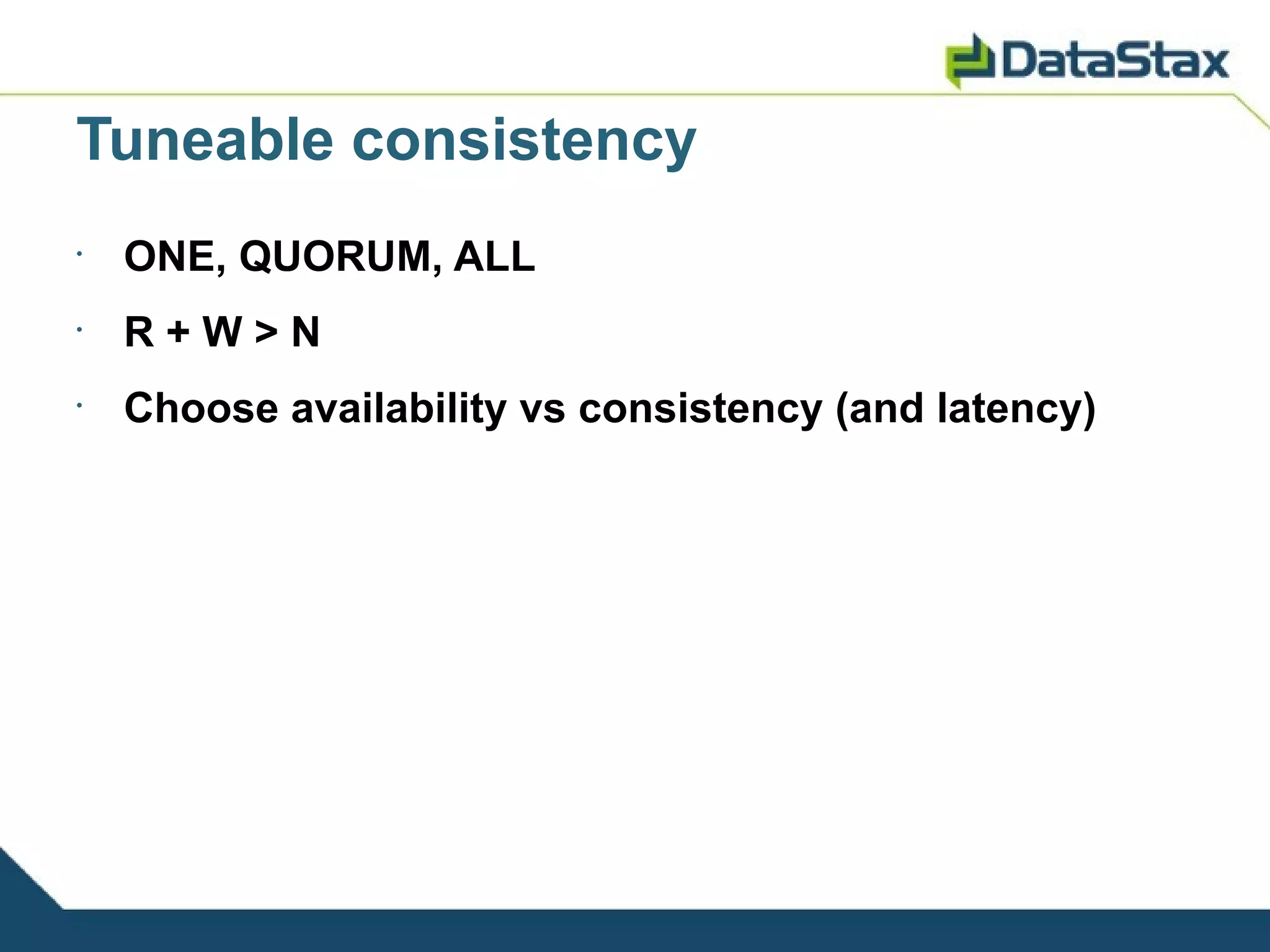
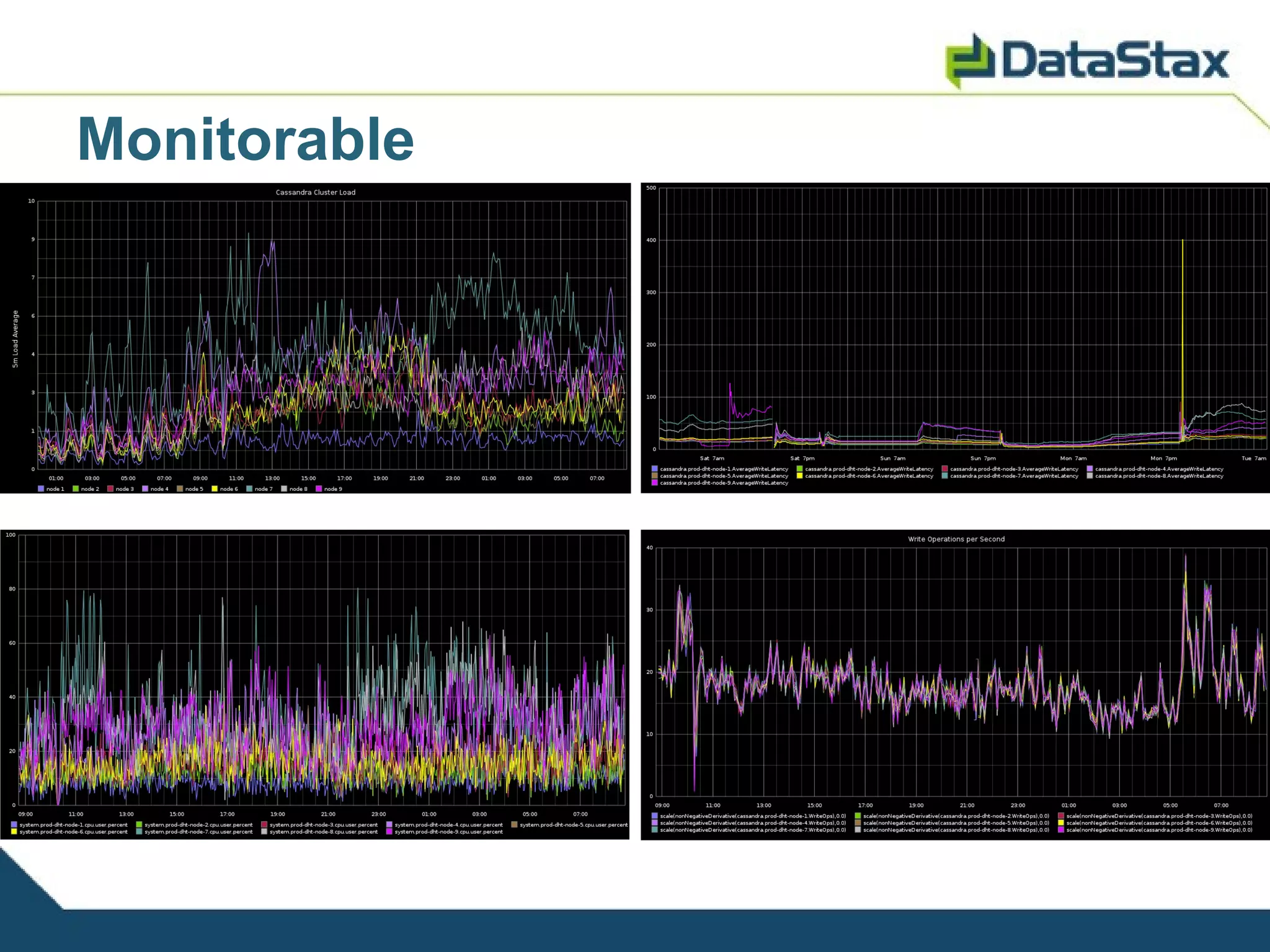
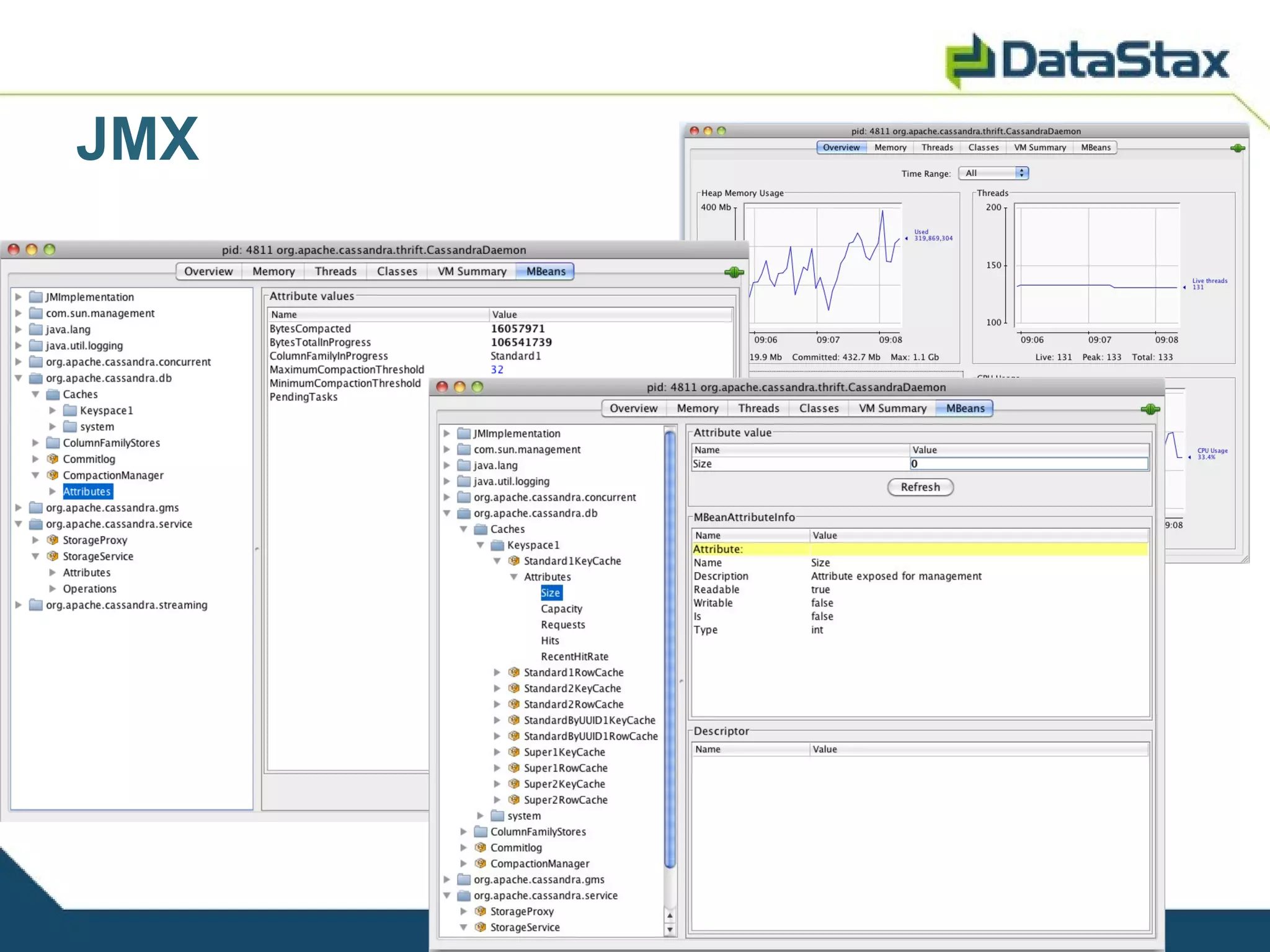
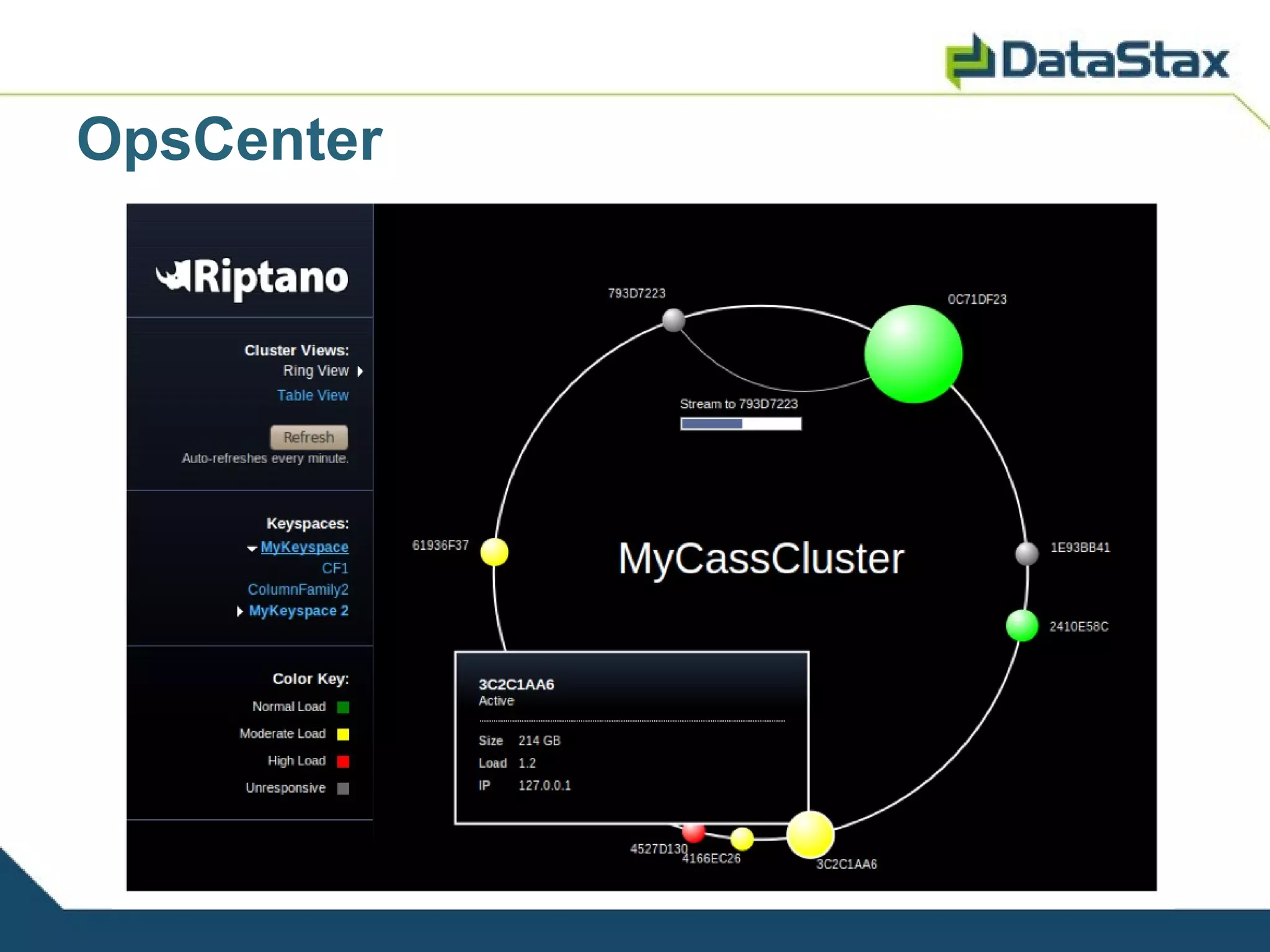
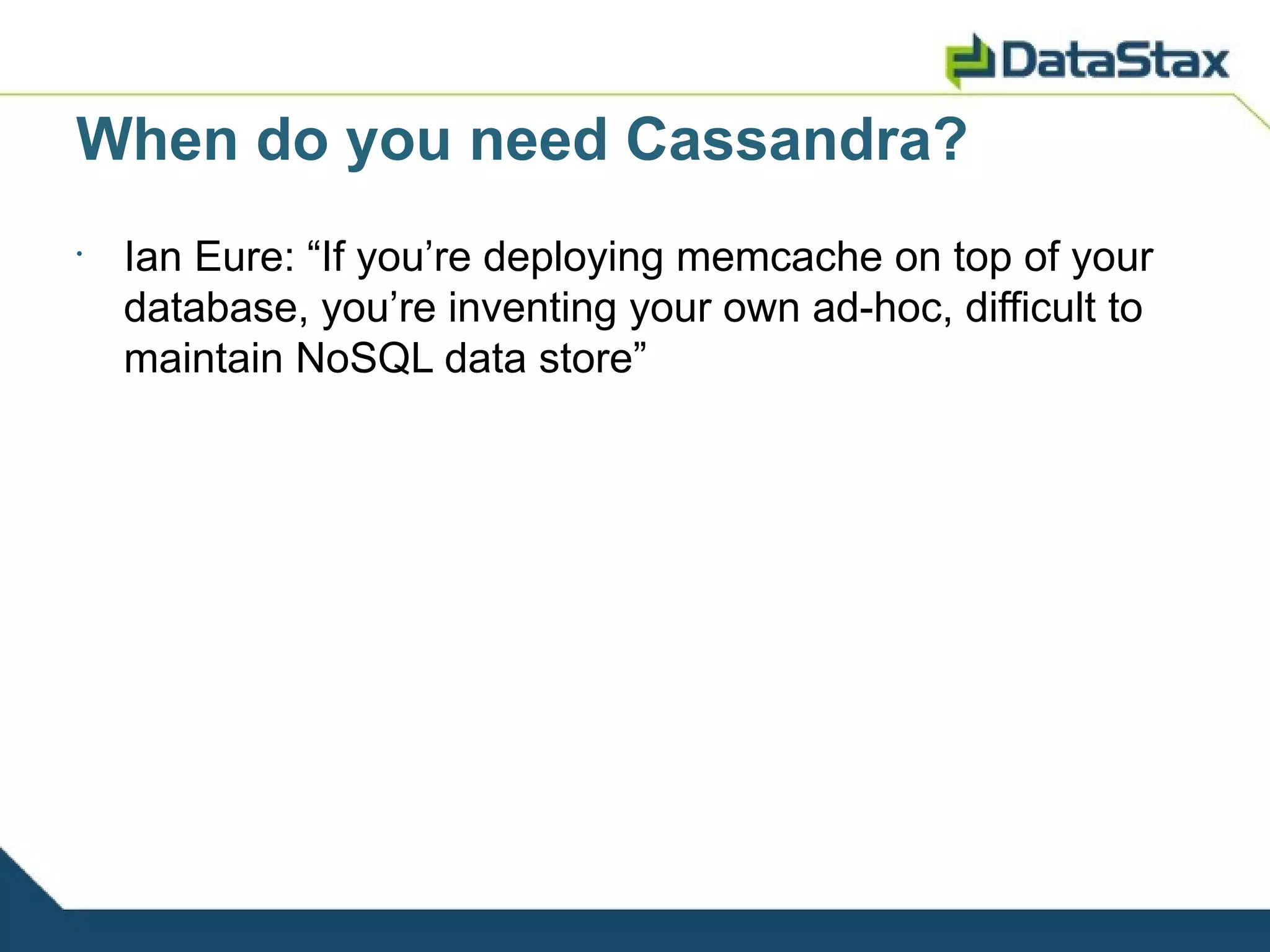
![Not Only SQL
•
Curt Monash: “ACID-compliant transaction integrity
commonly costs more in terms of DBMS licenses and many other
components of TCO (Total Cost of Ownership) than [scalable
NoSQL]. Worse, it can actually hurt application uptime,
by forcing your system to pull in its horns and stop functioning in the
face of failures that a non-transactional system might smoothly work
around. Other flavors of “complexity can be a bad thing” apply as
well. Thus, transaction integrity can be more trouble
than it’s worth.” [Curt’s emphasis]](https://image.slidesharecdn.com/slides-110202161707-phpapp01/75/Cassandra-Tutorial-42-2048.jpg)

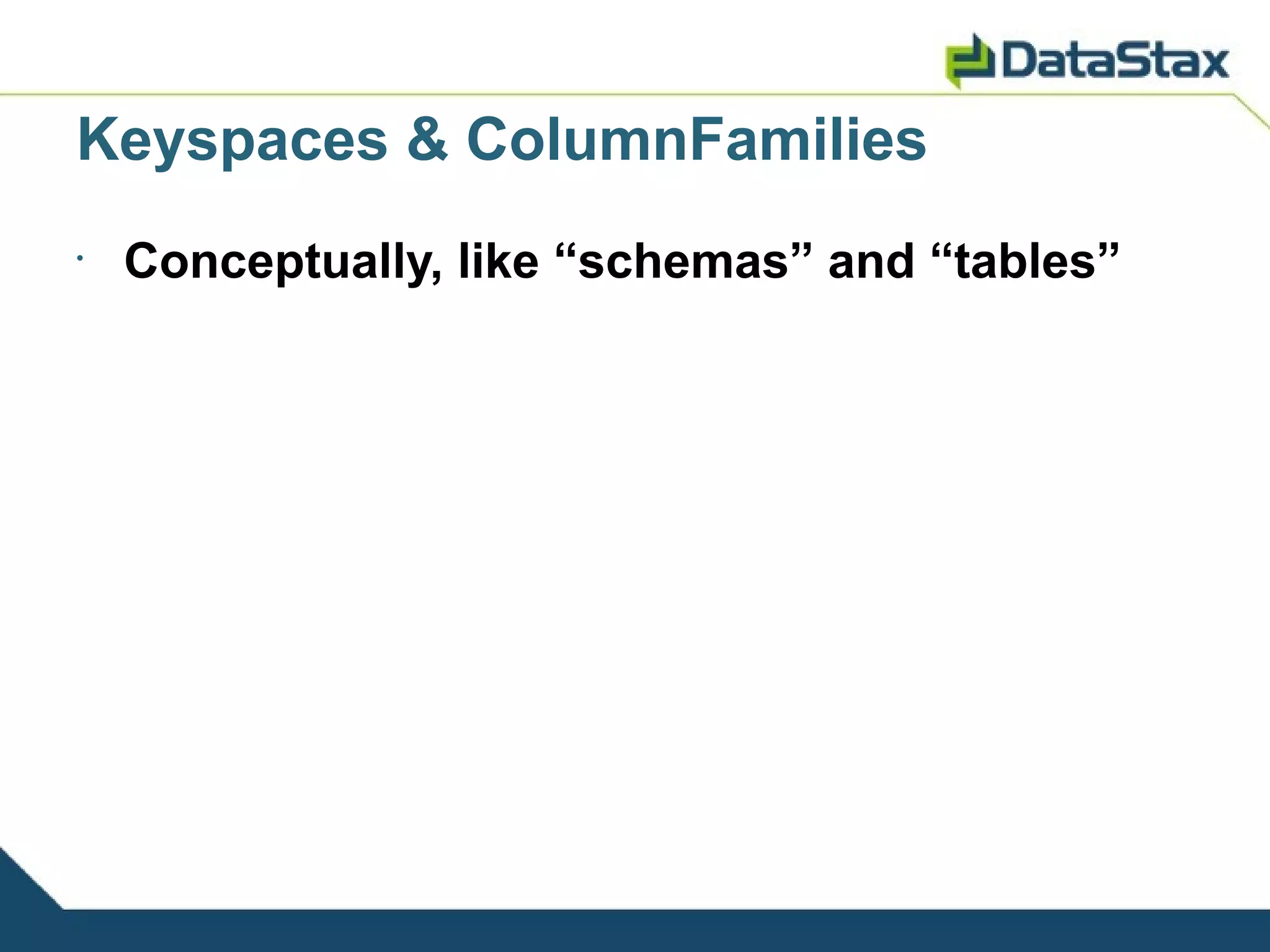
![Inside CFs, columns are dynamic
•
Twitter: “Fifteen months ago, it took two
weeks to perform ALTER TABLE on the
statuses [tweets] table.”](https://image.slidesharecdn.com/slides-110202161707-phpapp01/75/Cassandra-Tutorial-45-2048.jpg)
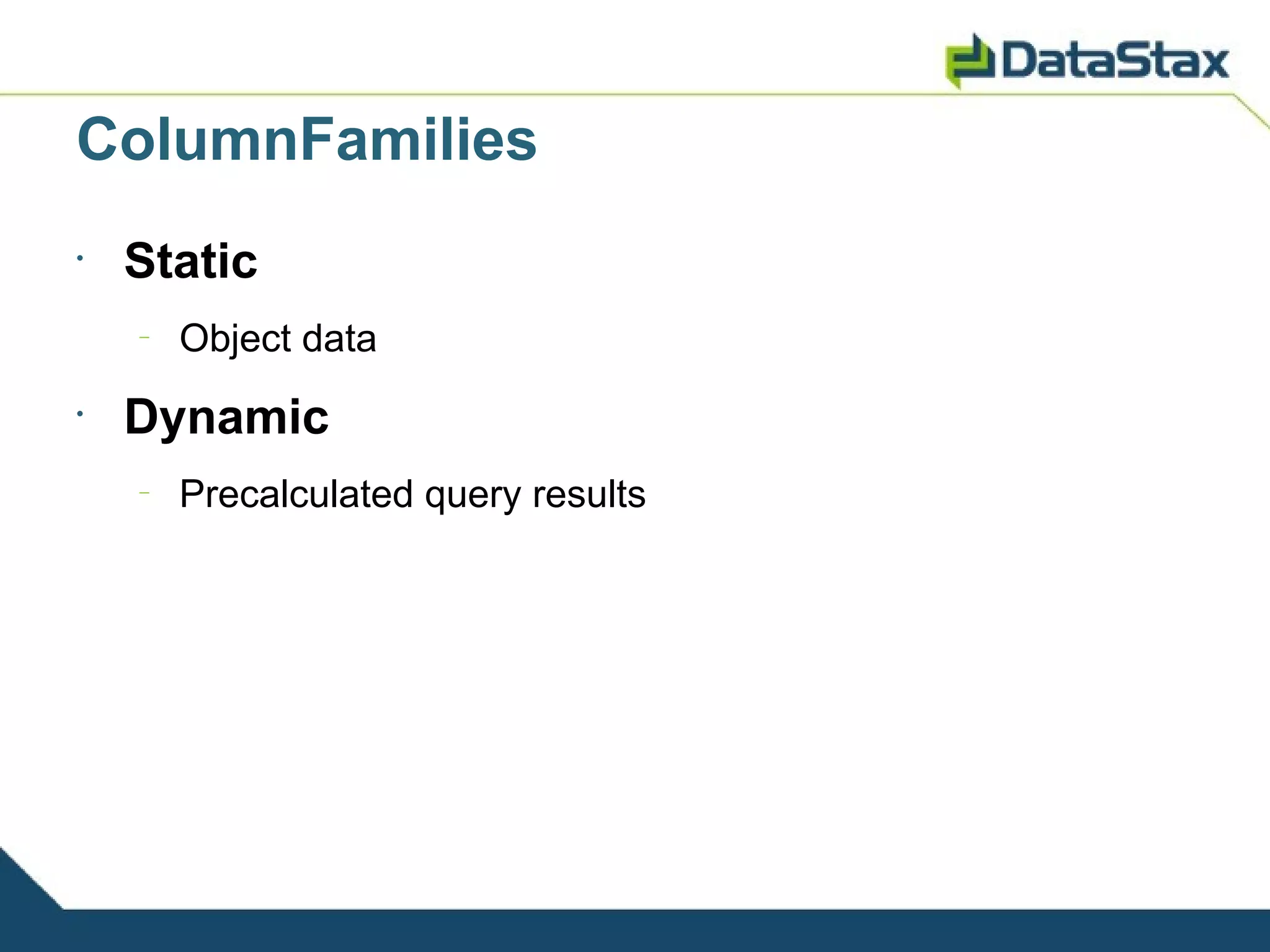
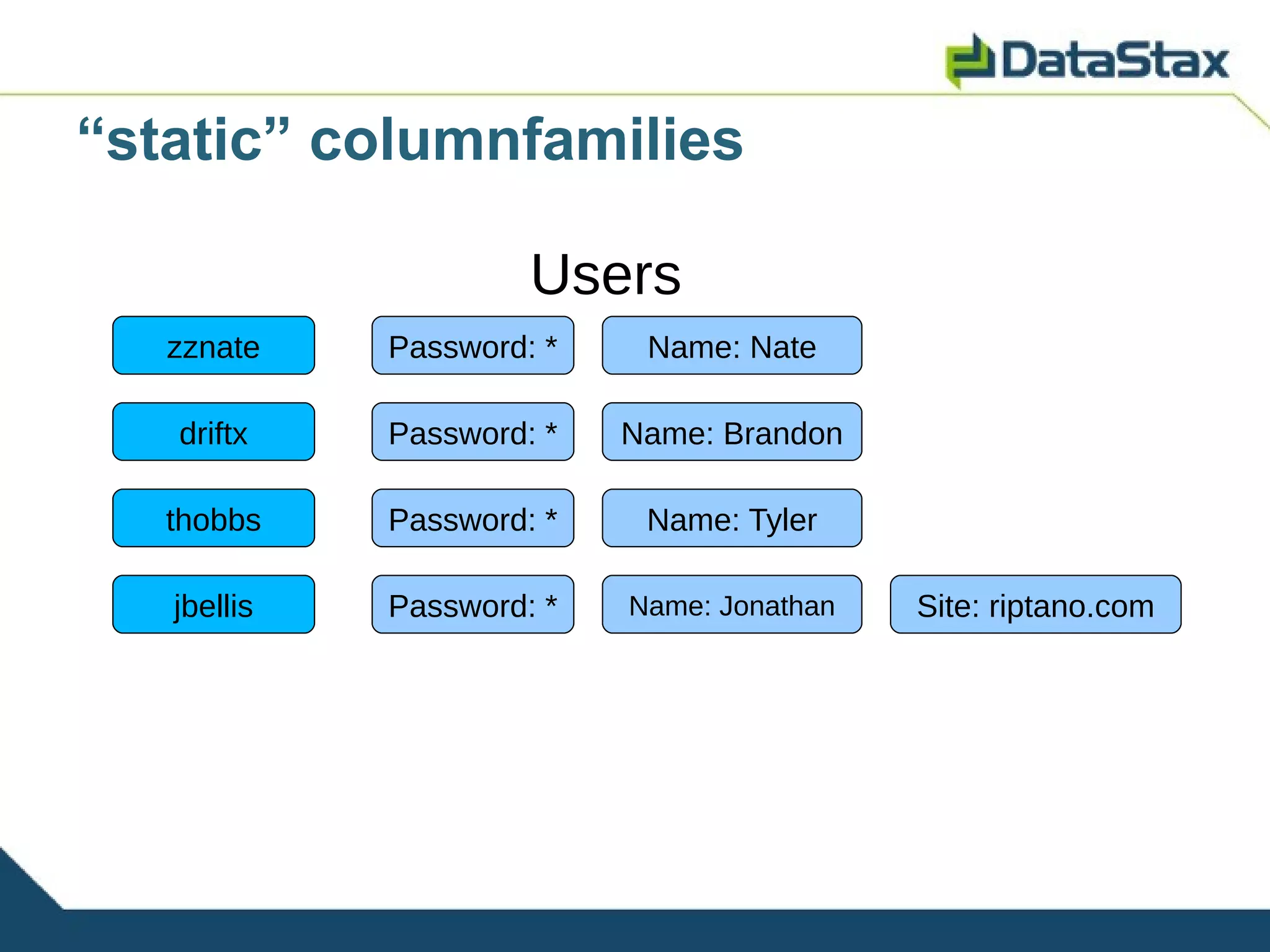
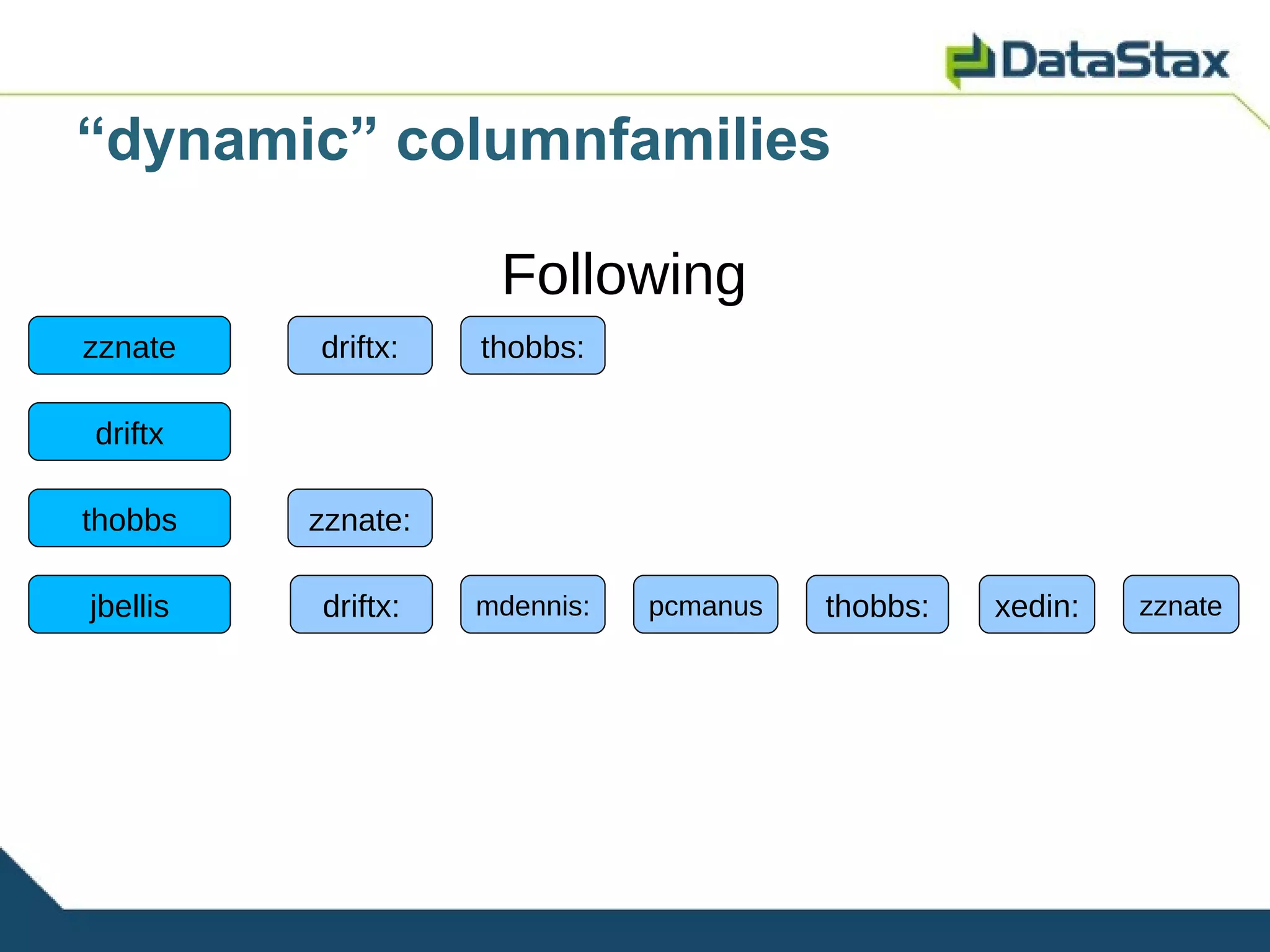
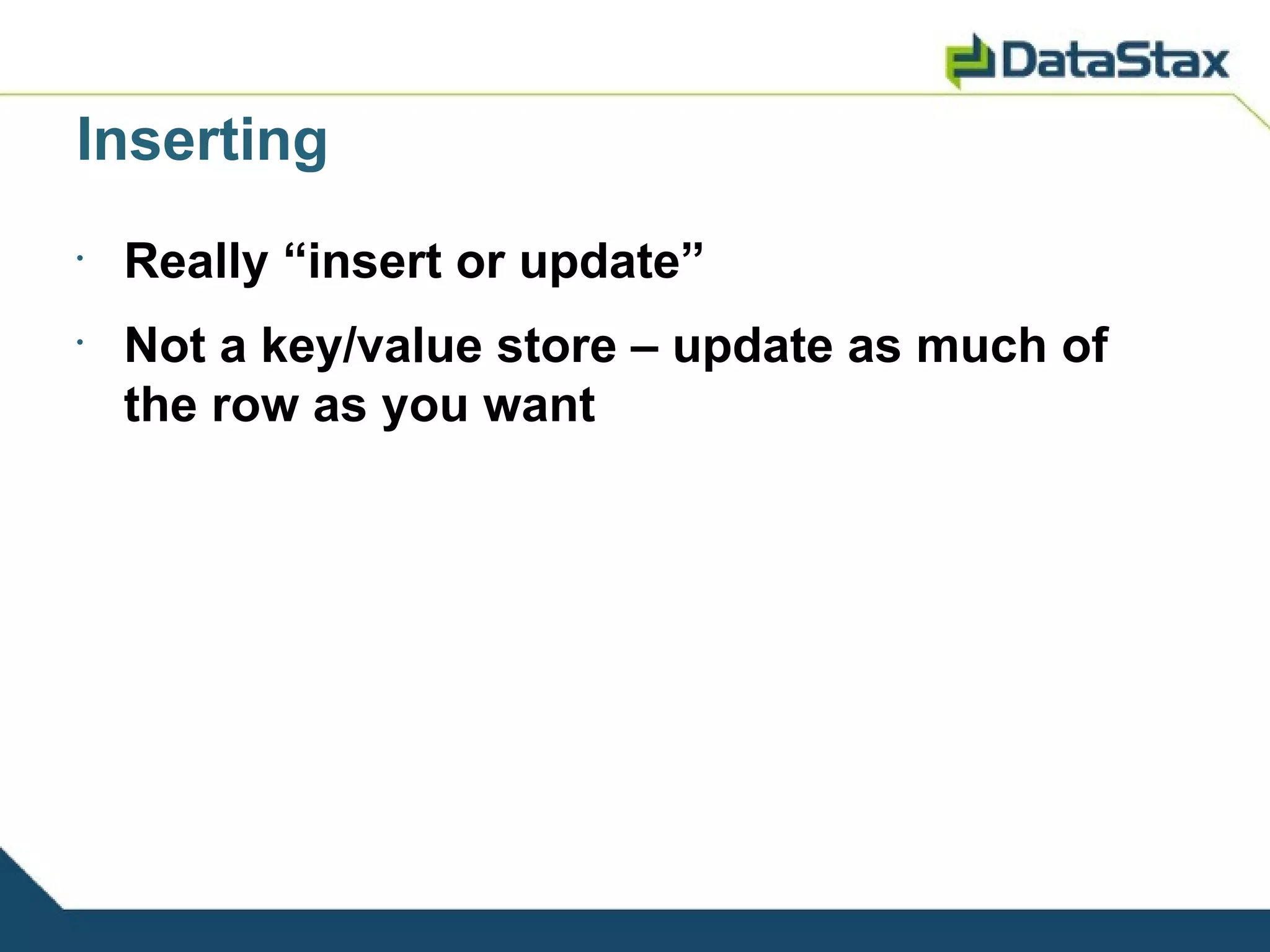
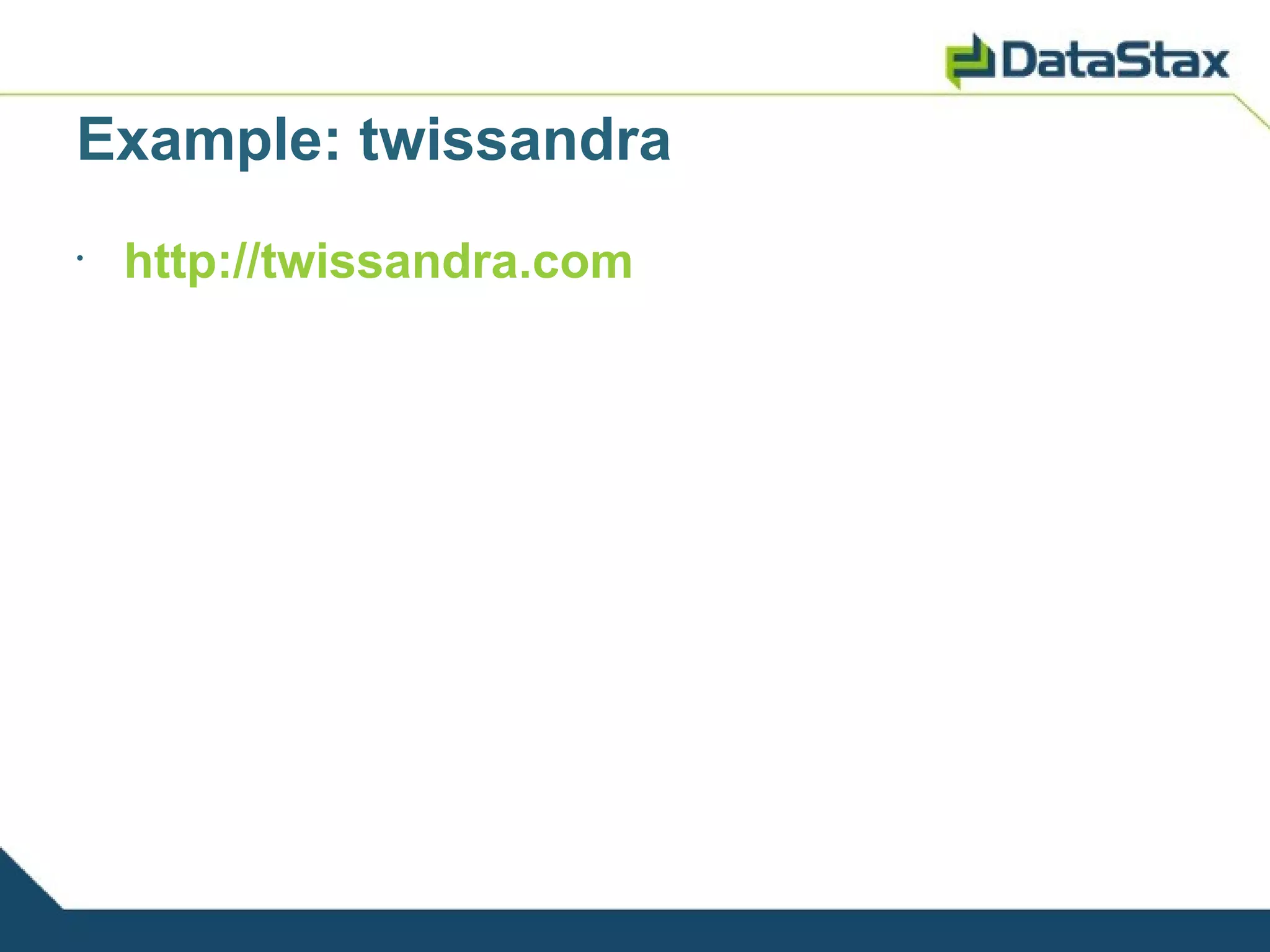
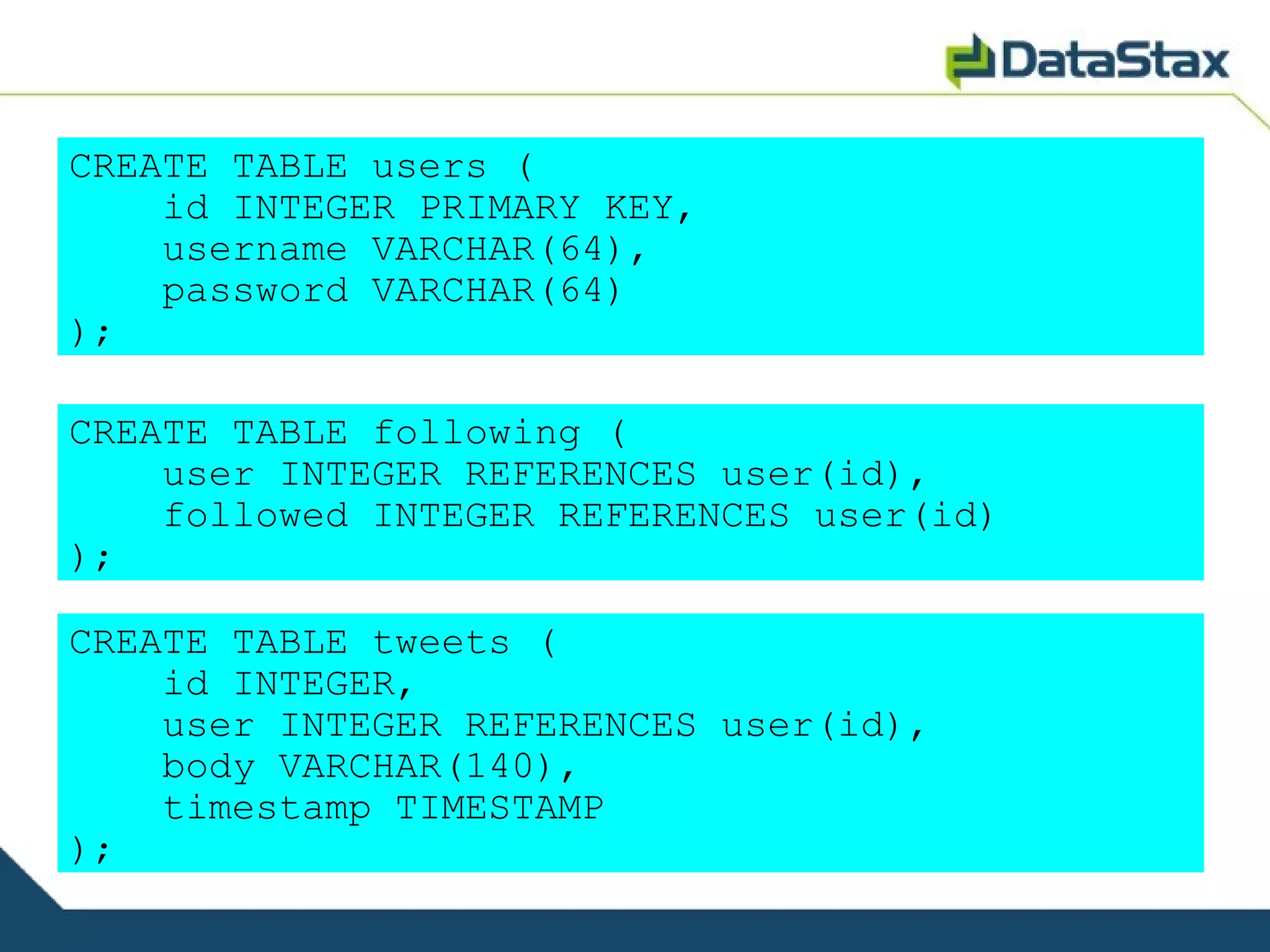
![Cassandrified
create column family users with comparator = UTF8Type
and column_metadata = [{column_name: password,
validation_class: UTF8Type}]
create column family tweets with comparator = UTF8Type
and column_metadata = [{column_name: body, validation_class:
UTF8Type}, {column_name: username, validation_class:
UTF8Type}]
create column family friends with comparator = UTF8Type
create column family followers with comparator = UTF8Type
create column family userline with comparator = LongType and
default_validation_class = UUIDType
create column family timeline with comparator = LongType and
default_validation_class = UUIDType](https://image.slidesharecdn.com/slides-110202161707-phpapp01/75/Cassandra-Tutorial-52-2048.jpg)
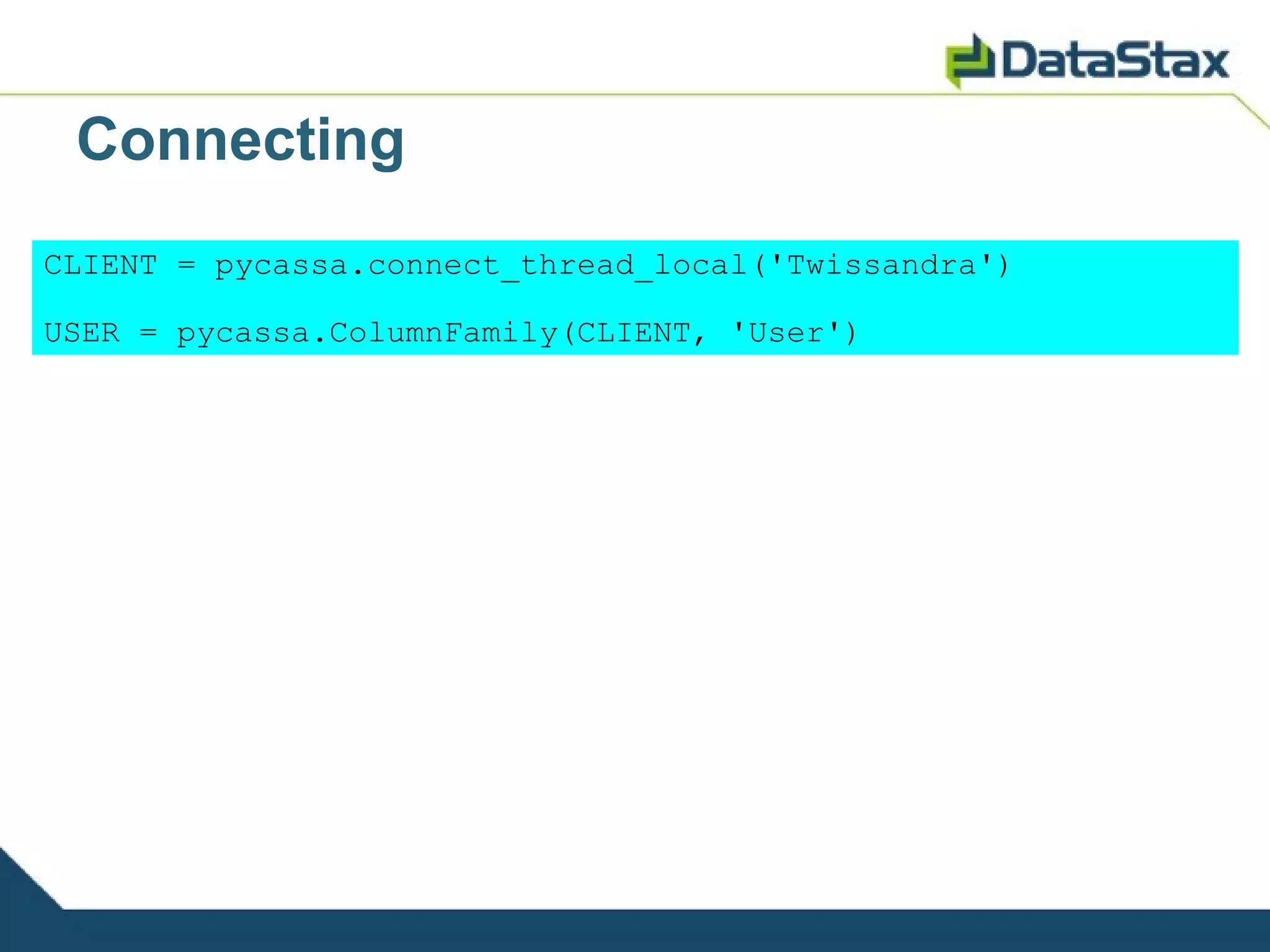
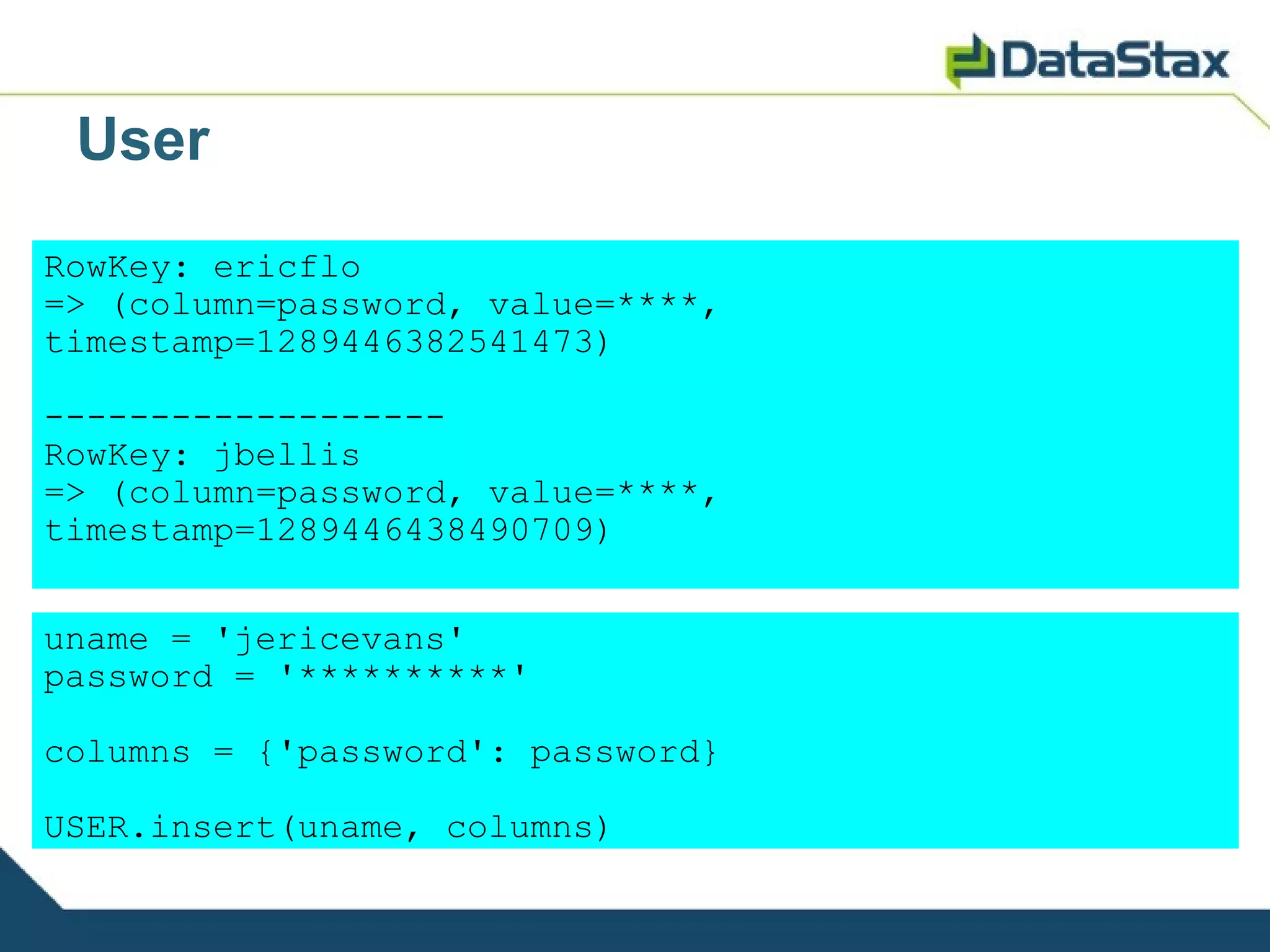
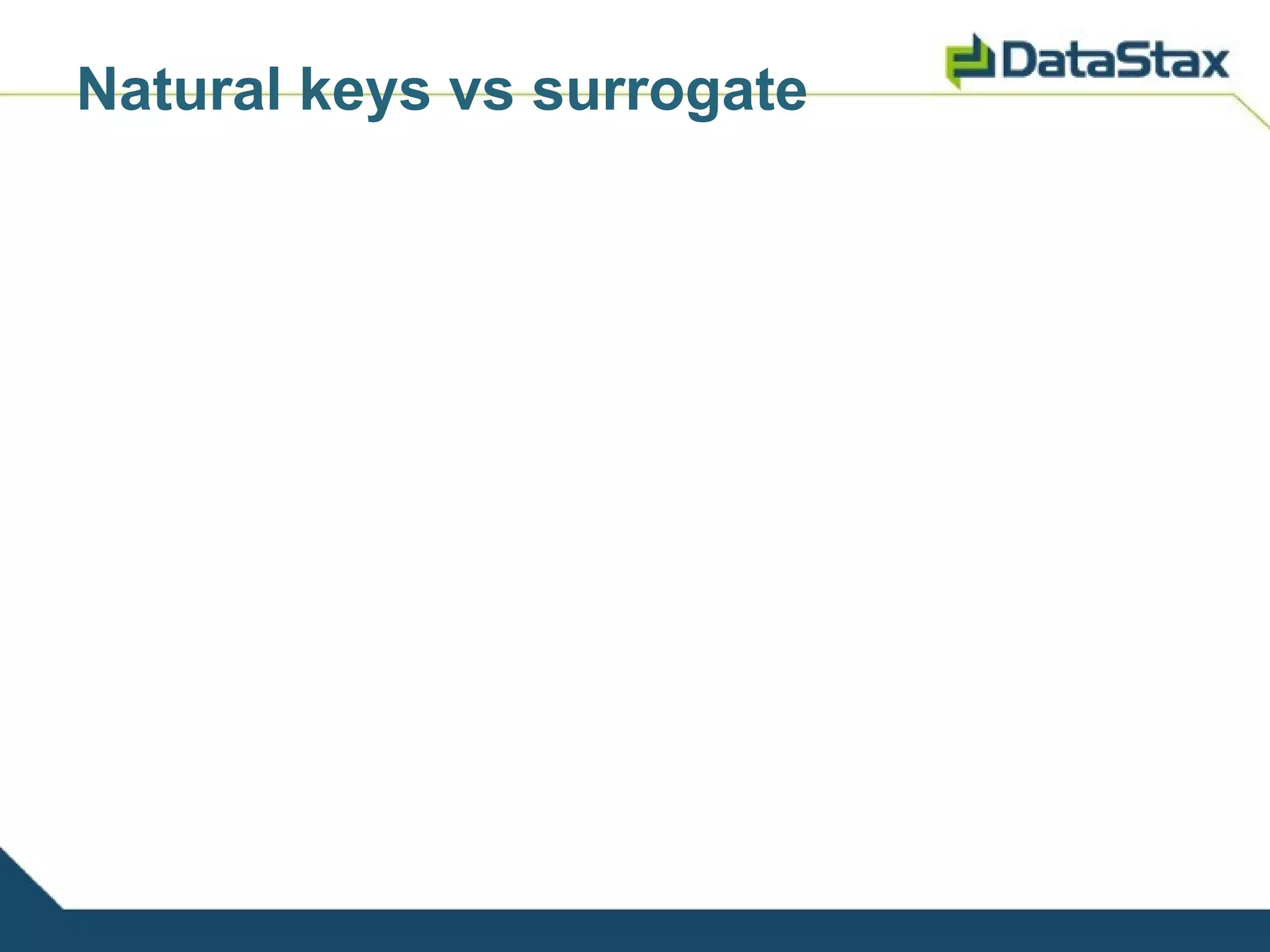
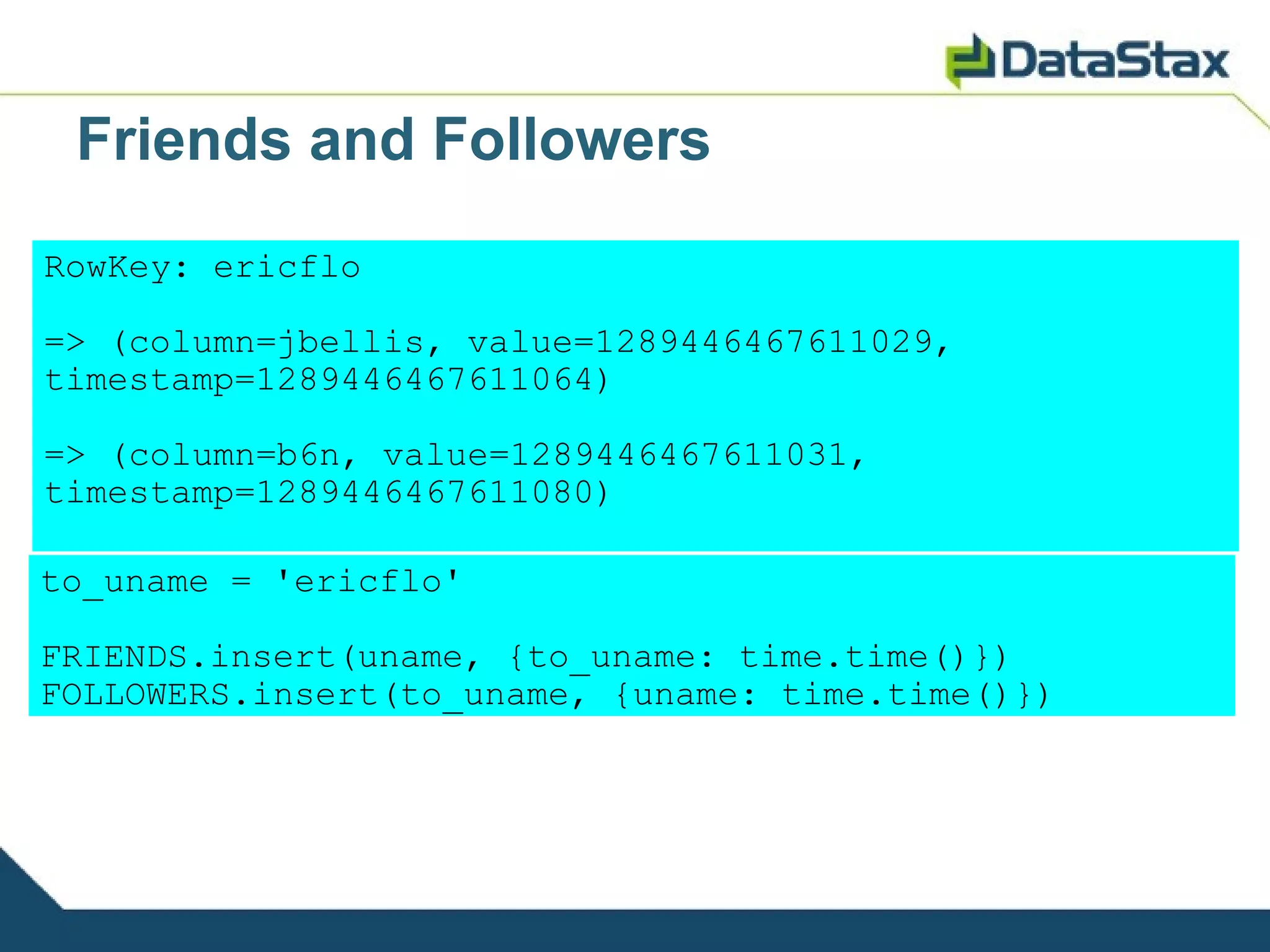
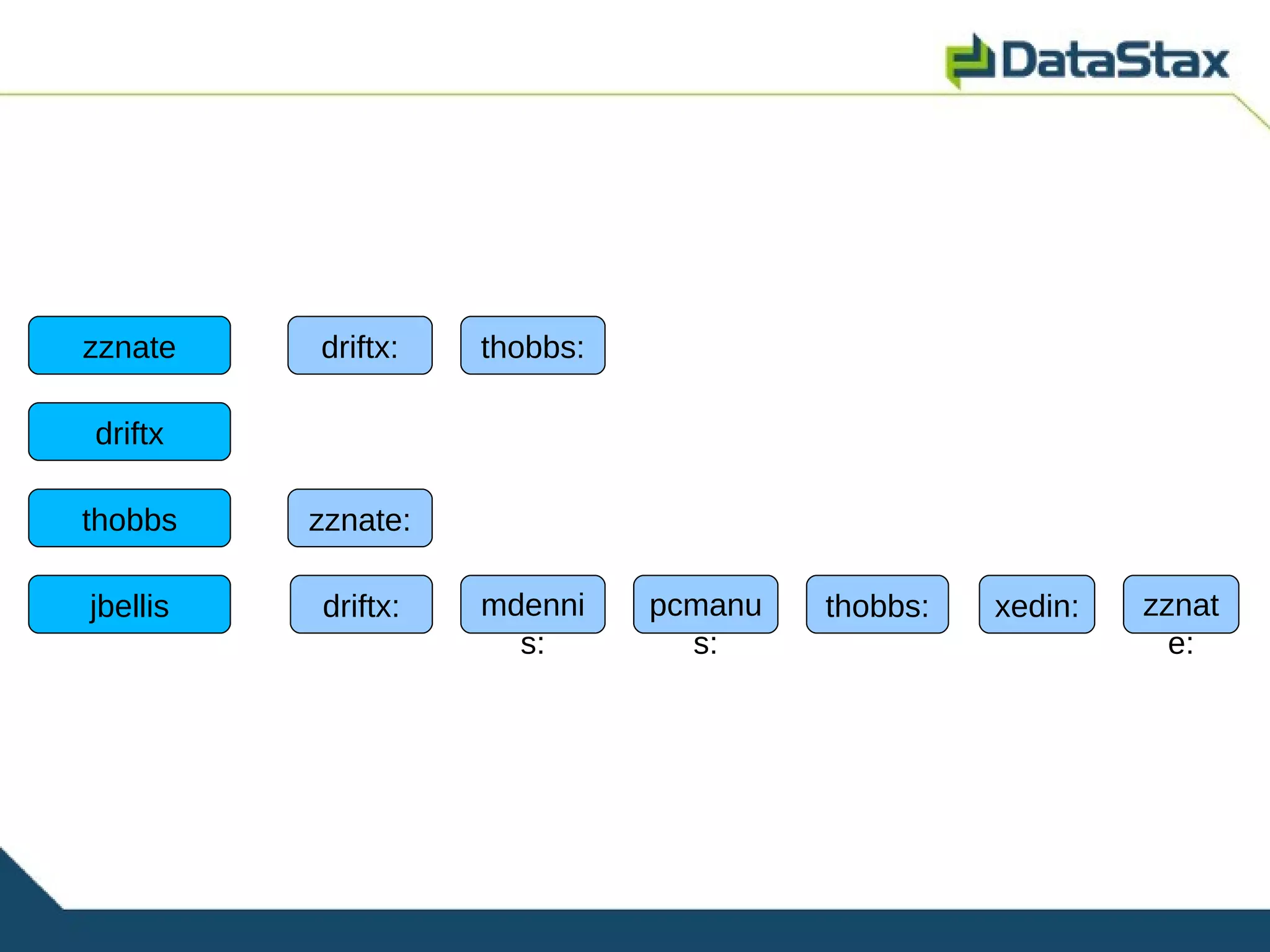

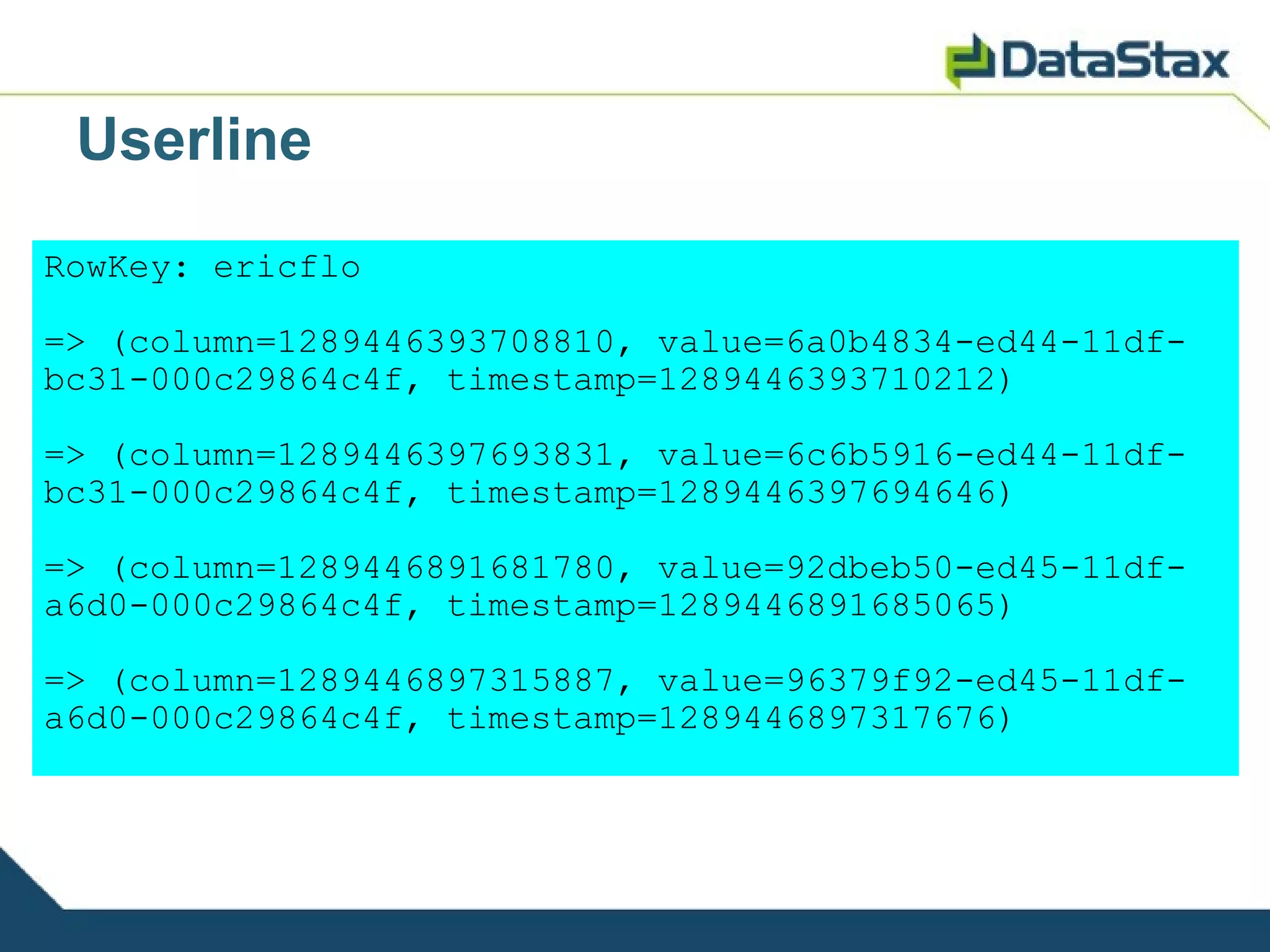
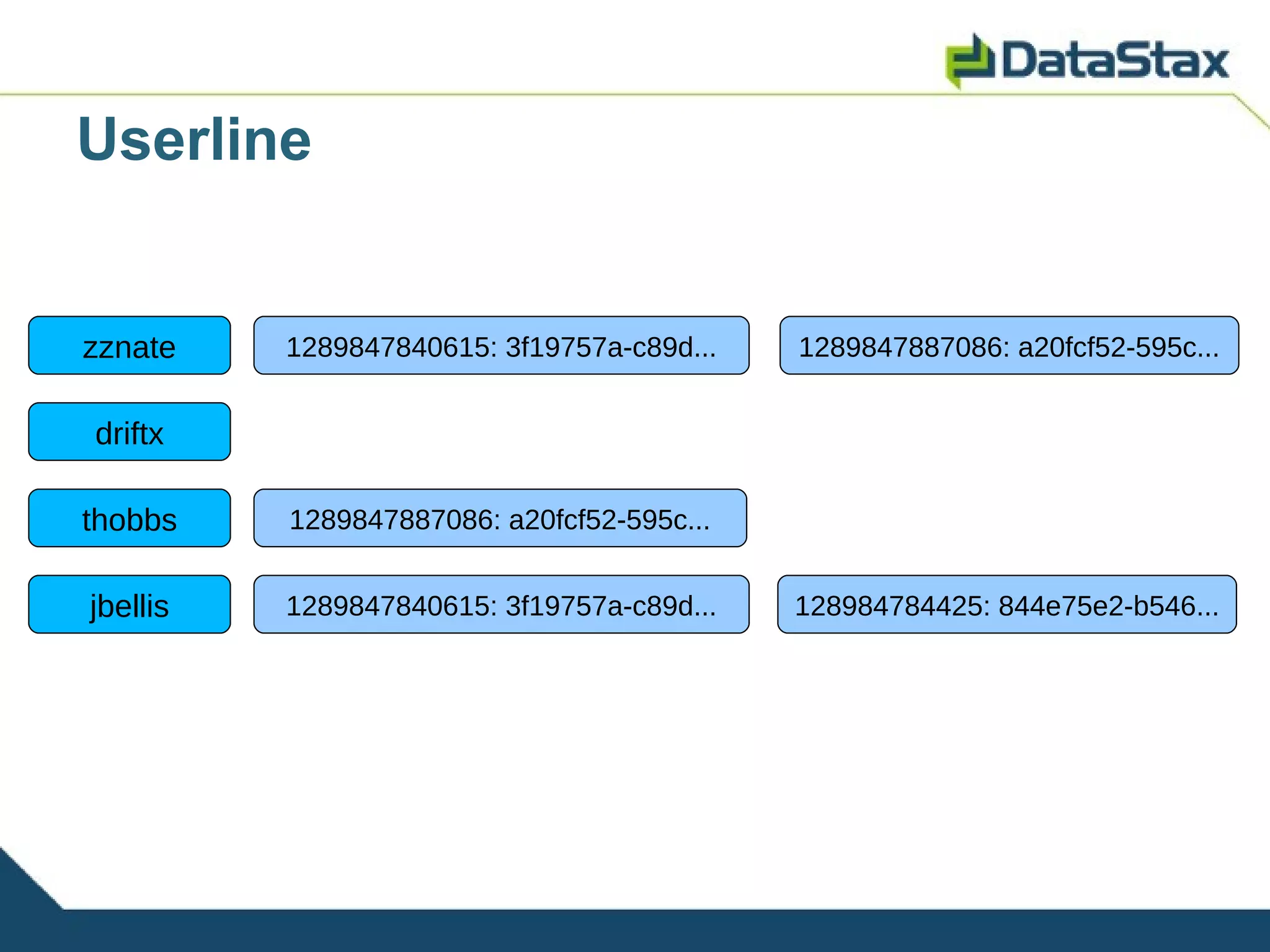


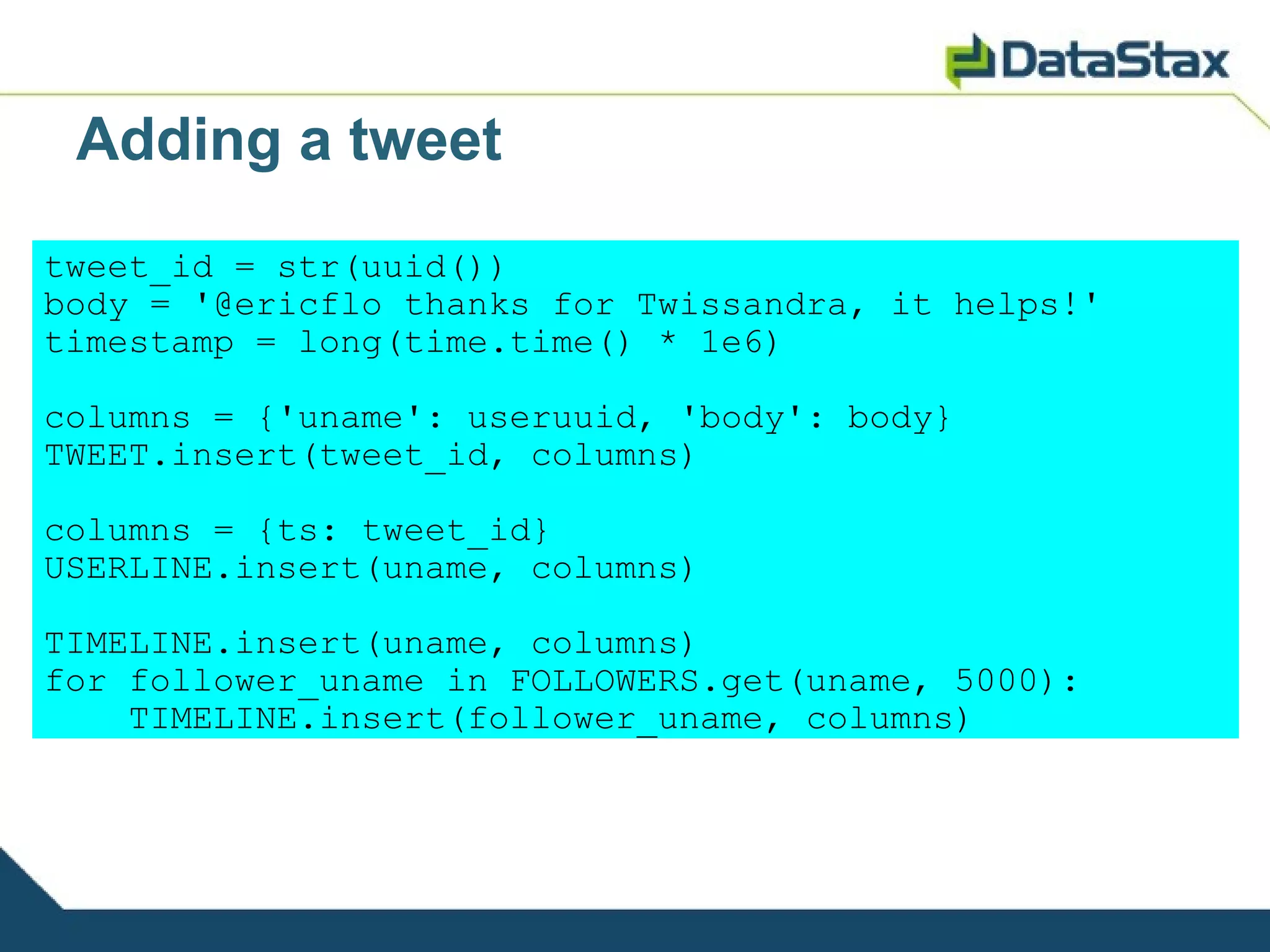
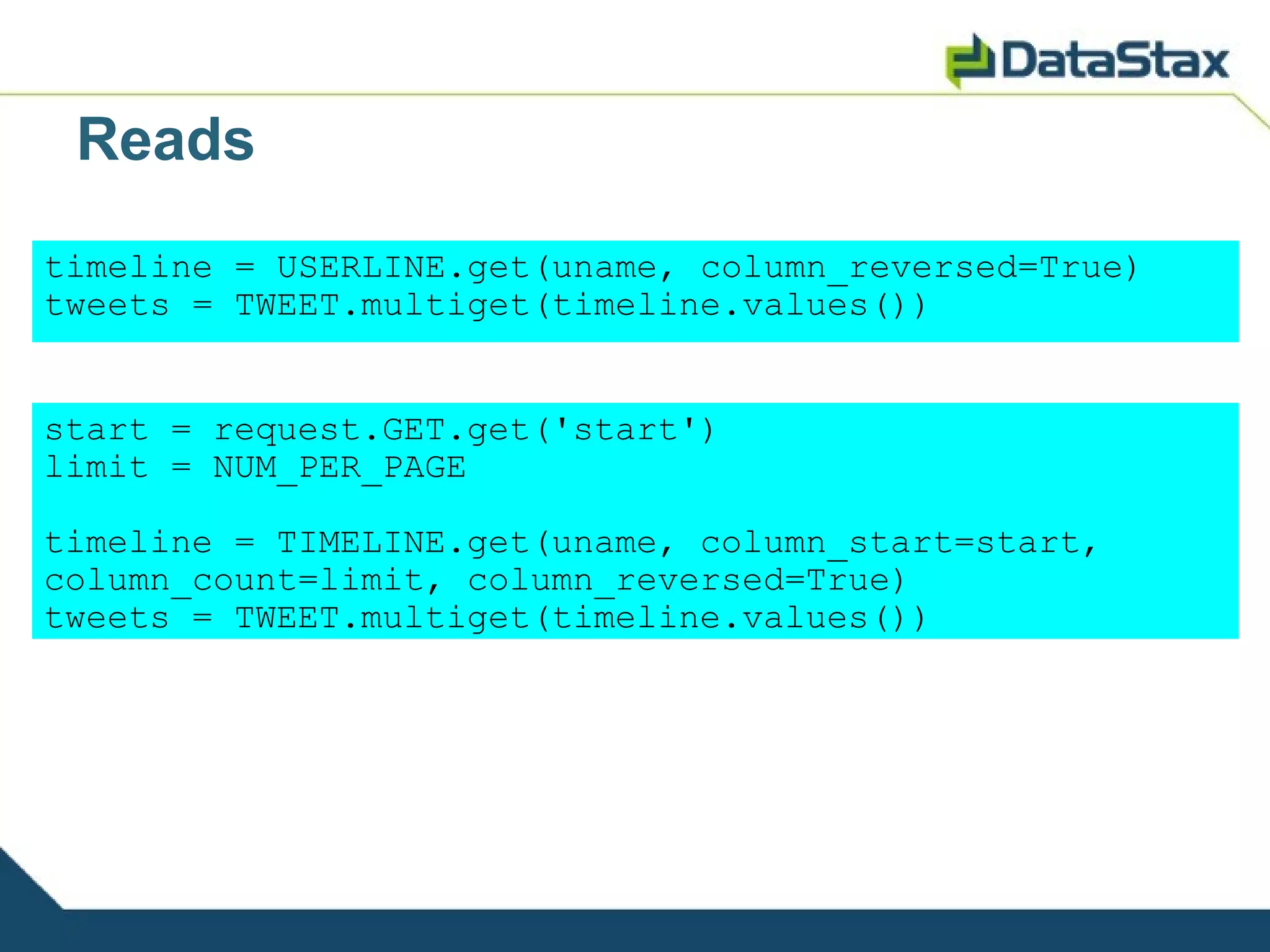
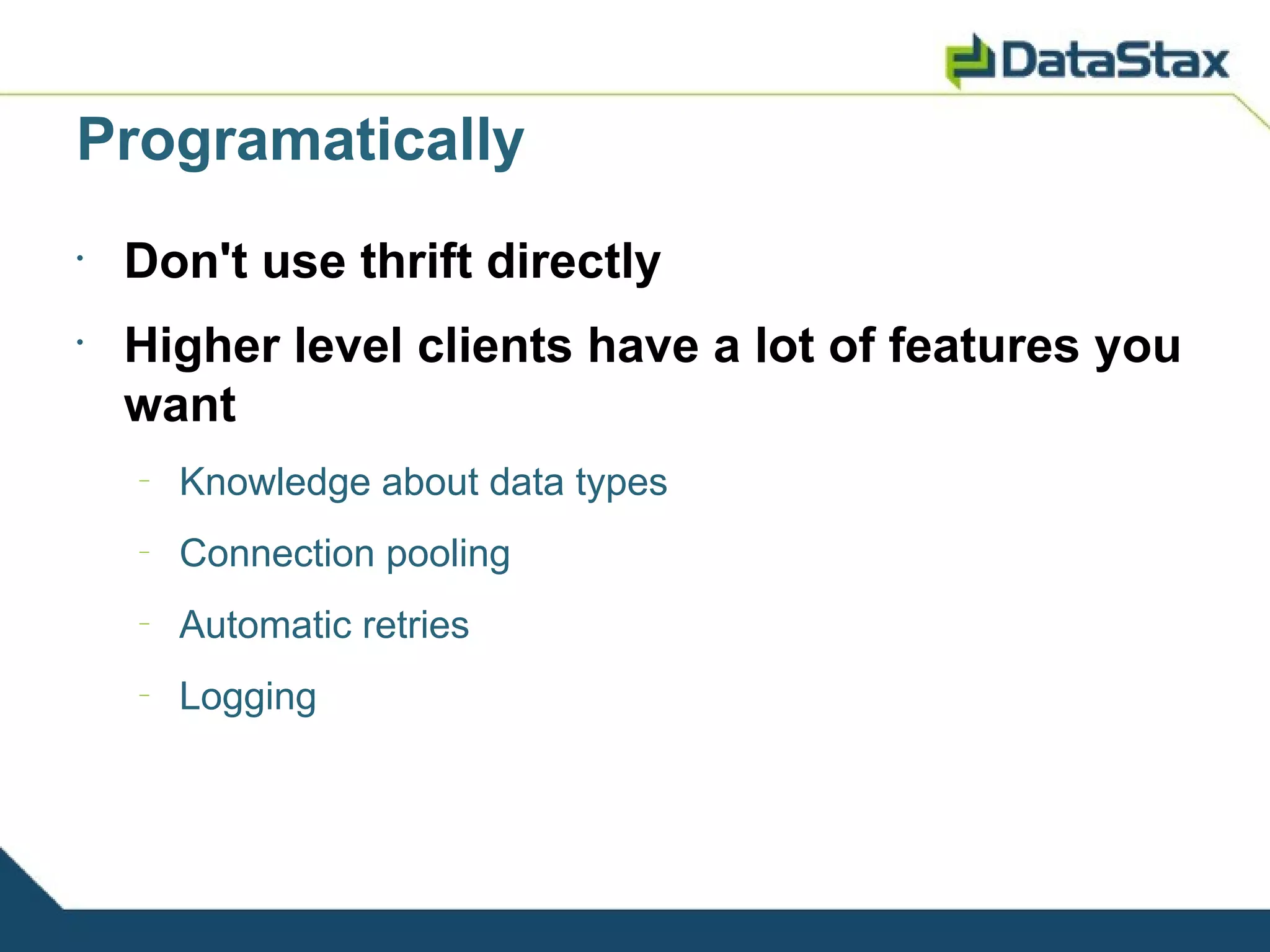
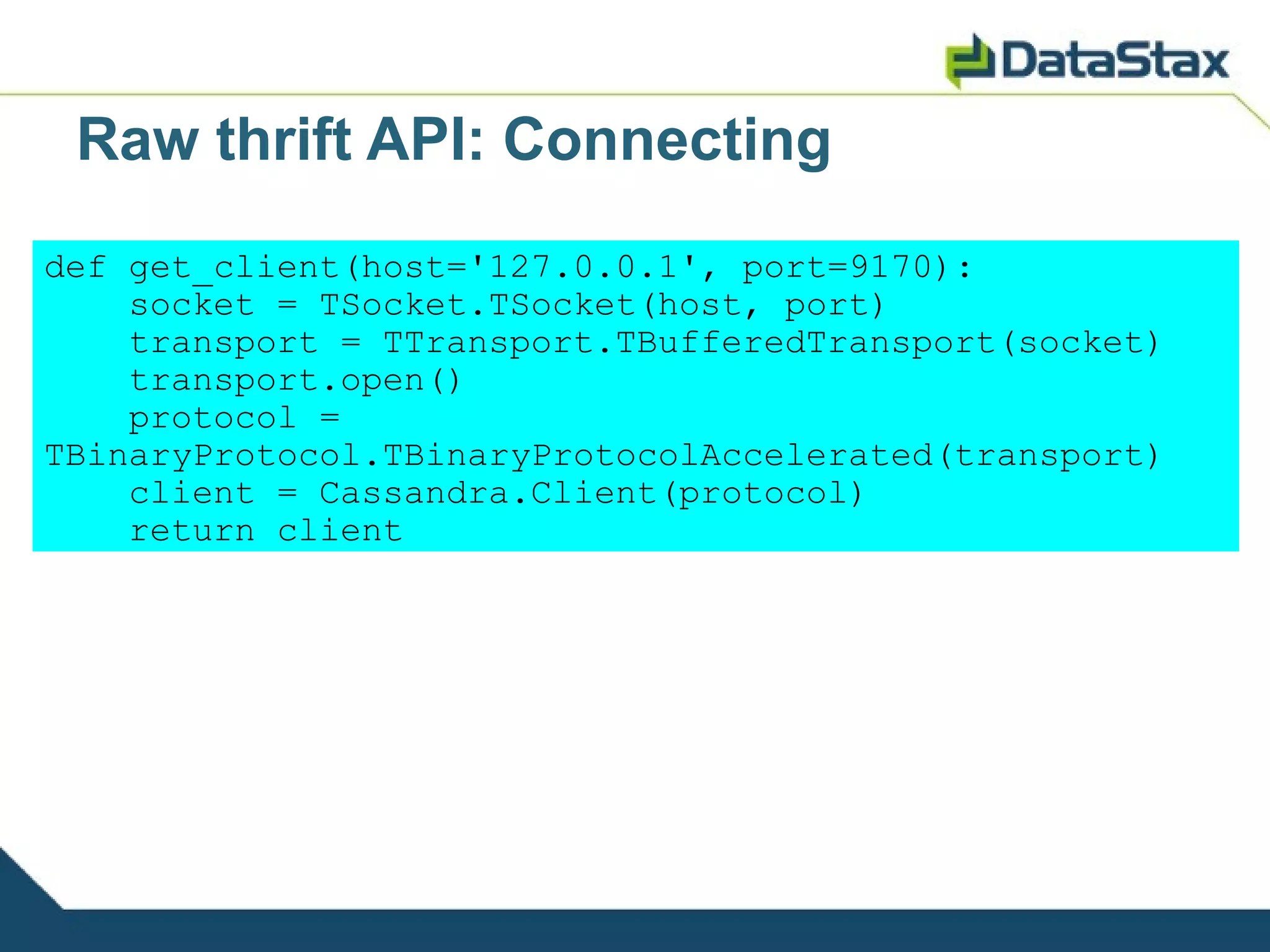
![Raw thrift API: Inserting
data = {'id': useruuid, ...}
columns = [Column(k, v, time.time())
for (k, v) in data.items()]
mutations = [Mutation(ColumnOrSuperColumn(column=c))
for c in columns]
rows = {useruuid: {'User': mutations}}
client.batch_mutate('Twissandra', rows,
ConsistencyLevel.ONE)](https://image.slidesharecdn.com/slides-110202161707-phpapp01/75/Cassandra-Tutorial-67-2048.jpg)
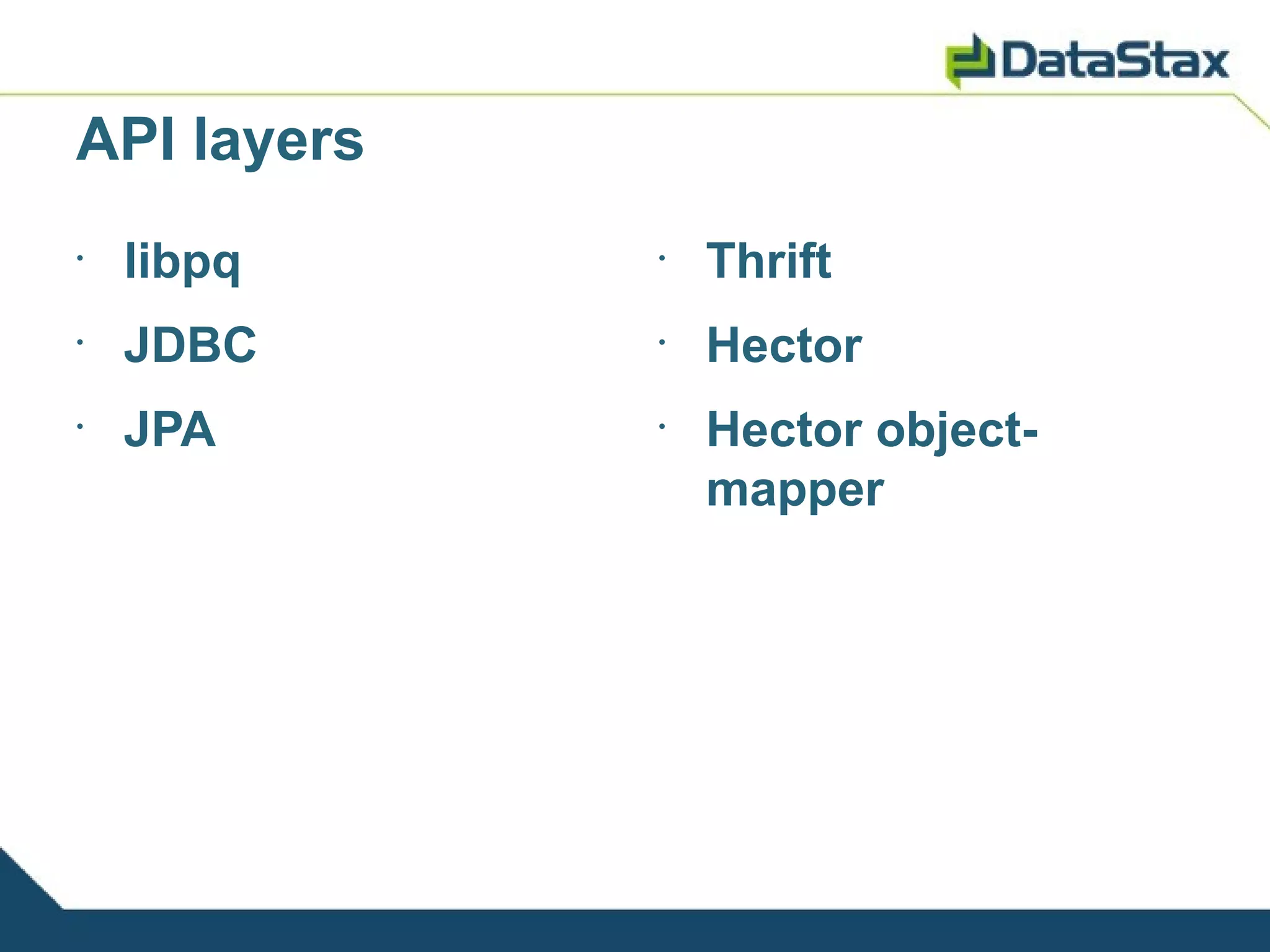
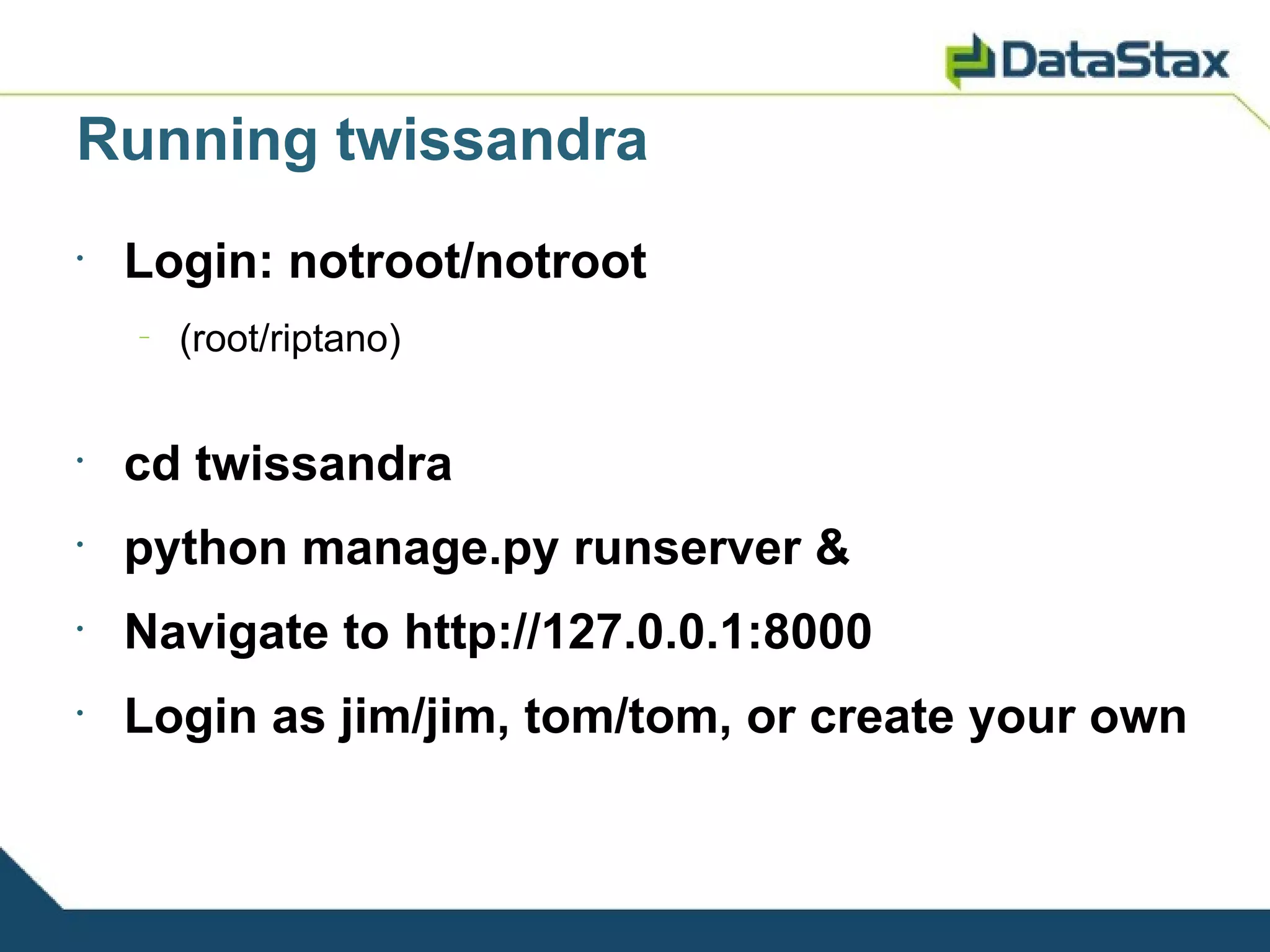
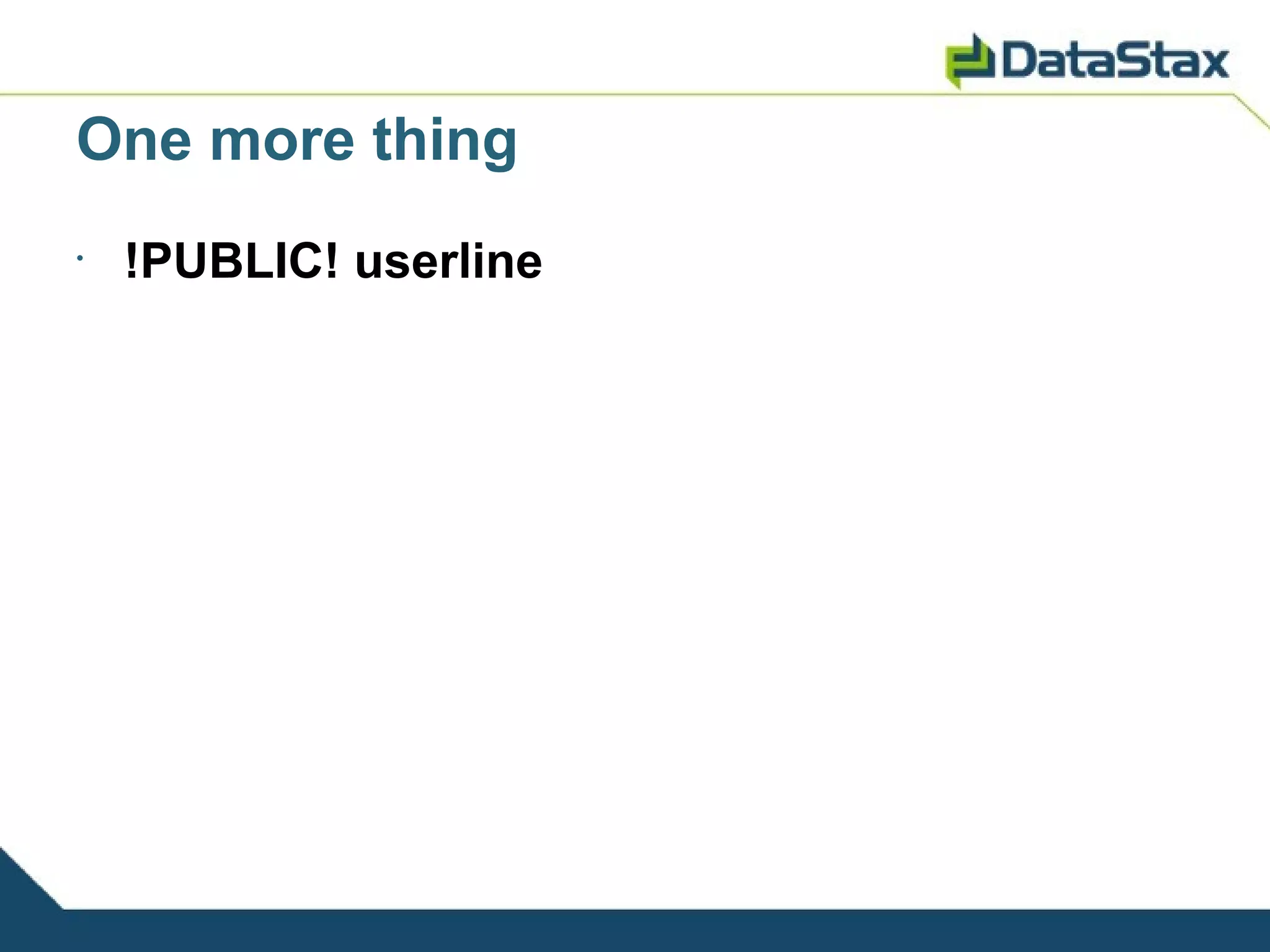
![Exercise 1
•
$ cassandra-cli --host localhost
•
] use twissandra;
] help;
] help list;
] help get;
] help del;
•
Delete the most recent tweet
–
How would you find this w/o looking at the UI?](https://image.slidesharecdn.com/slides-110202161707-phpapp01/75/Cassandra-Tutorial-71-2048.jpg)
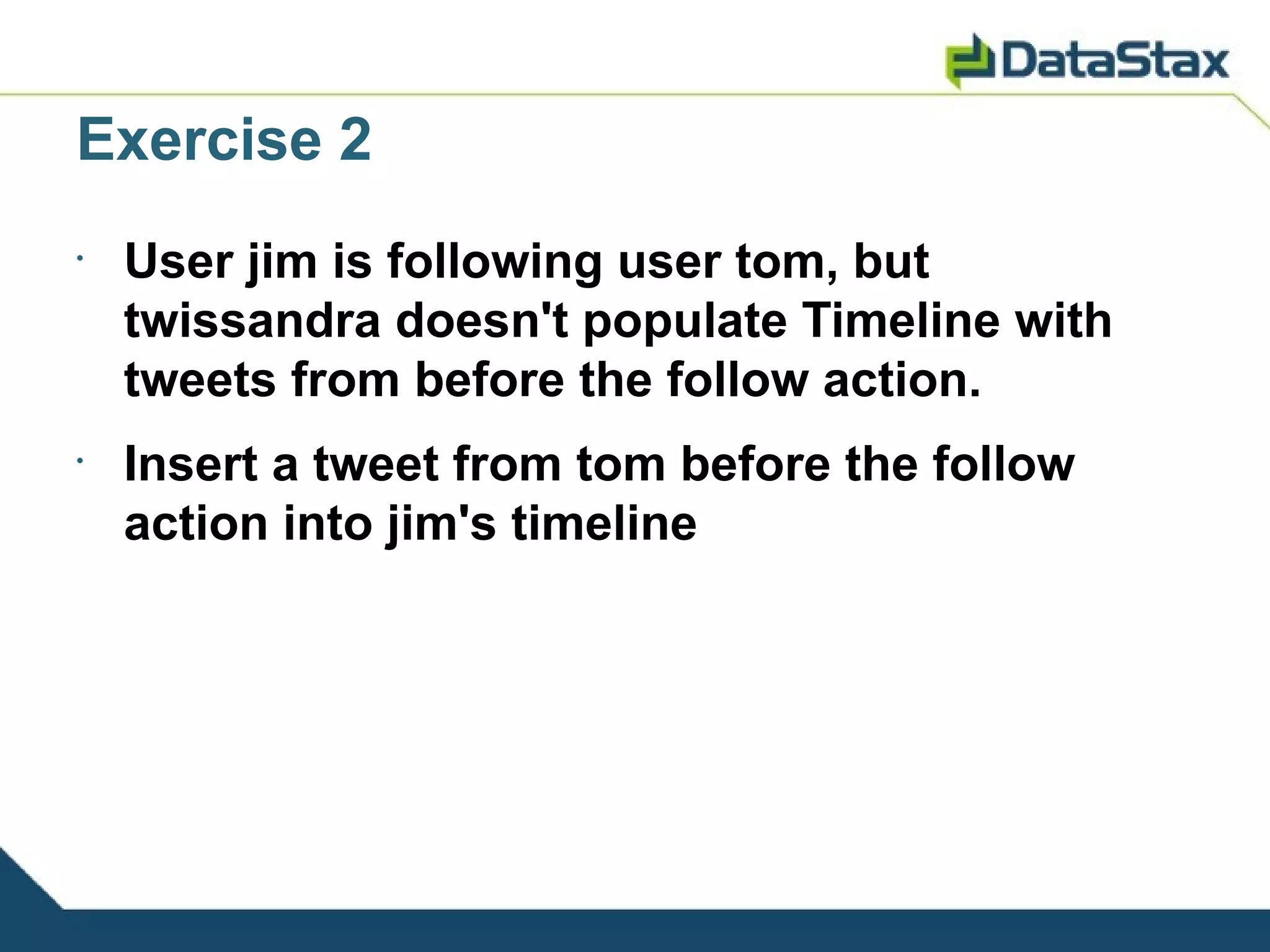

![Exercise 3
•
Add a state column to the Tweet column
family definition, with an index (index_type
KEYS).
–
Hint: a no-op update column family on Tweet would be
update column family Tweet with
column_metadata=[{column_name:body,
validation_class:UTF8Type}, {column_name:username,
validation_class:UTF8Type}]
•
Set the state column on several tweets to TX.
Select them using get … where.](https://image.slidesharecdn.com/slides-110202161707-phpapp01/75/Cassandra-Tutorial-74-2048.jpg)

